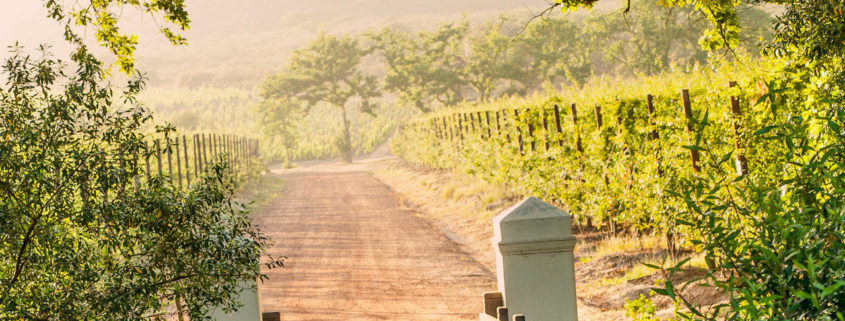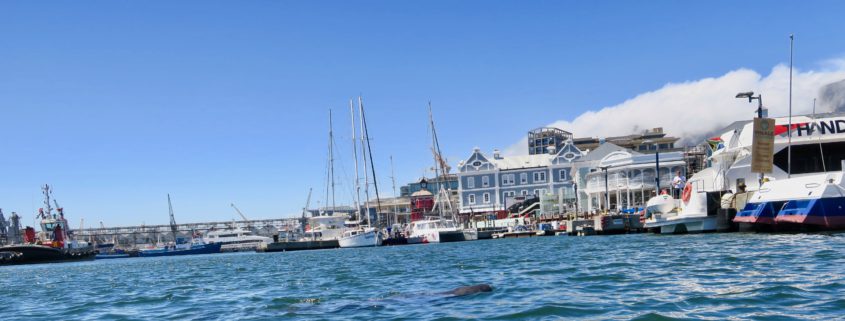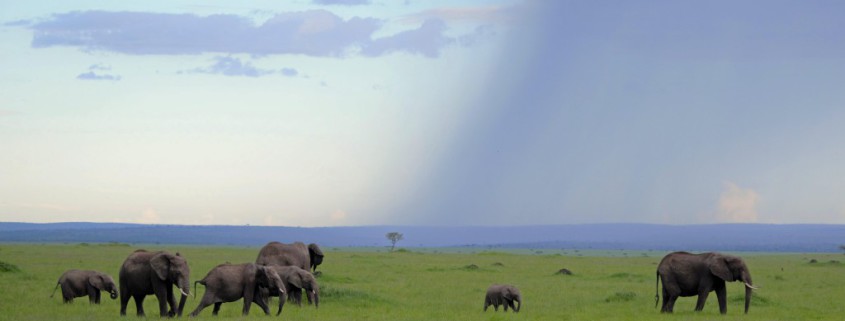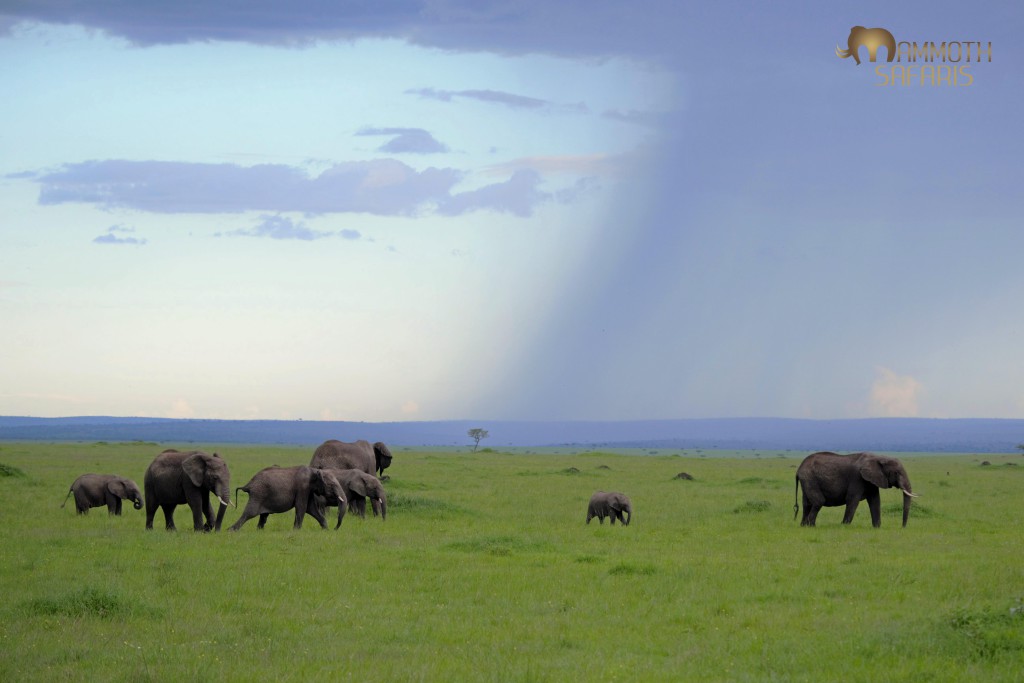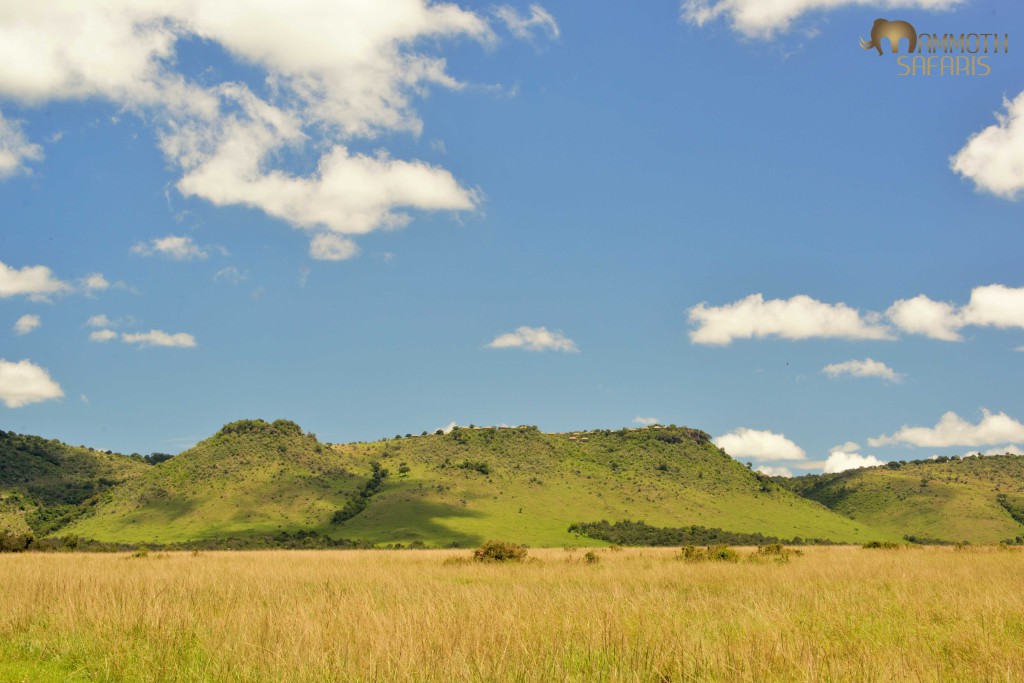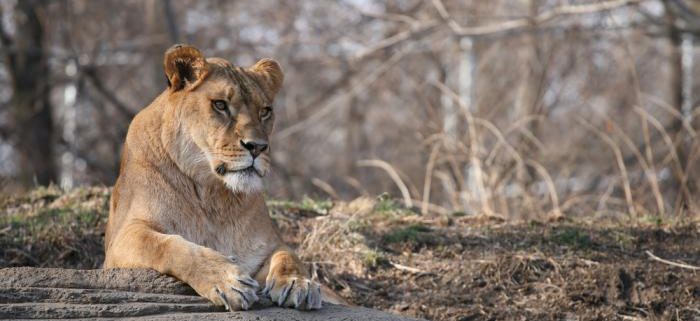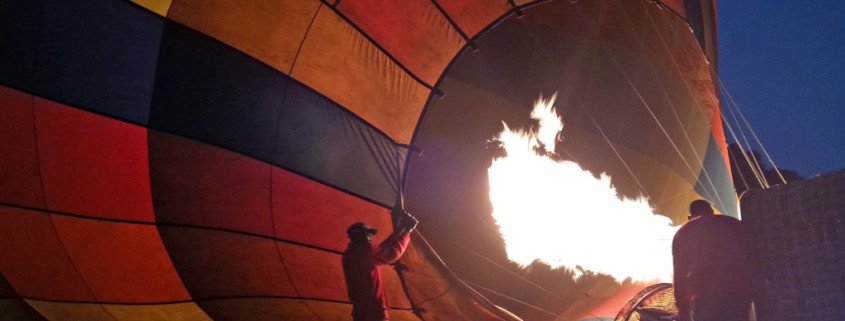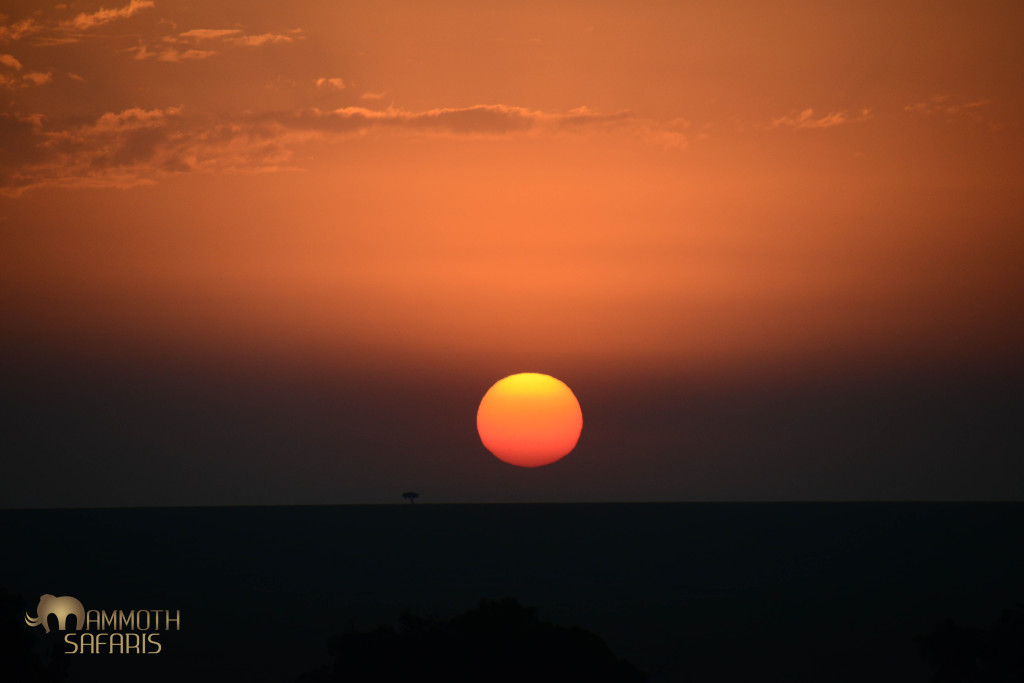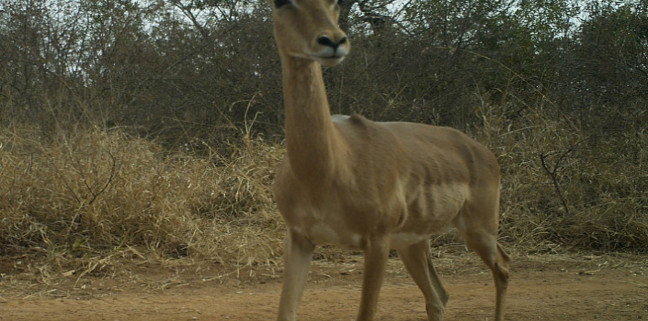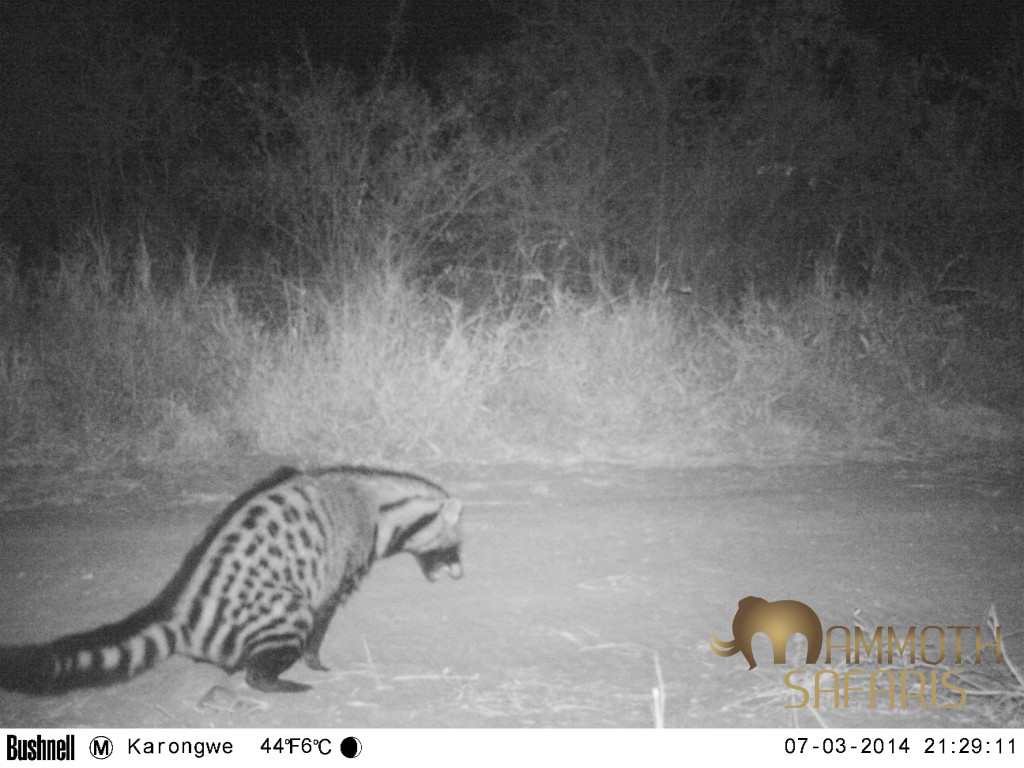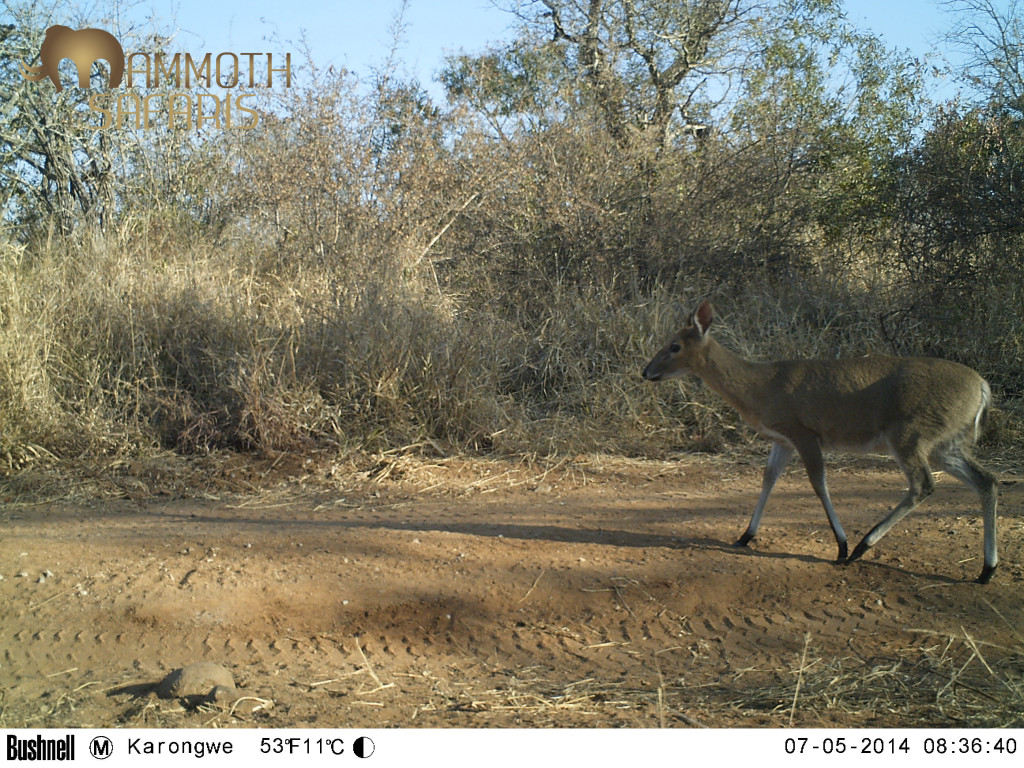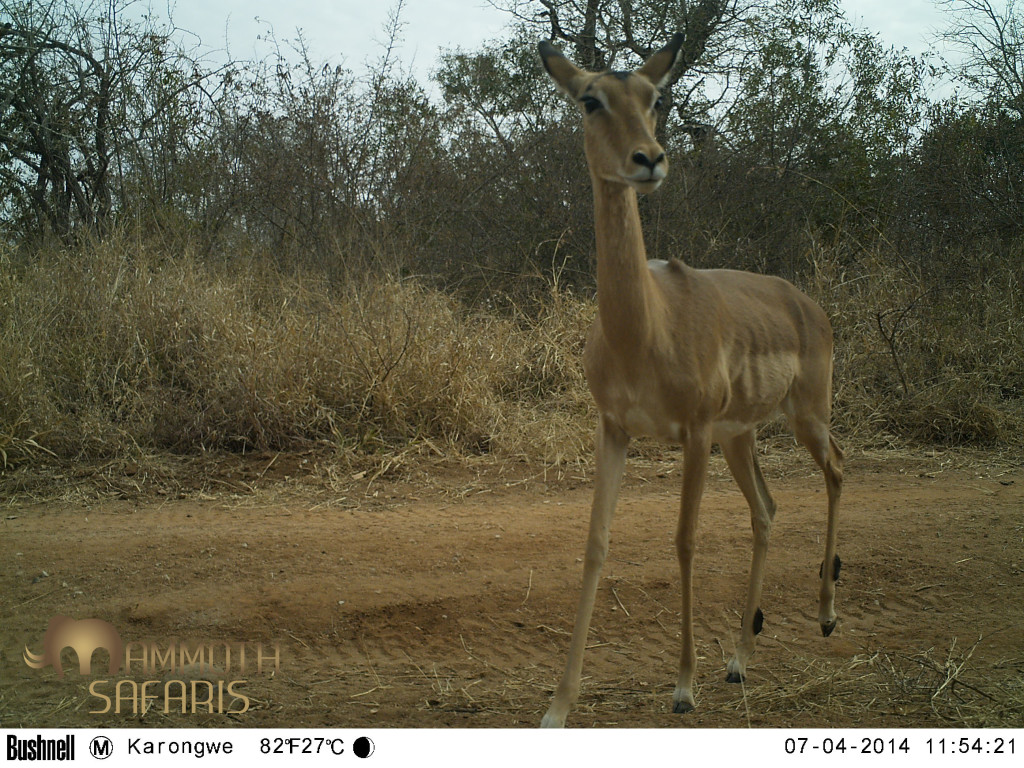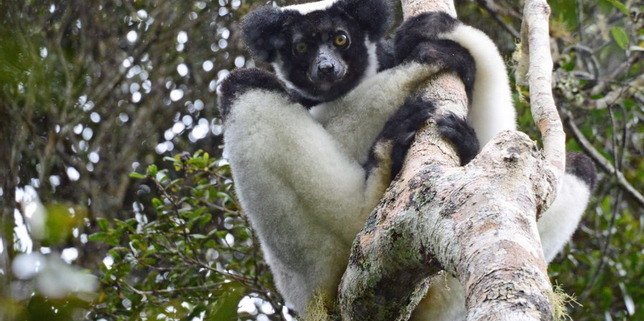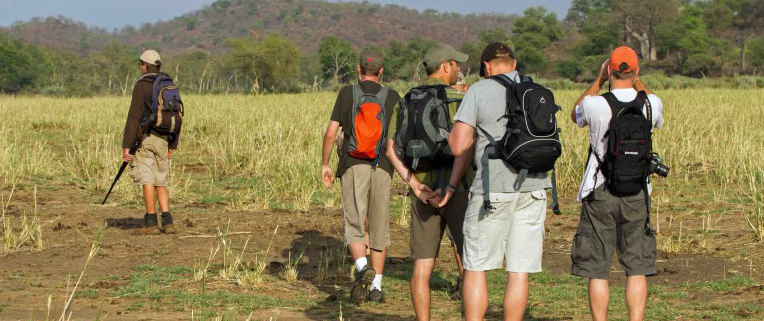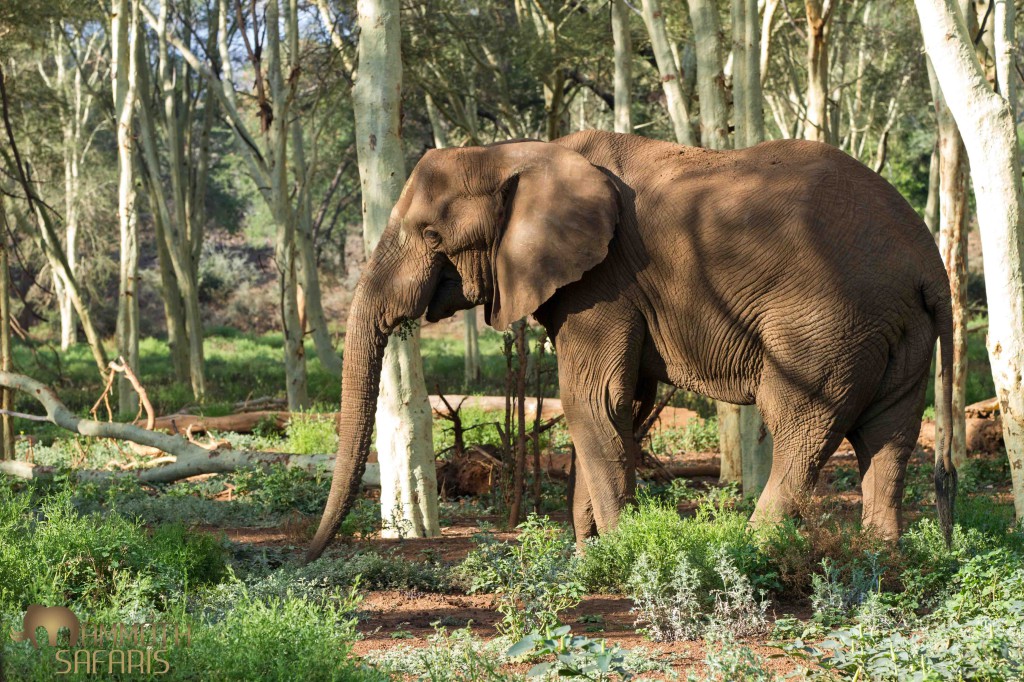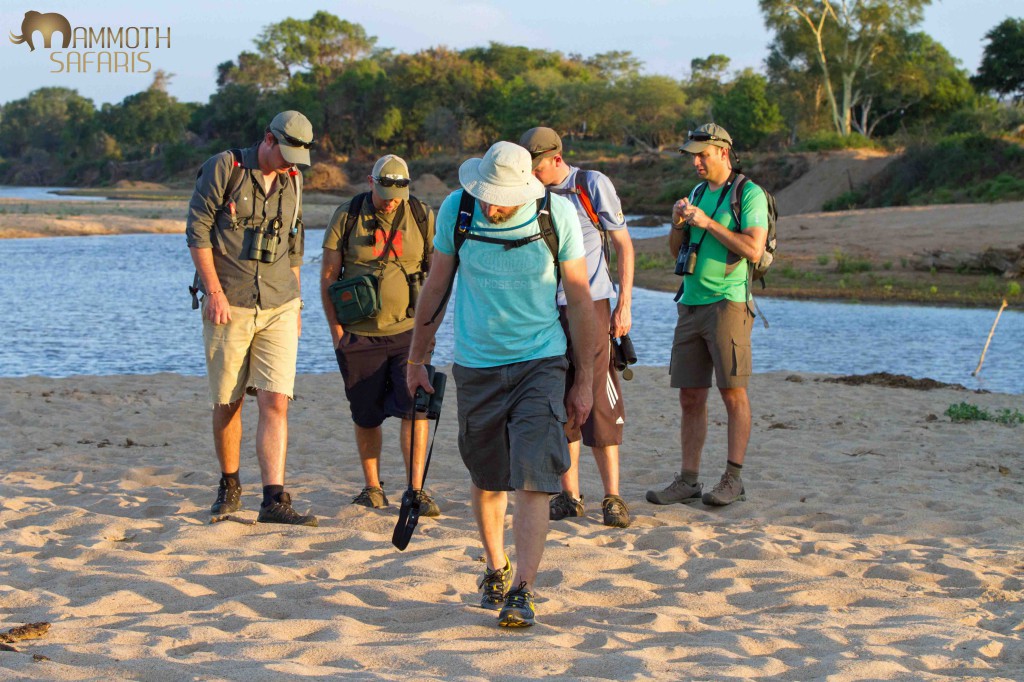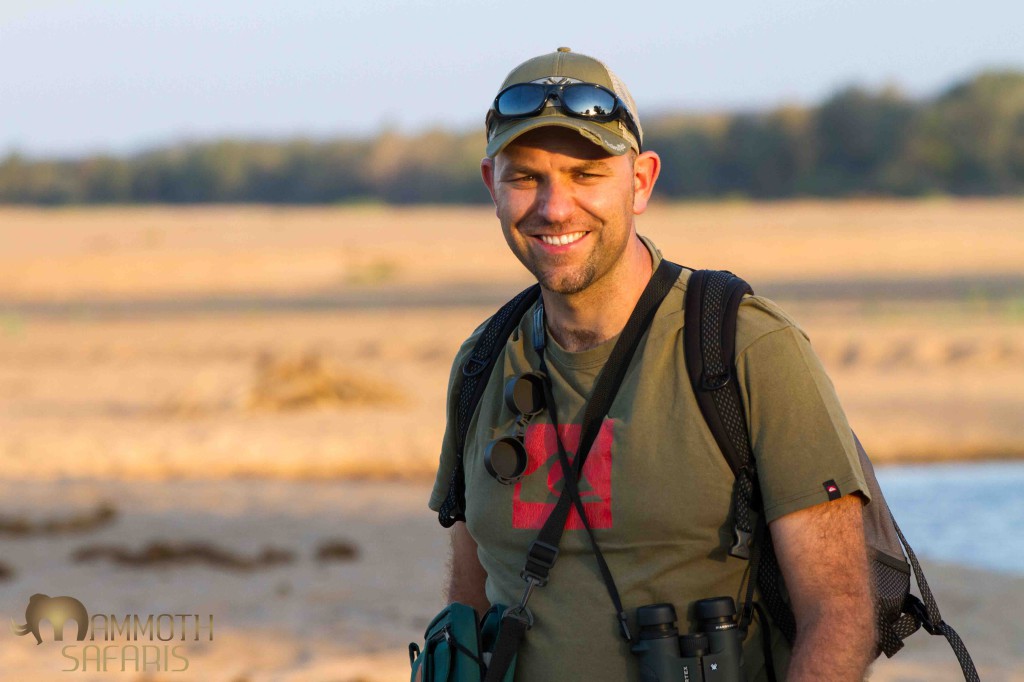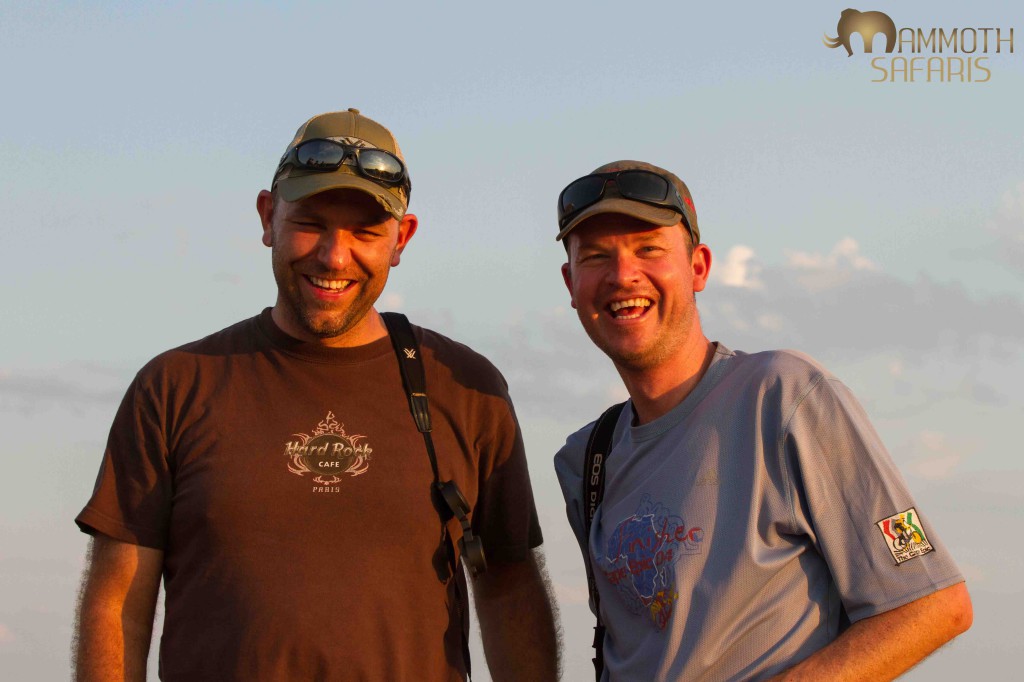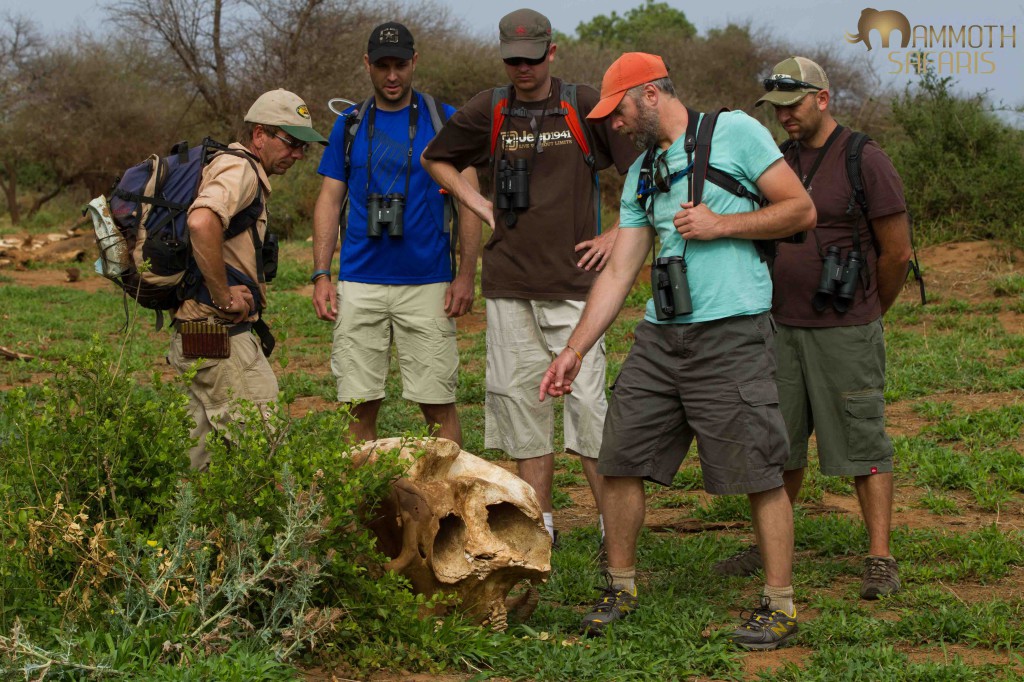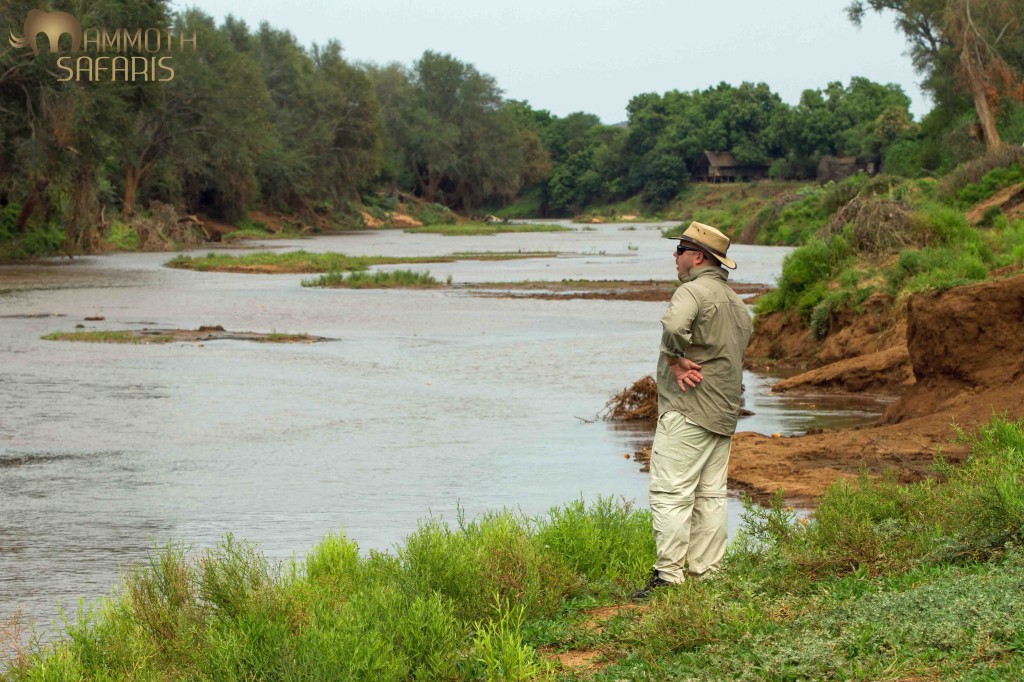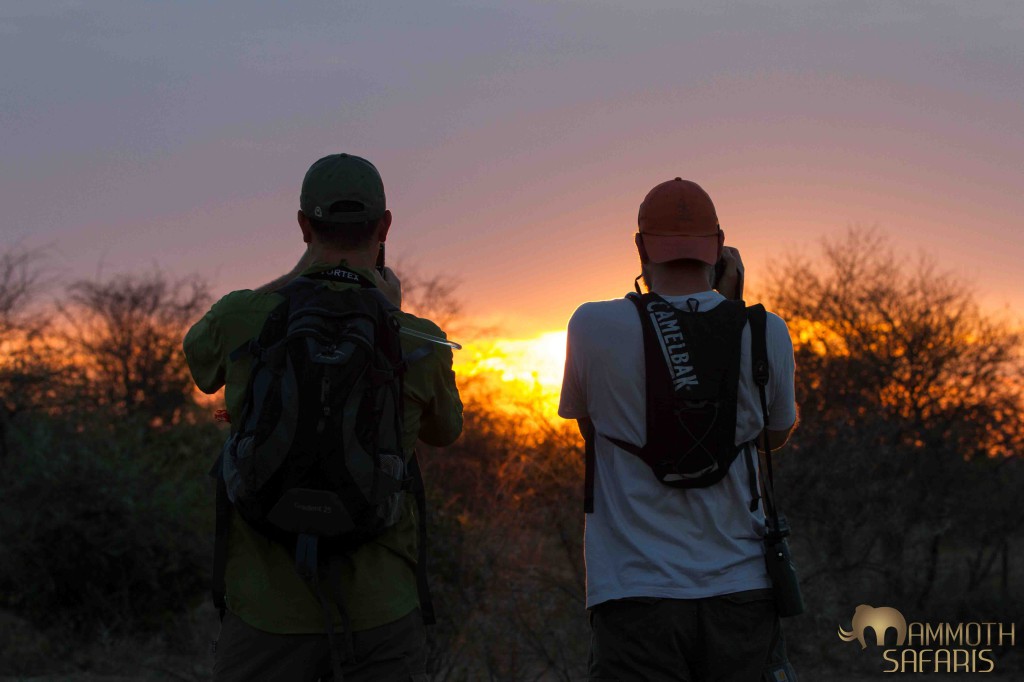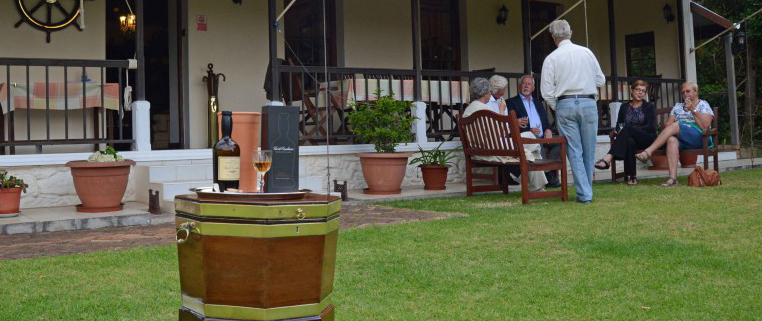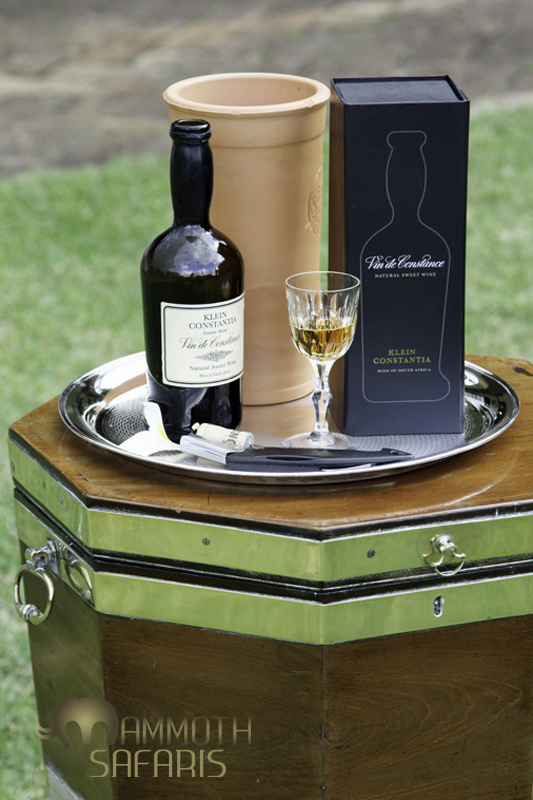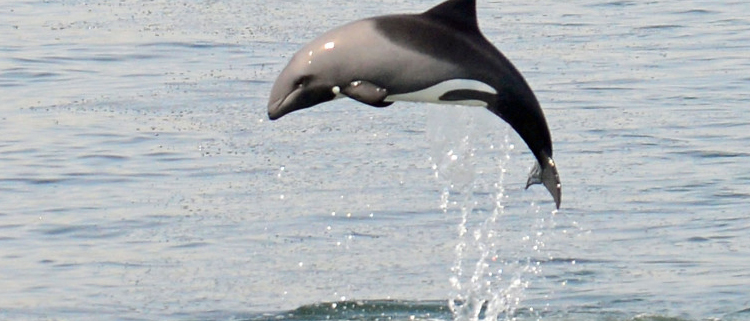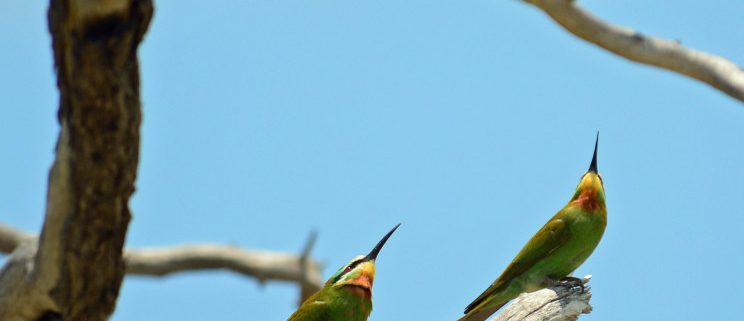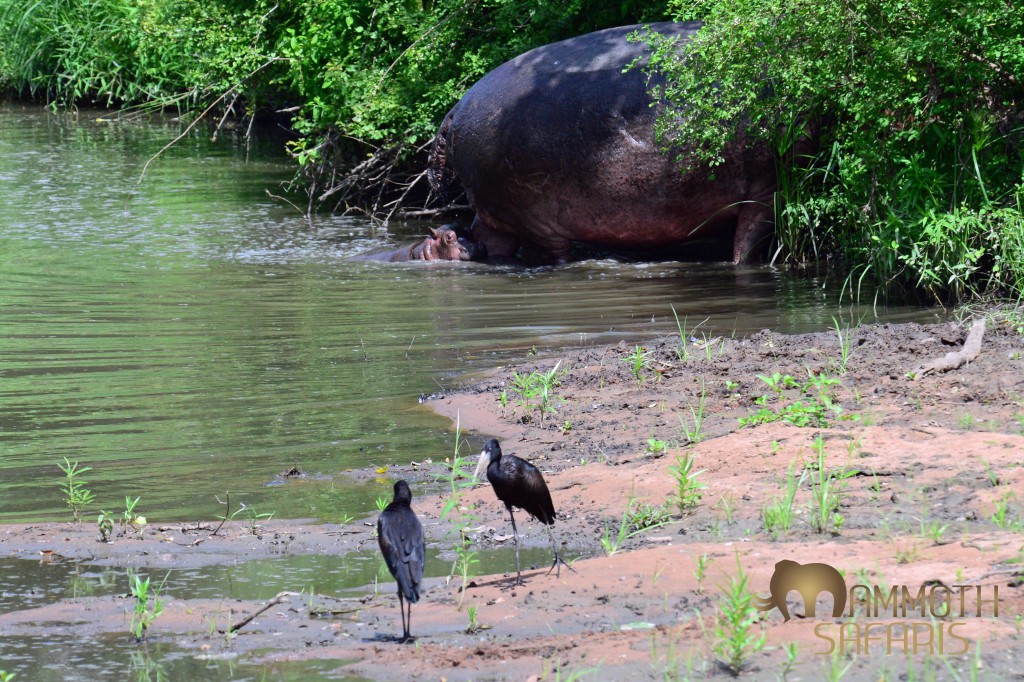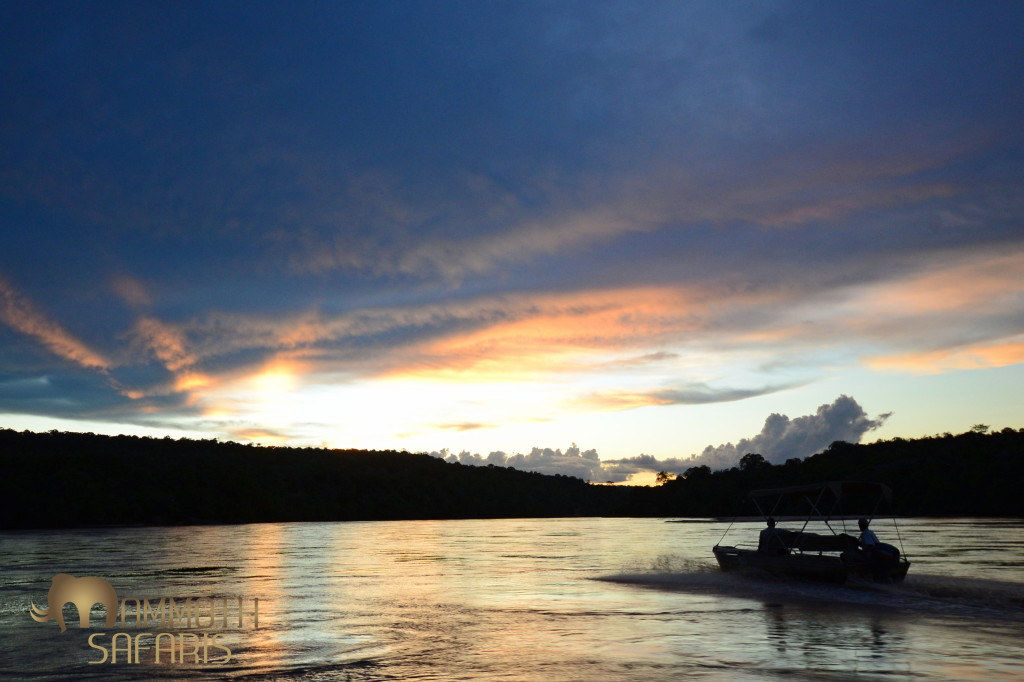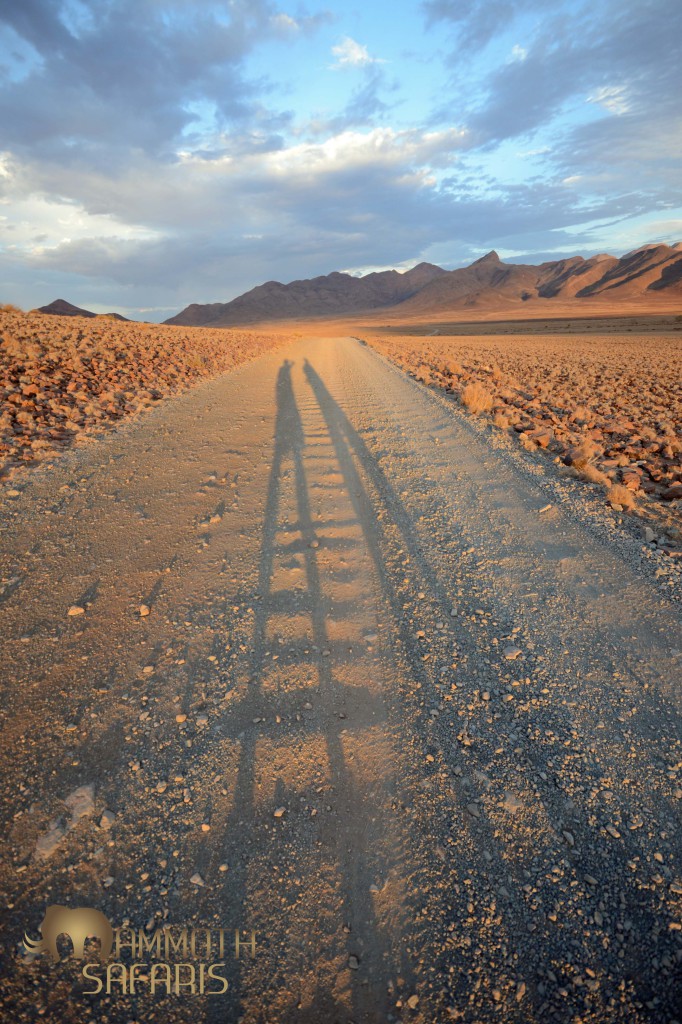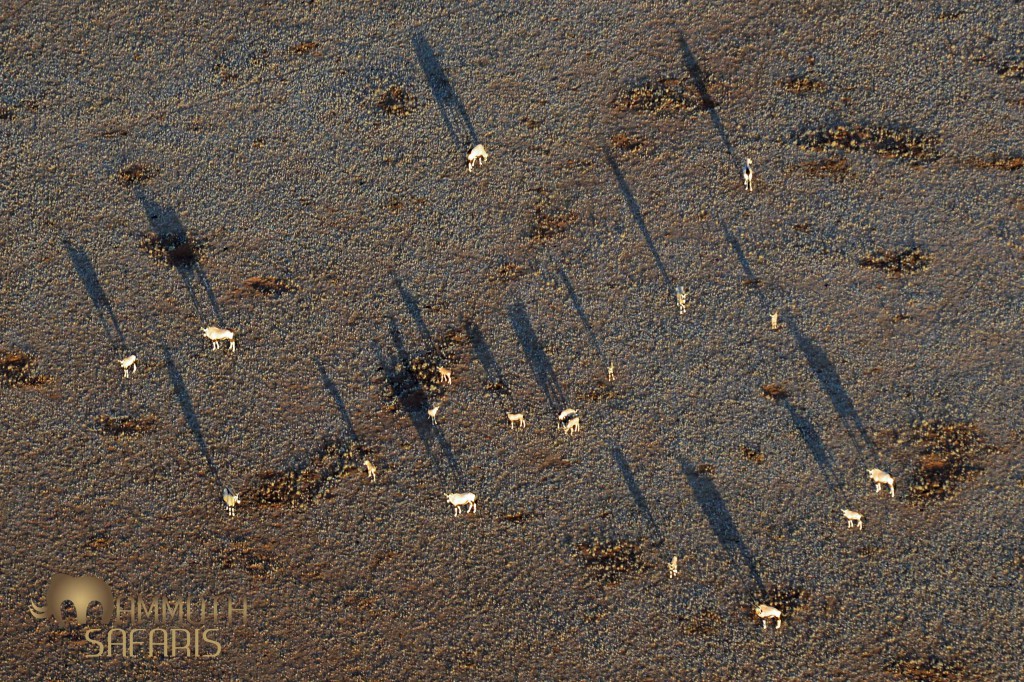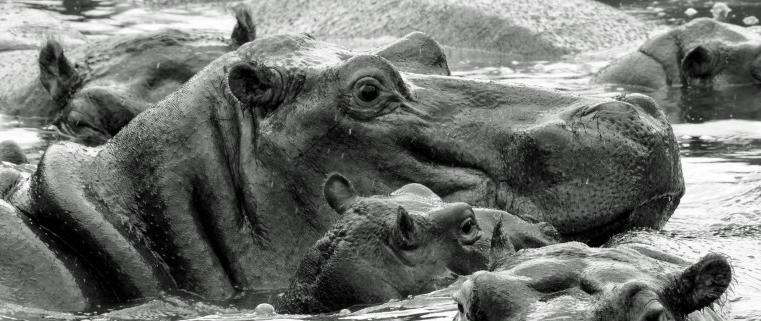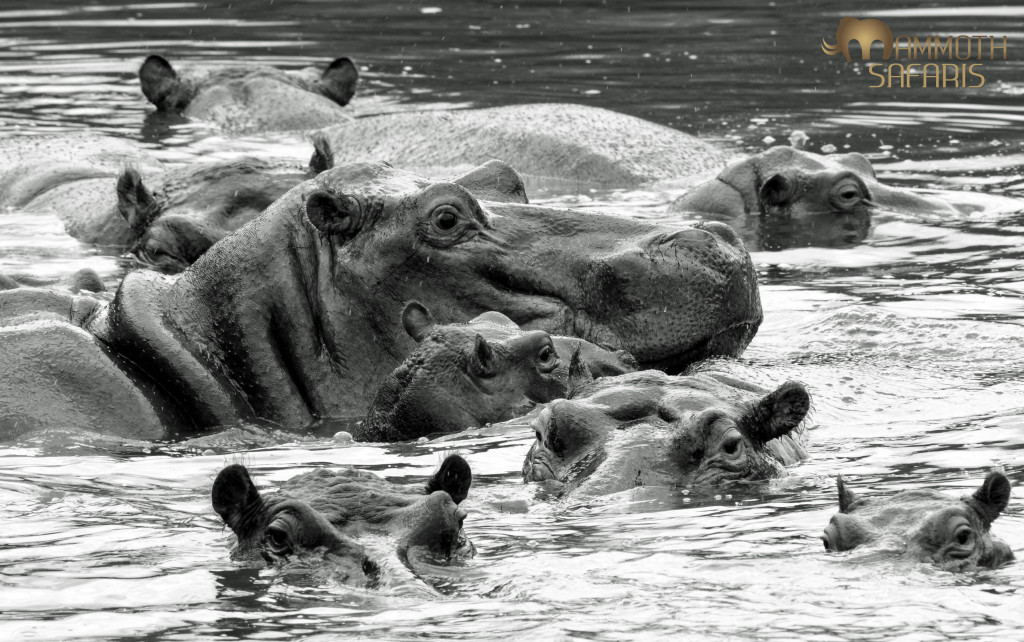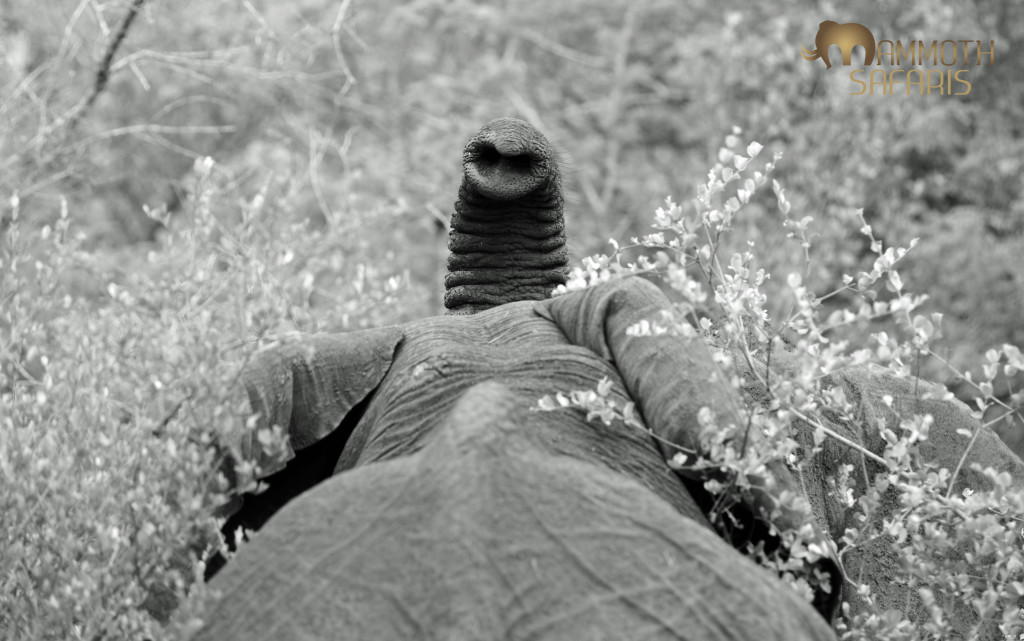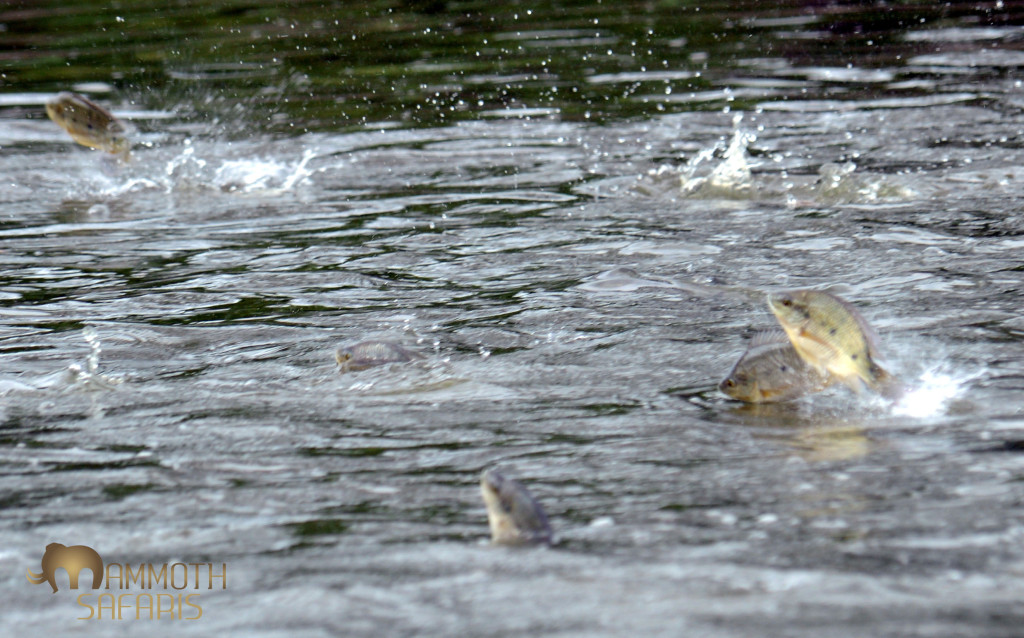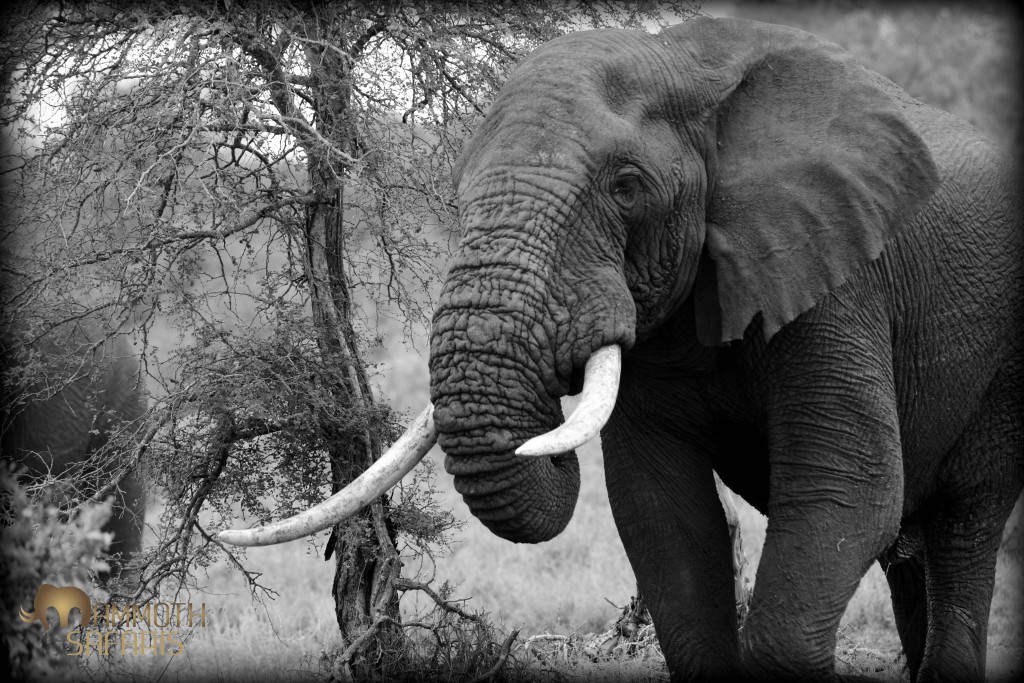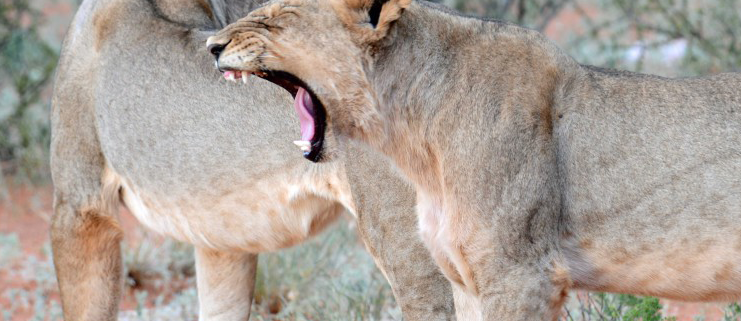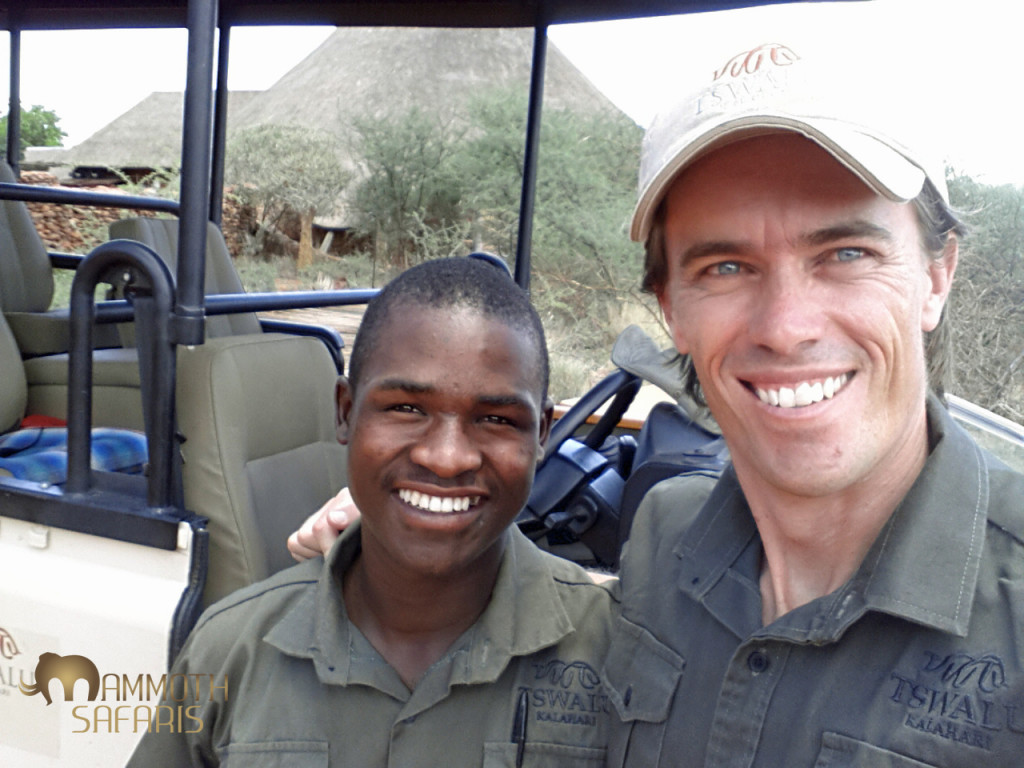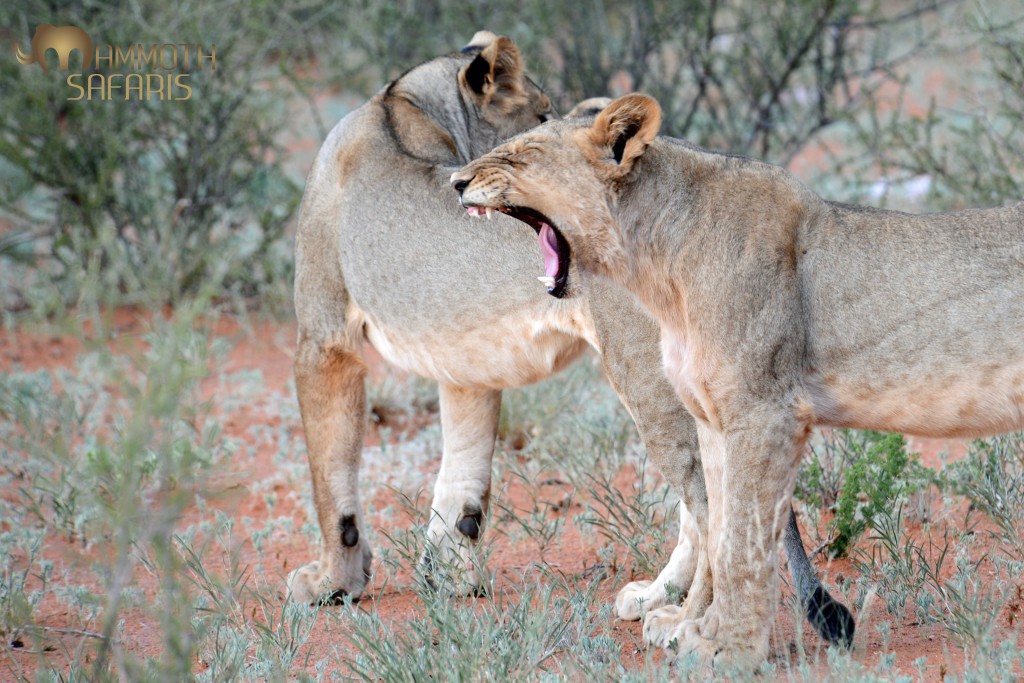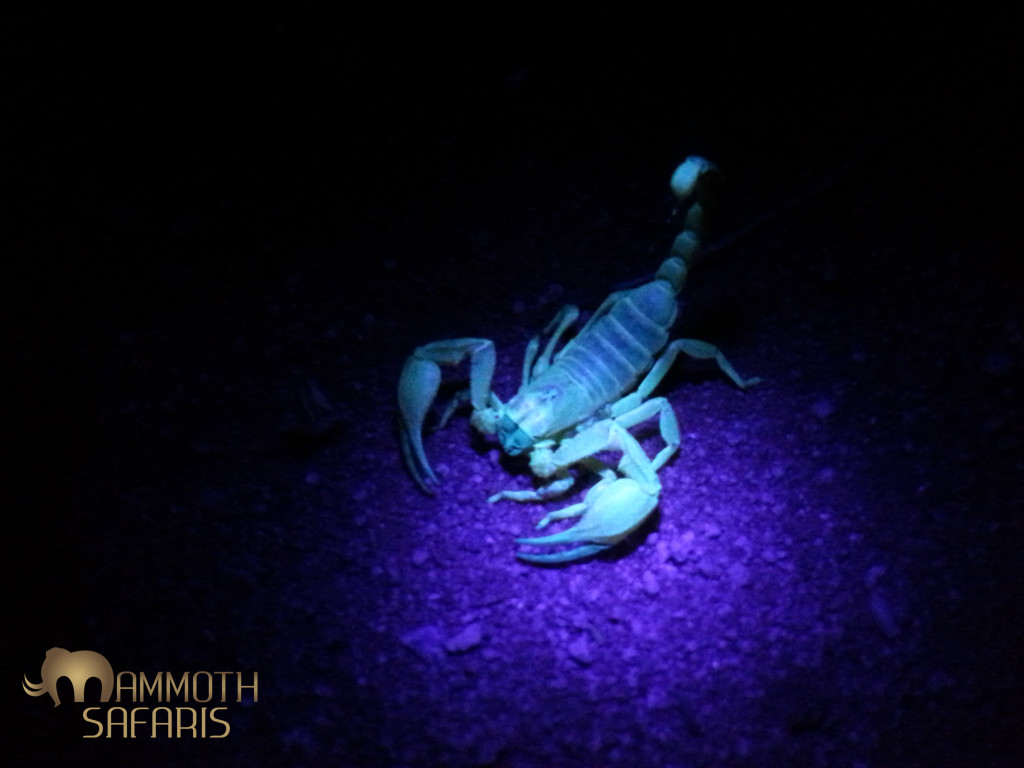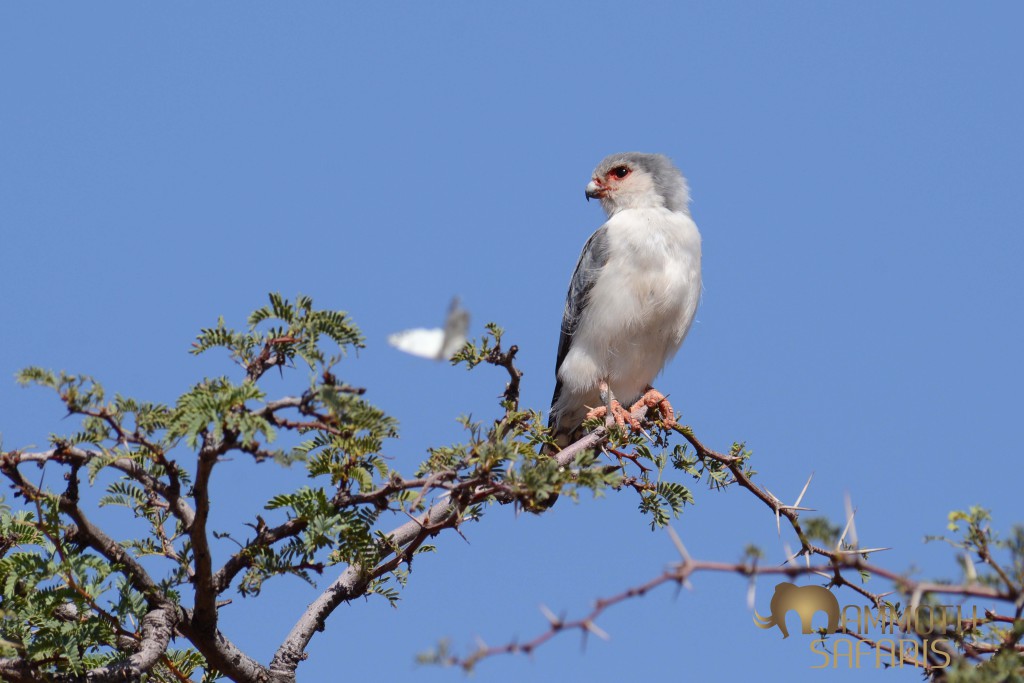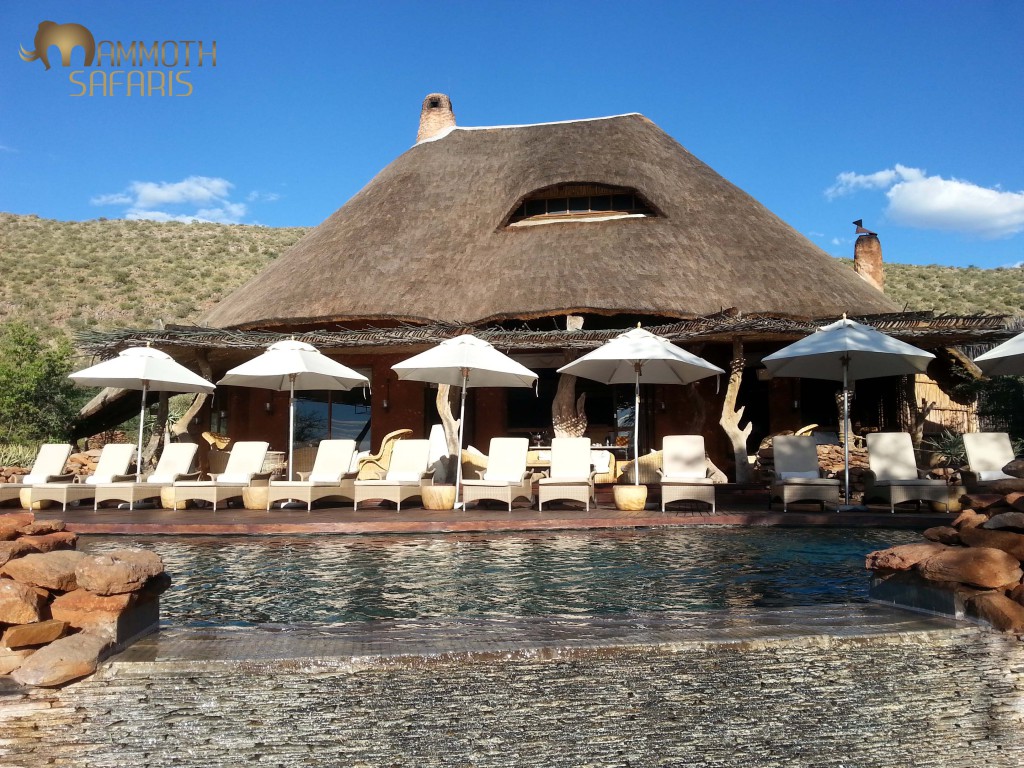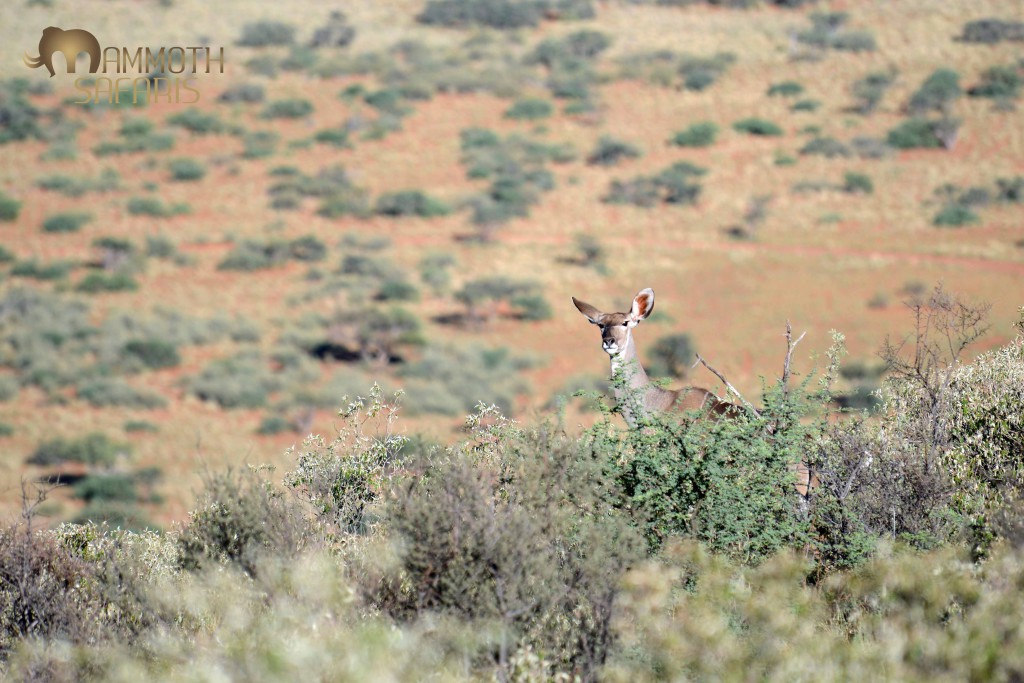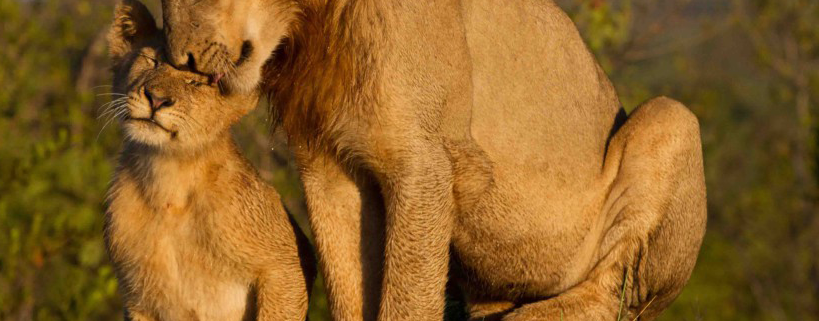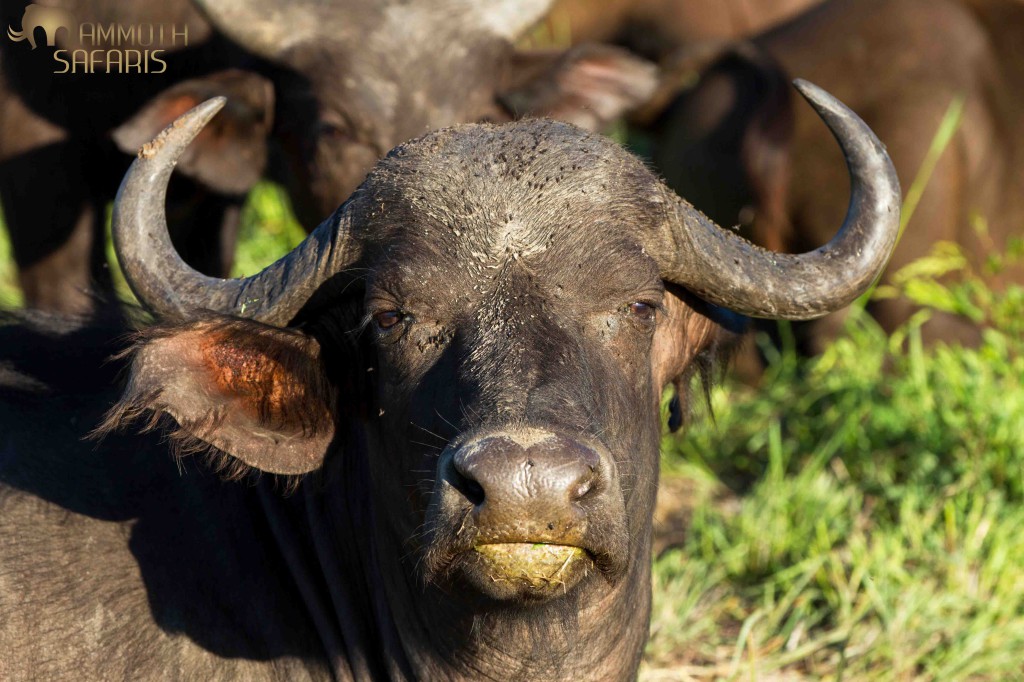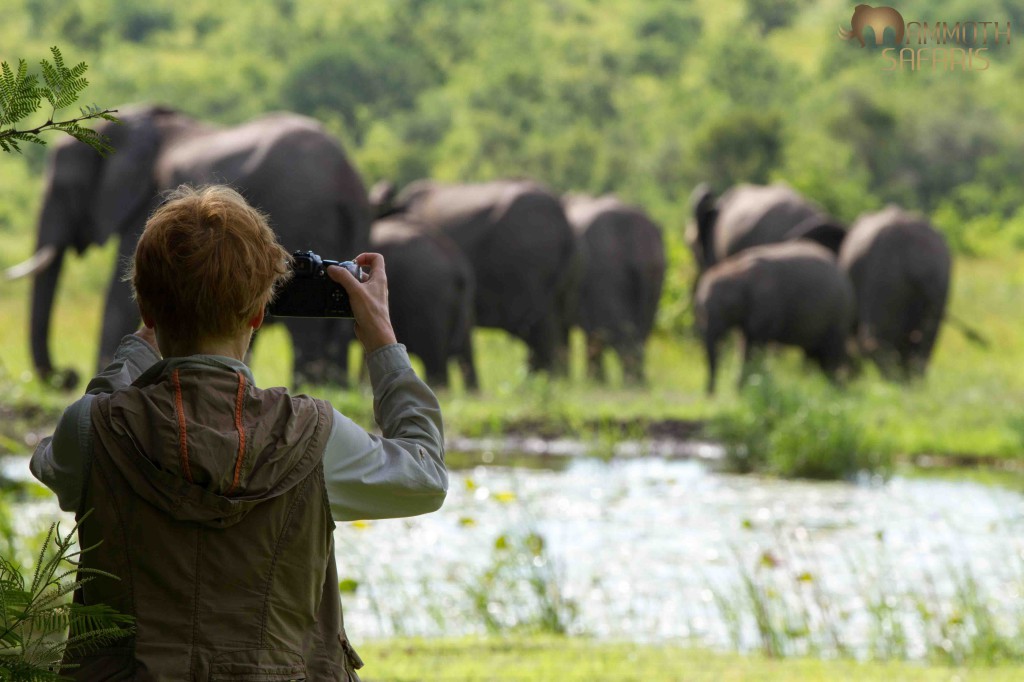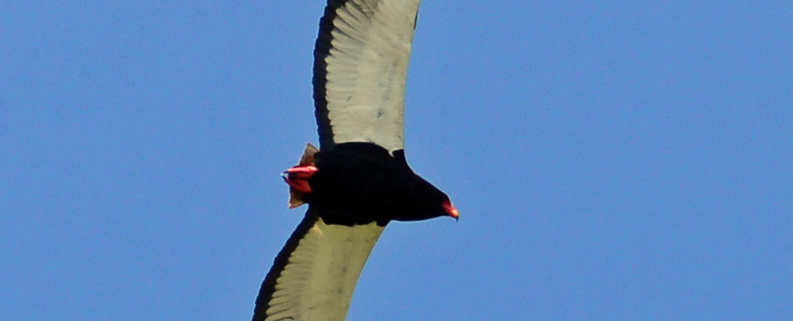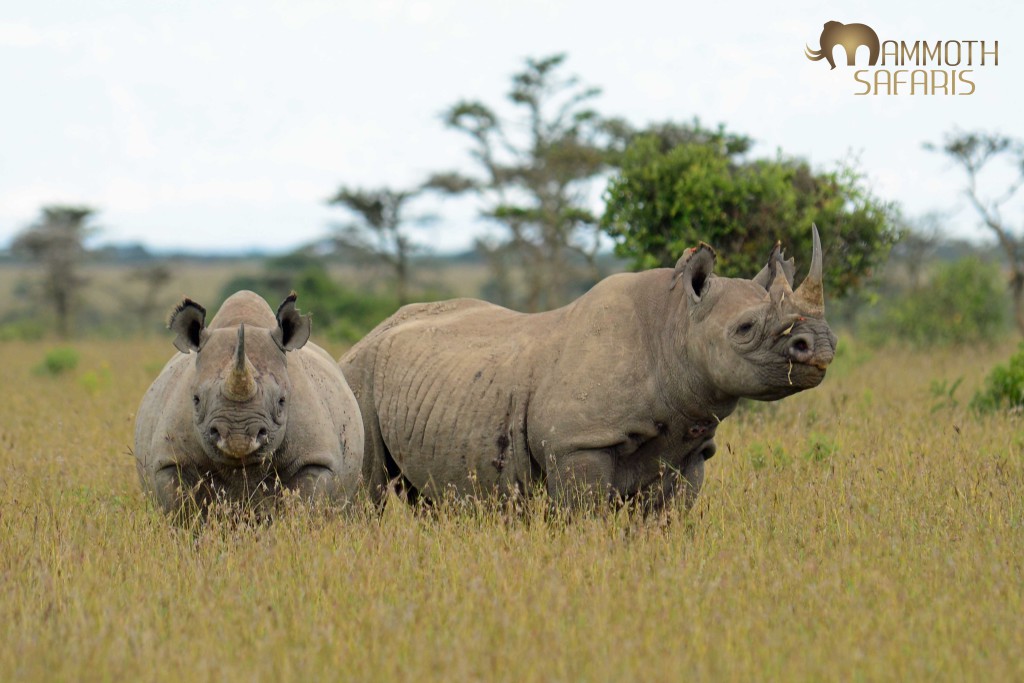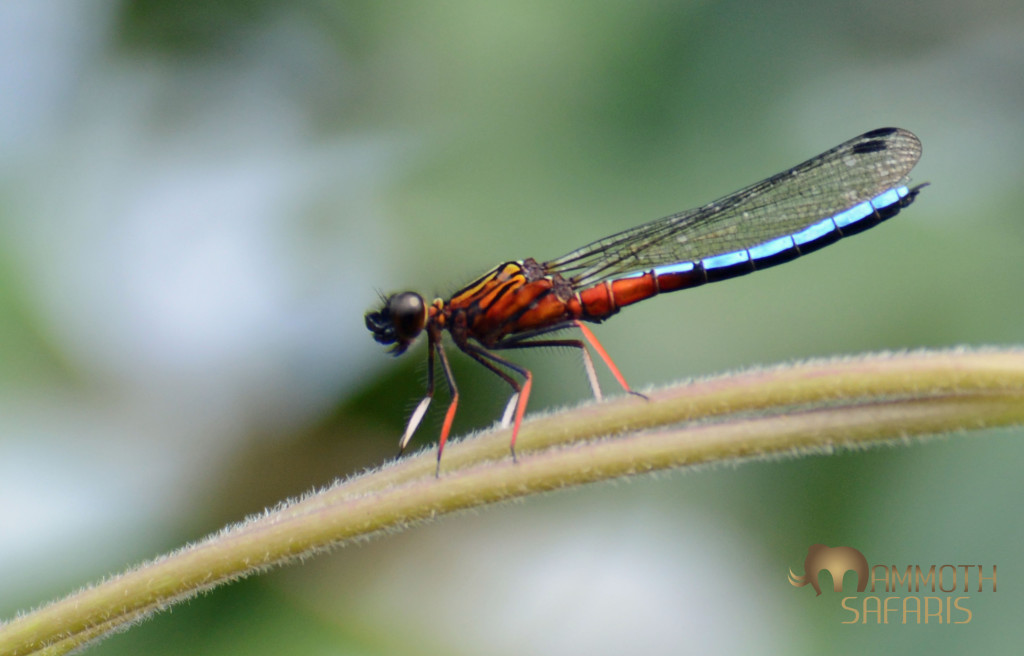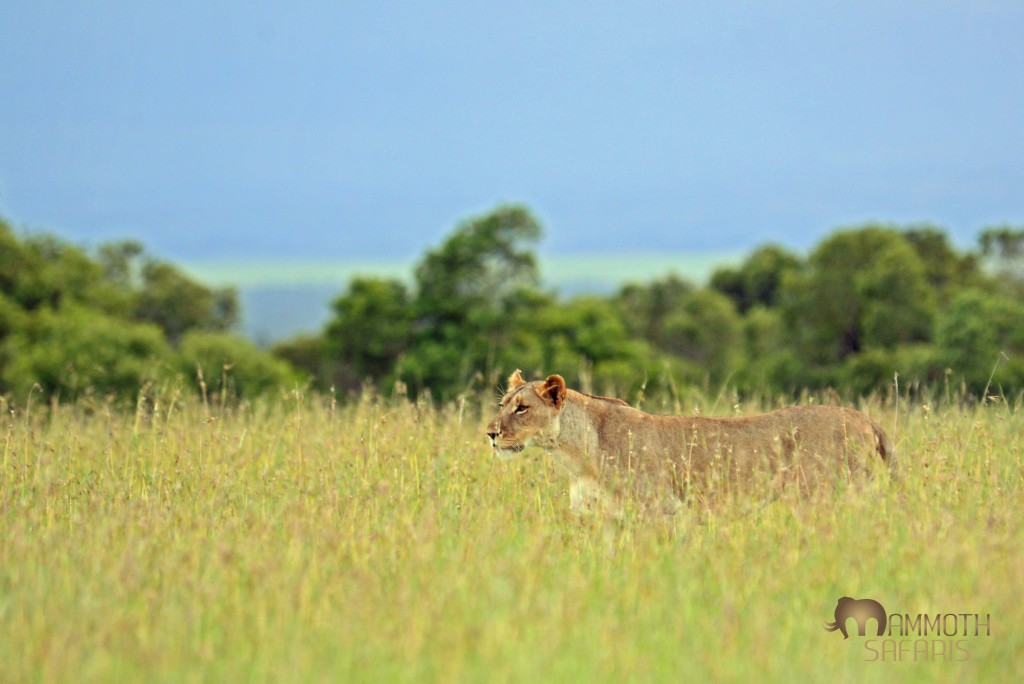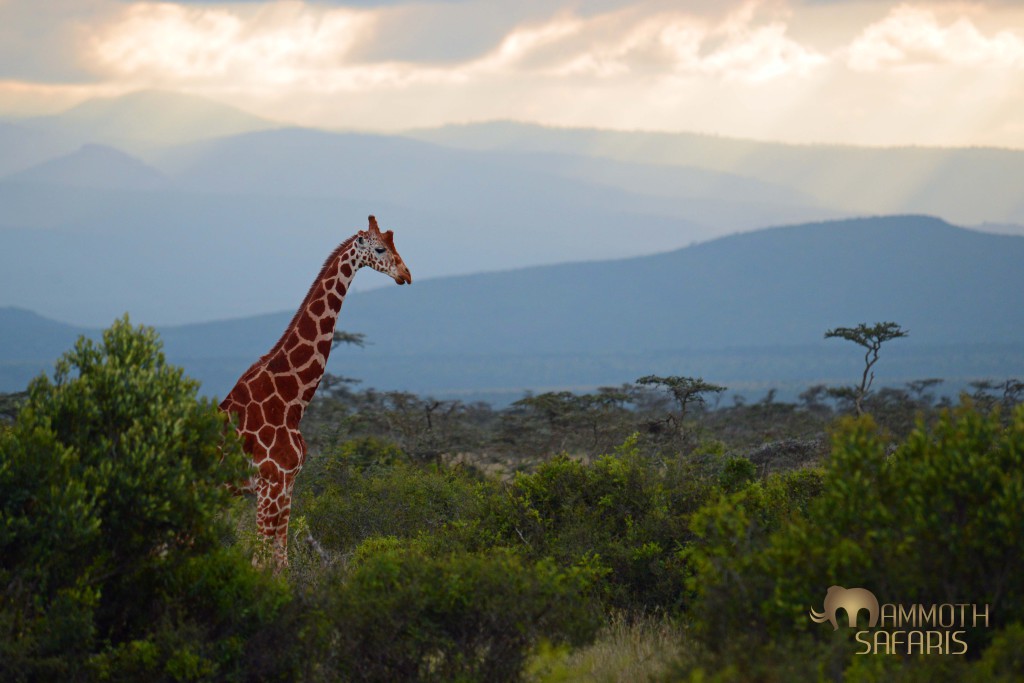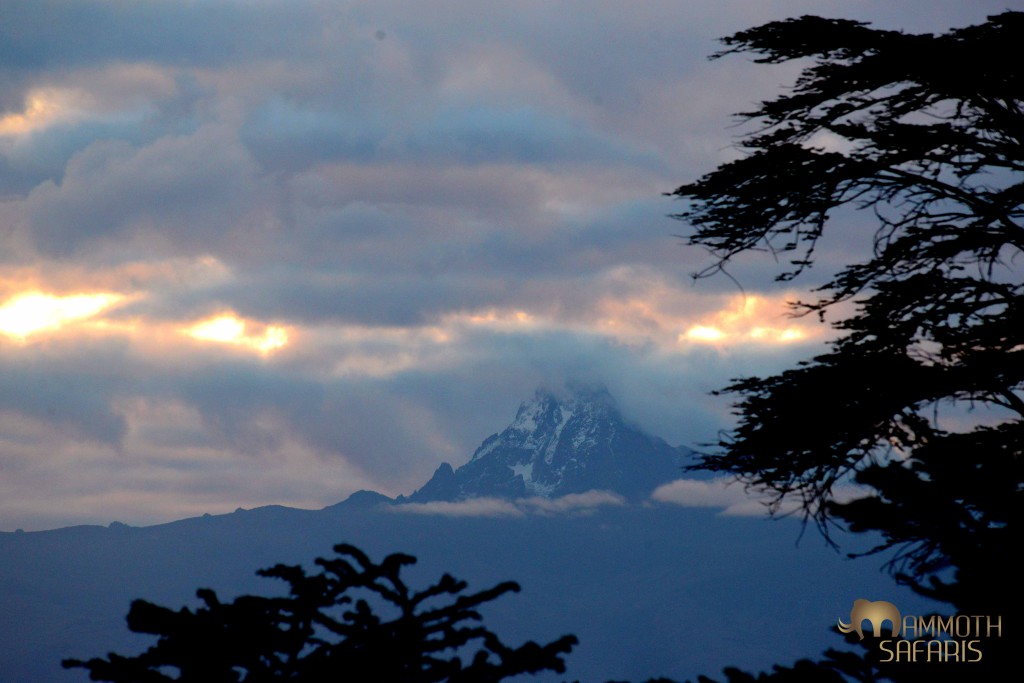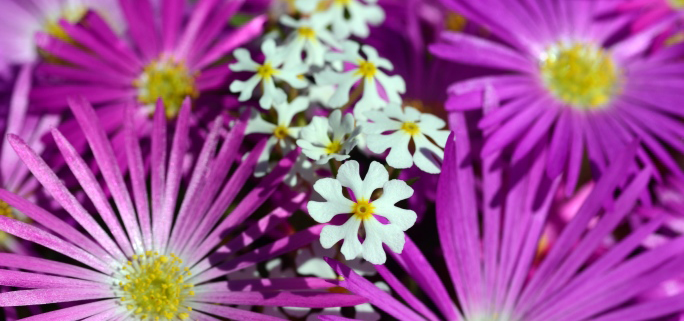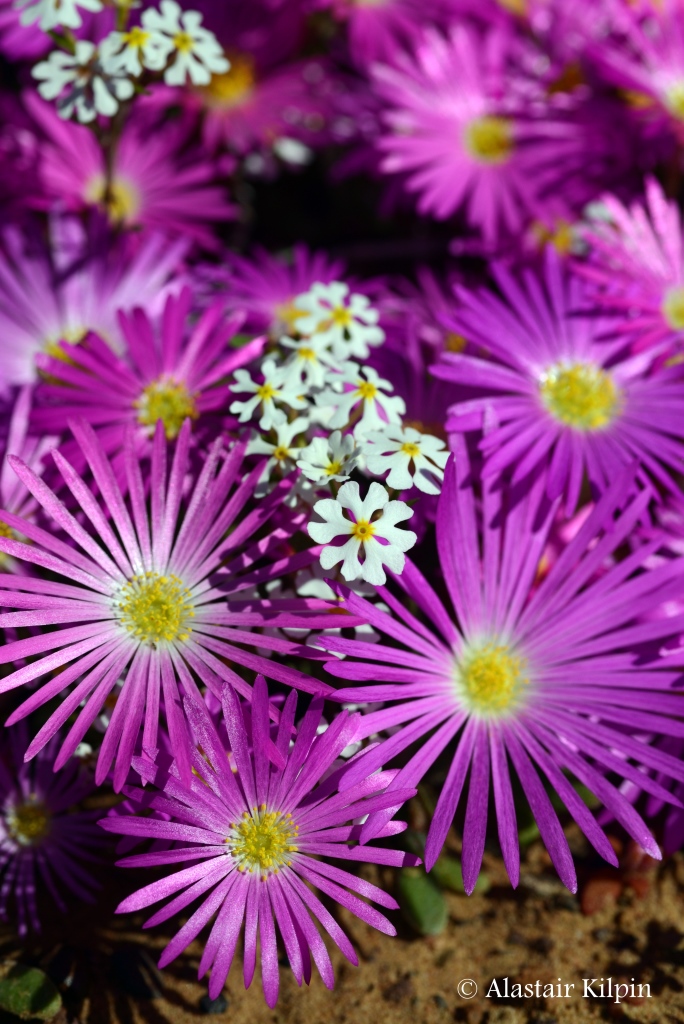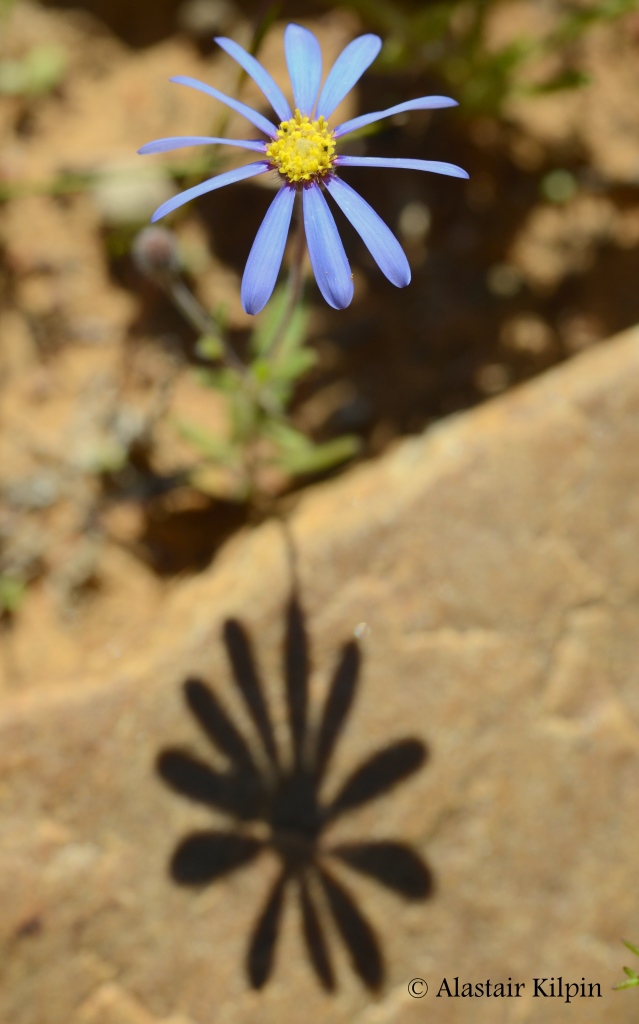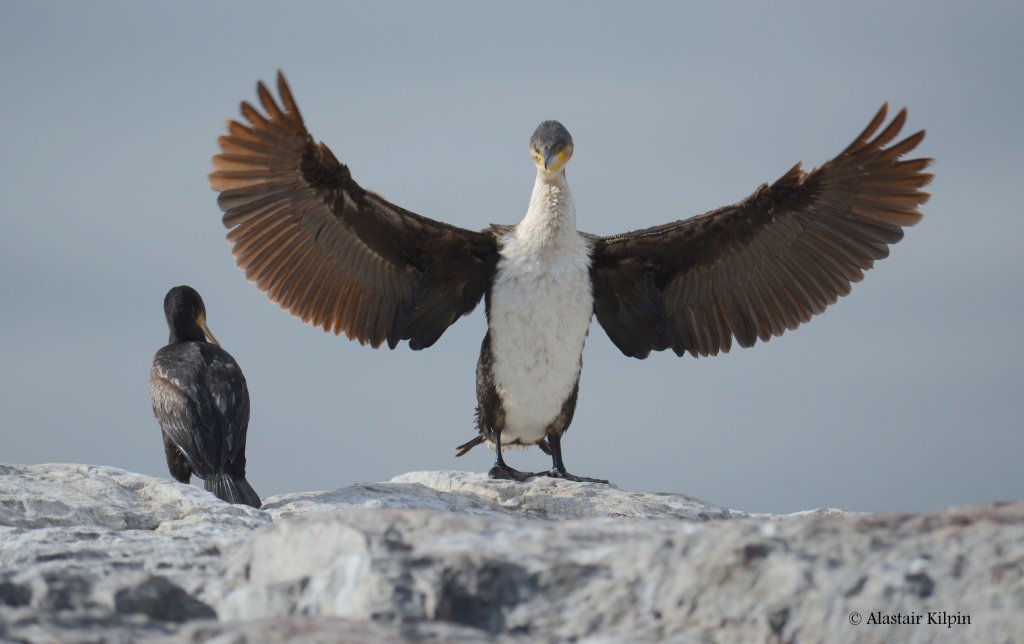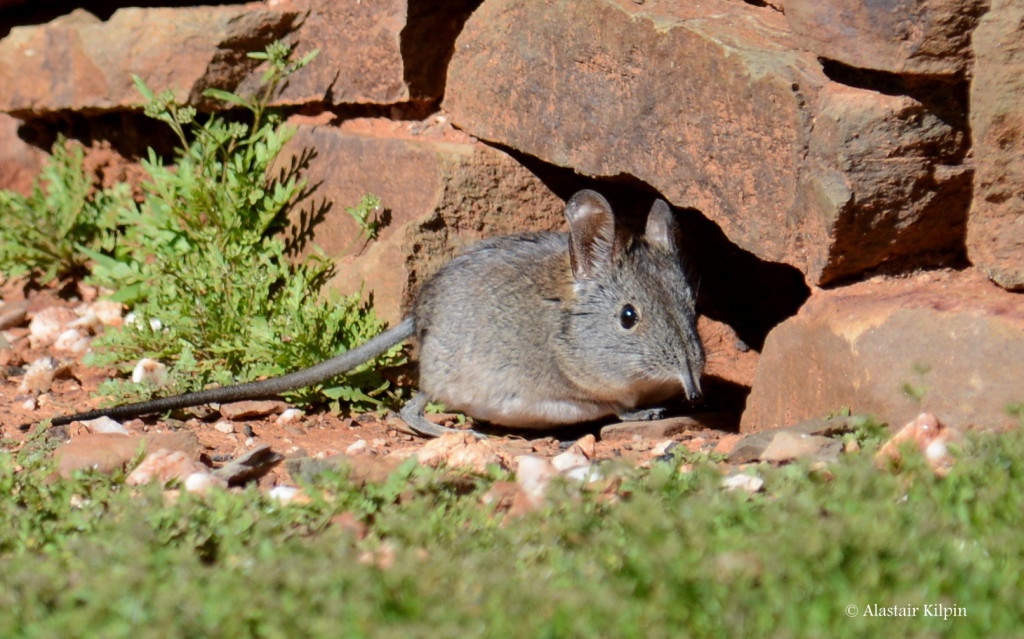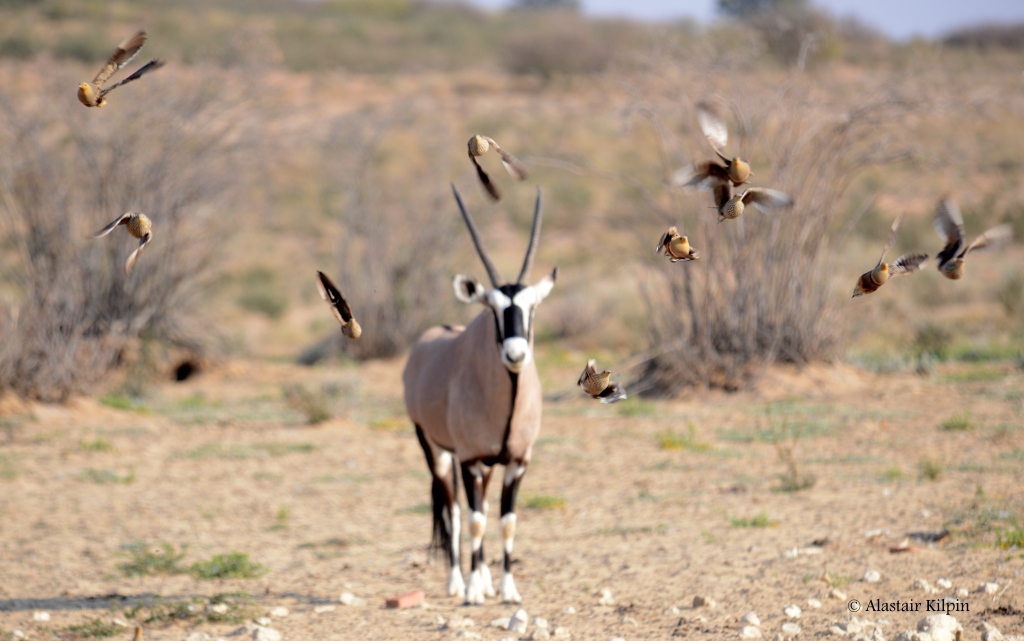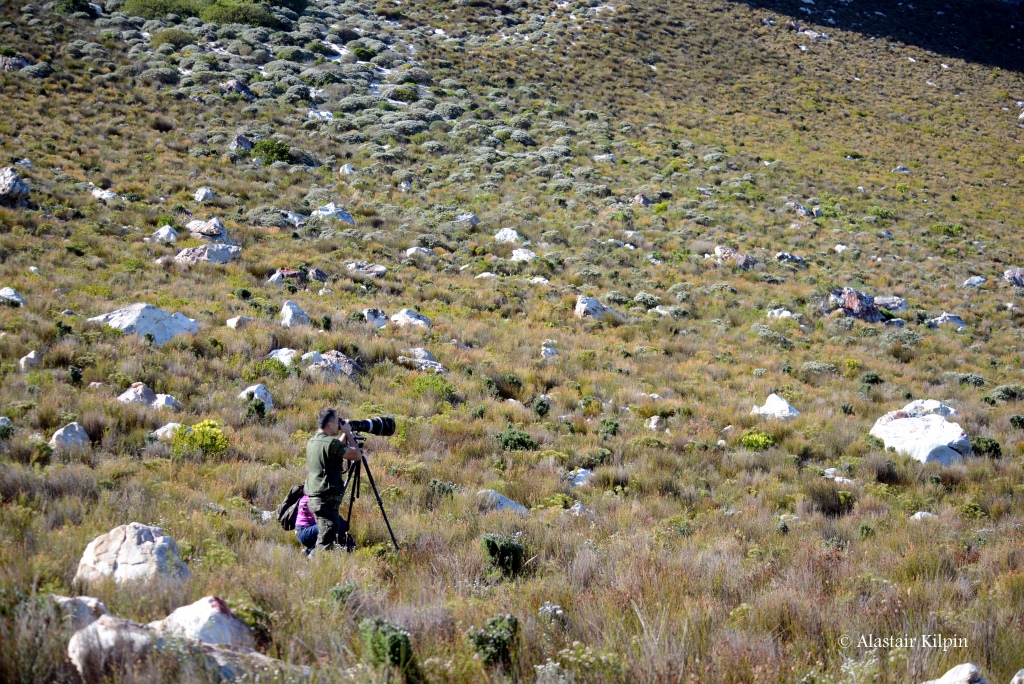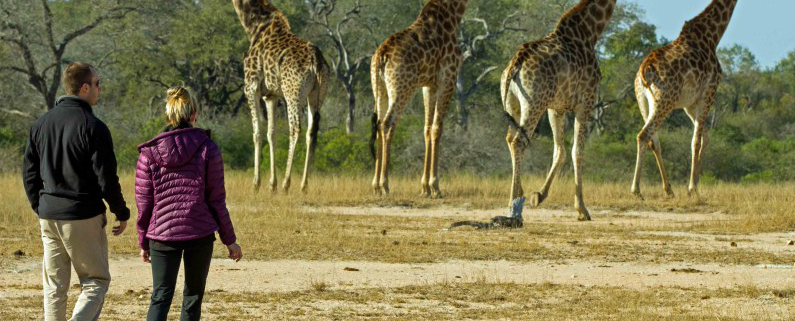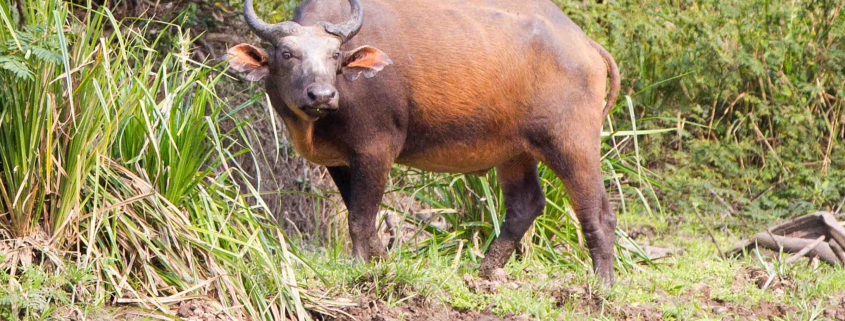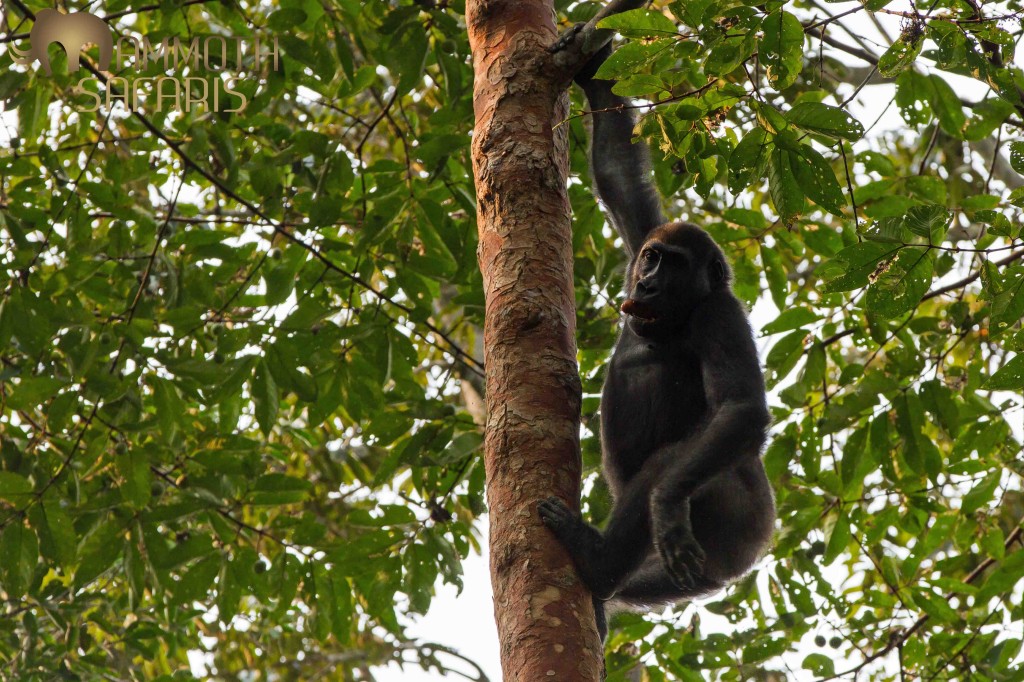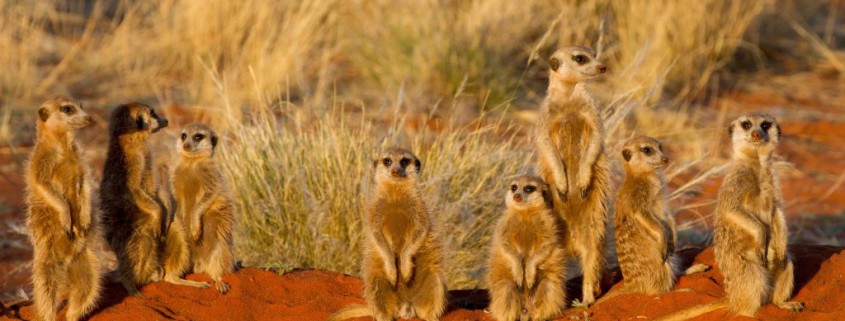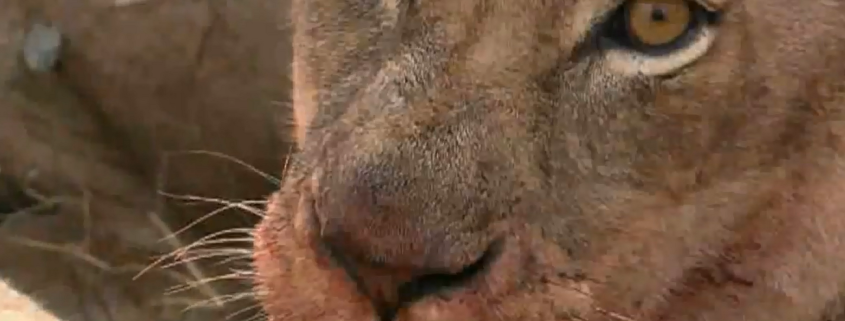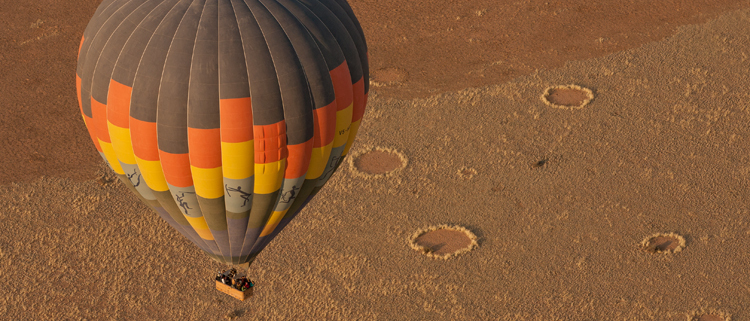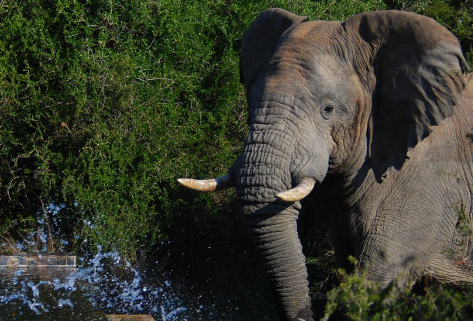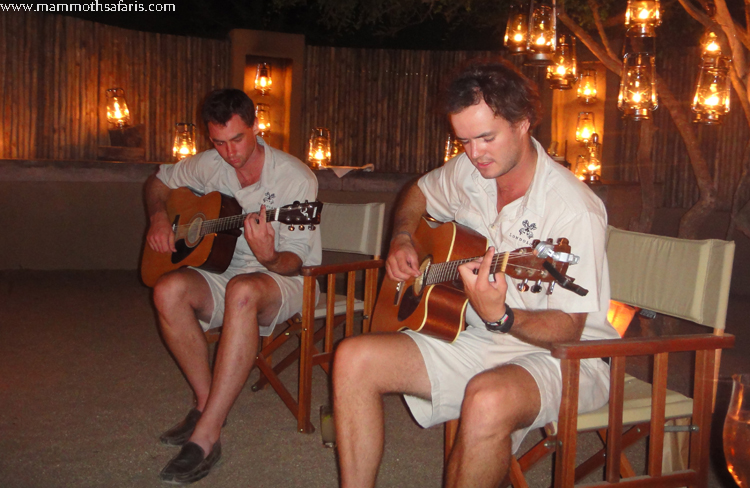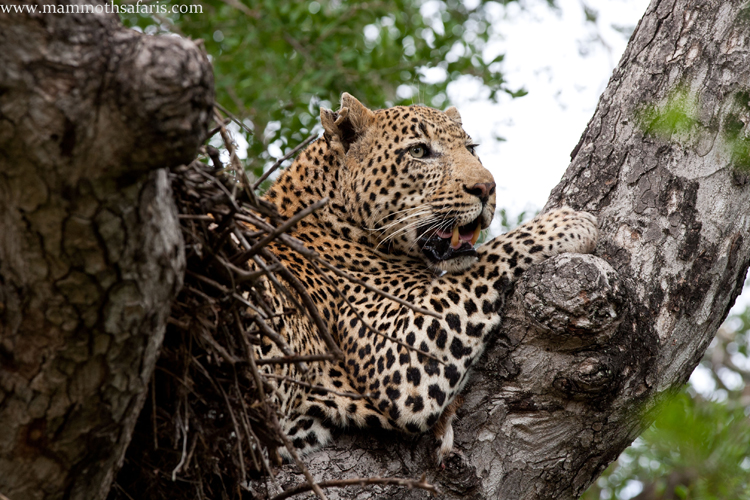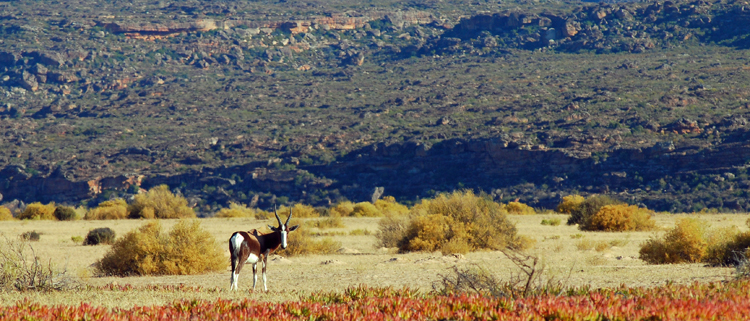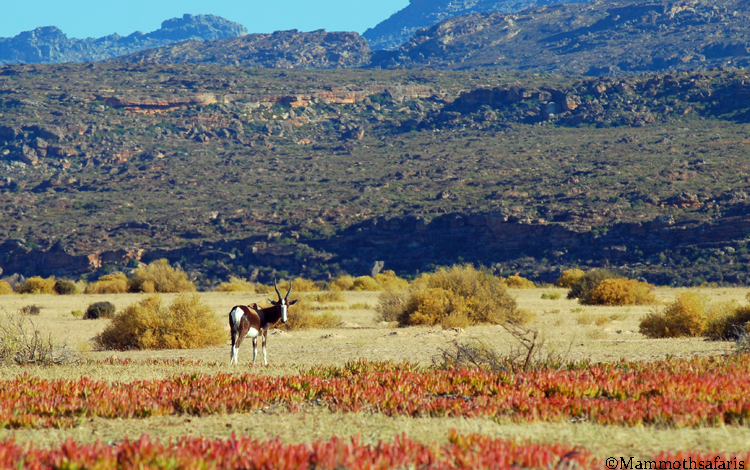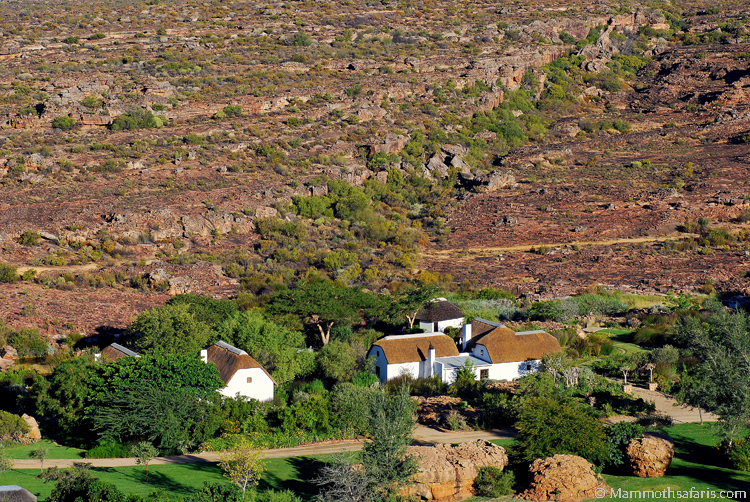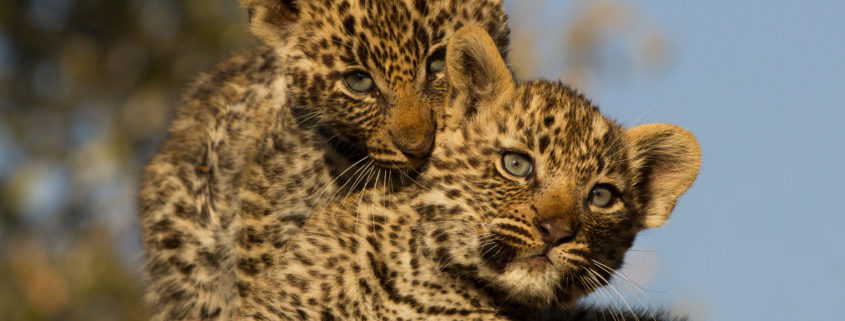Dwarf Sperm Whale visits Cape Town
Masai Mara in the green season
They say the Masai Mara is over-traded. During the spectacle that is the annual wildebeest migration you might agree. I have just returned from an incredible stay in the ‘dreaded rainy season’. We got rain almost daily in fantastic thunderstorms (plus a little Rift Valley earth tremor one evening!). But as you will see below, we also got plenty of sunshine, saw loads of animals, very active displaying birds and very very few people…

These young lions will have a real appetite by the time the wildebeest migration returns to the Mara.

We had a special sighting of a female hippo bringing her young calf from out of the riverine forest back into the Mara River
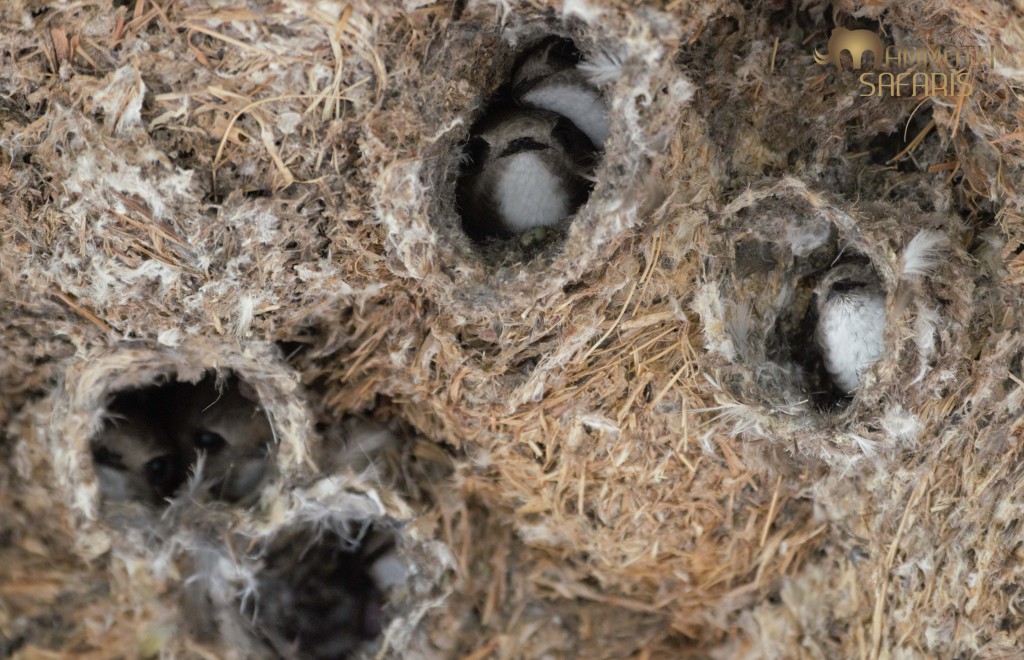
Anyone that has been to the Mara Triangle will know the sound of the Little Swifts that nest at the Oloololo Gate. It seems they were gearing up for nesting.
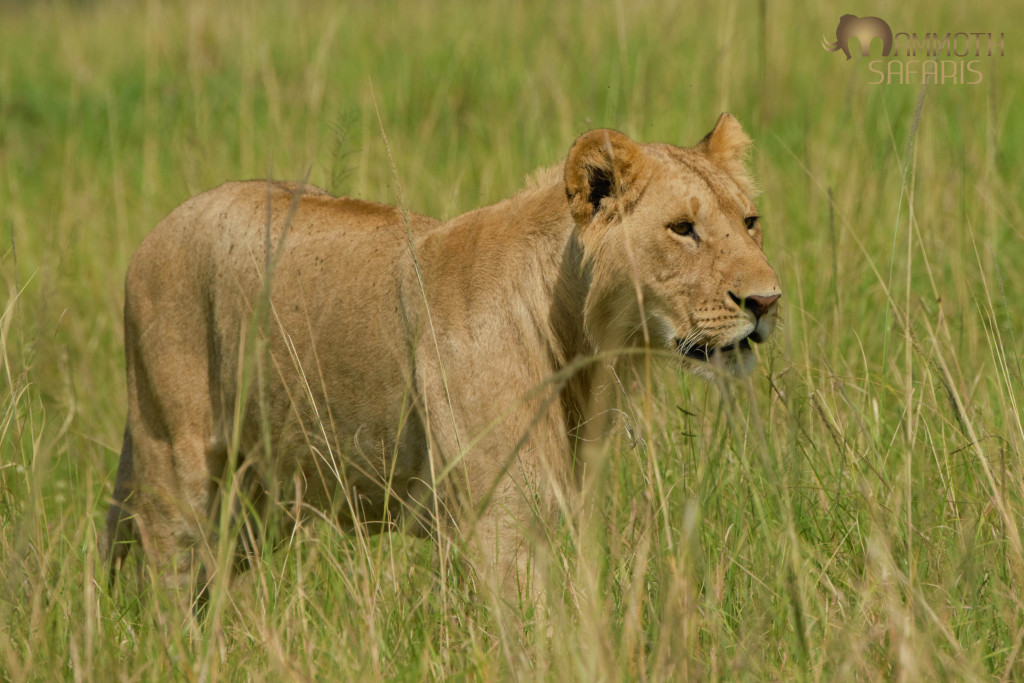
Whilst this is not the most arresting photo of a lion, I enjoyed his focus and motion through the long grass.
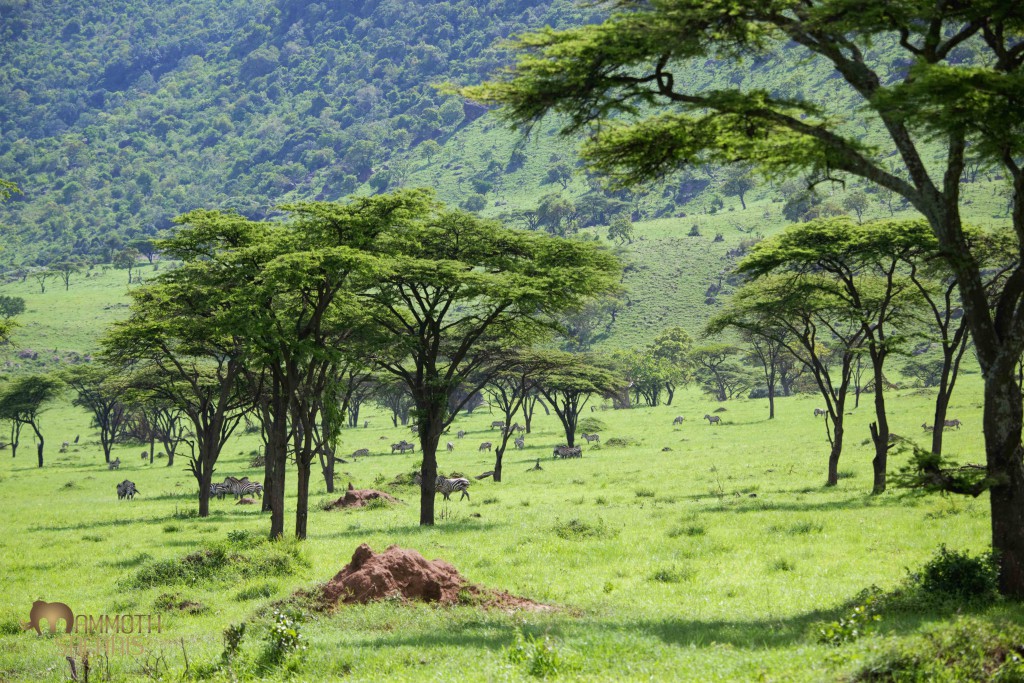
The rains turn the landscape green, but this area has also been burnt so was a shocking green. We stopped for a picnic lunch and had 9 mammal species in view!
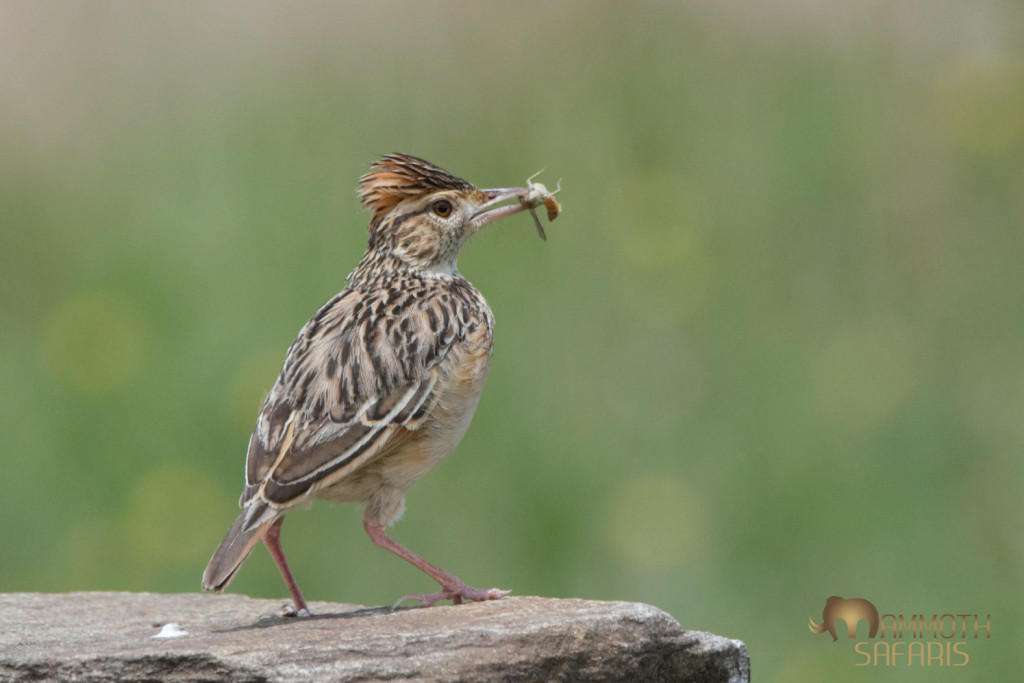
The voice of the Mara is not quite as drab as people say! The Rufous-naped Larks are all singing and nesting right now.
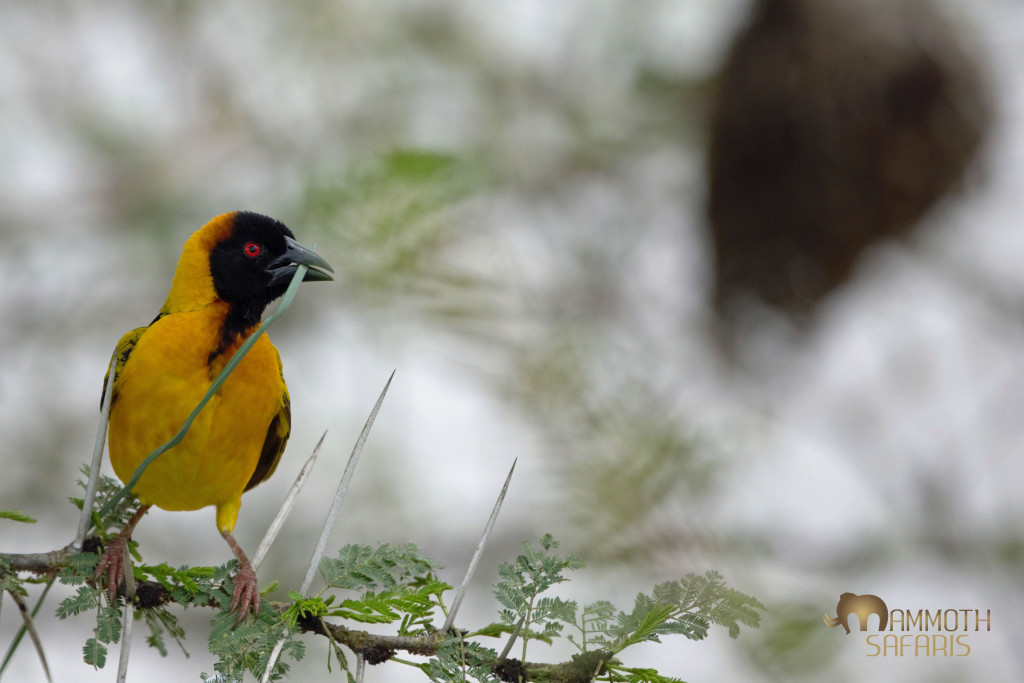
Watching weavers build nests is a great African safari treat. Quite how this male managed to keep avoiding the thorns whilst so busy I don’t know.
Zakouma – a wild Safari south of Sahara
As promised, the first report back from Zakouma National Park in south-east Chad. It is tough to put into words just how what an incredible experience this has been. Spending 5 nights camped out in the moonlight on the edge of the Rigueik wetland with a great bunch of people, tasty bush food and great […]
Dawn & Dusk #Whyilovekenya
Recently I spent some time on safari in the Masai Mara and Laikipia. Days were warm and dry, especially in southern Laikipia, so I made the most of my favourite times of day…dawn and dusk. Although I never got the ‘Golden Hour’ everyday, I was treated to some classic safari moments. Couple this with some excellent walking at Ol Pejeta and the low numbers of tourists in Kenya at this time of year, I can safely say January is a great time to be in Kenya if you aren’t really looking for wildebeest! #Whyilovekenya
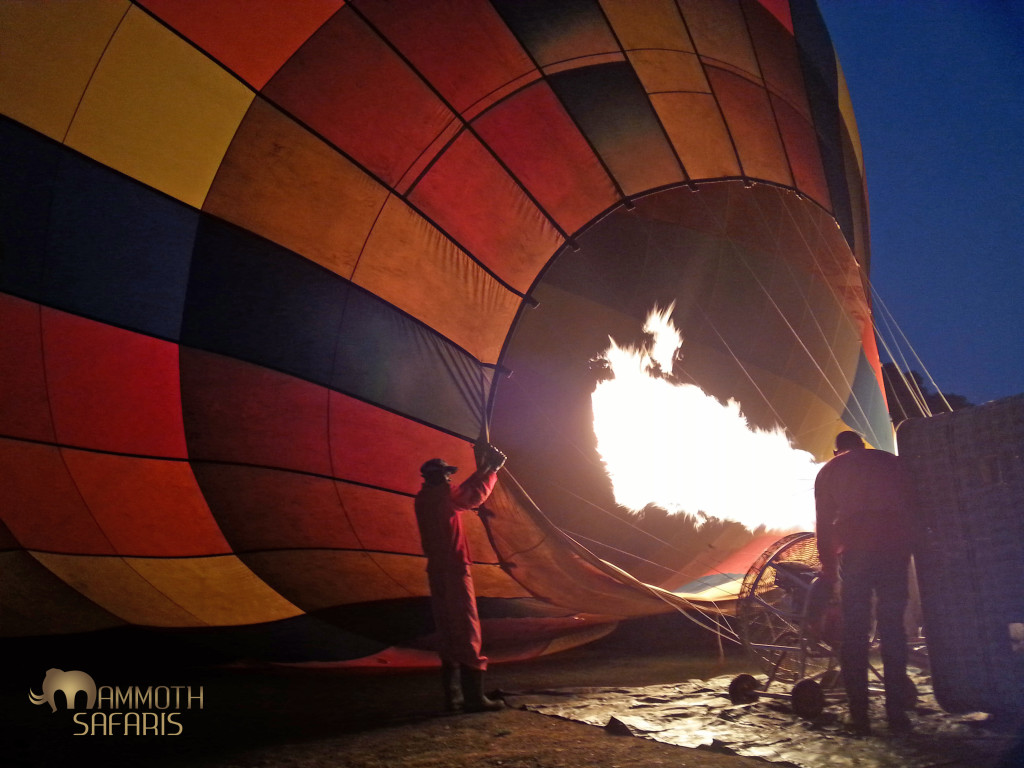
The excitement builds as we are nearly ready to board the Governor’s Balloon for our morning floating over the majestic Masai Mara.
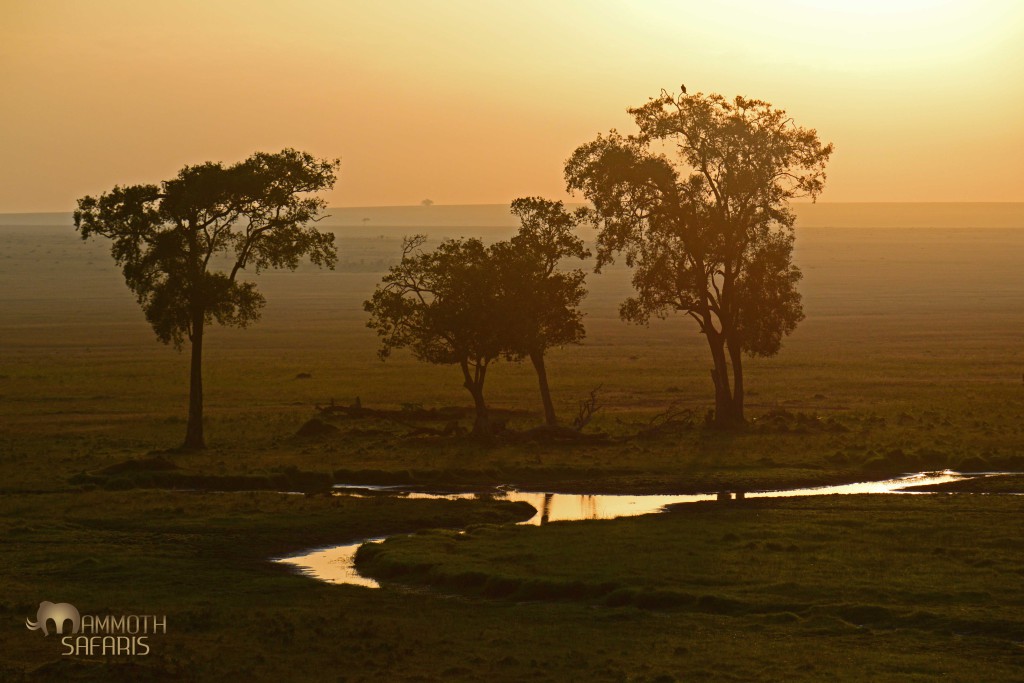
One of the dreamy scenes that unfolded on the balloon ride, just after floating over a pride of lions!

The chance to photograph this iconic mountain in a different mood each day is my motivation for rising early.
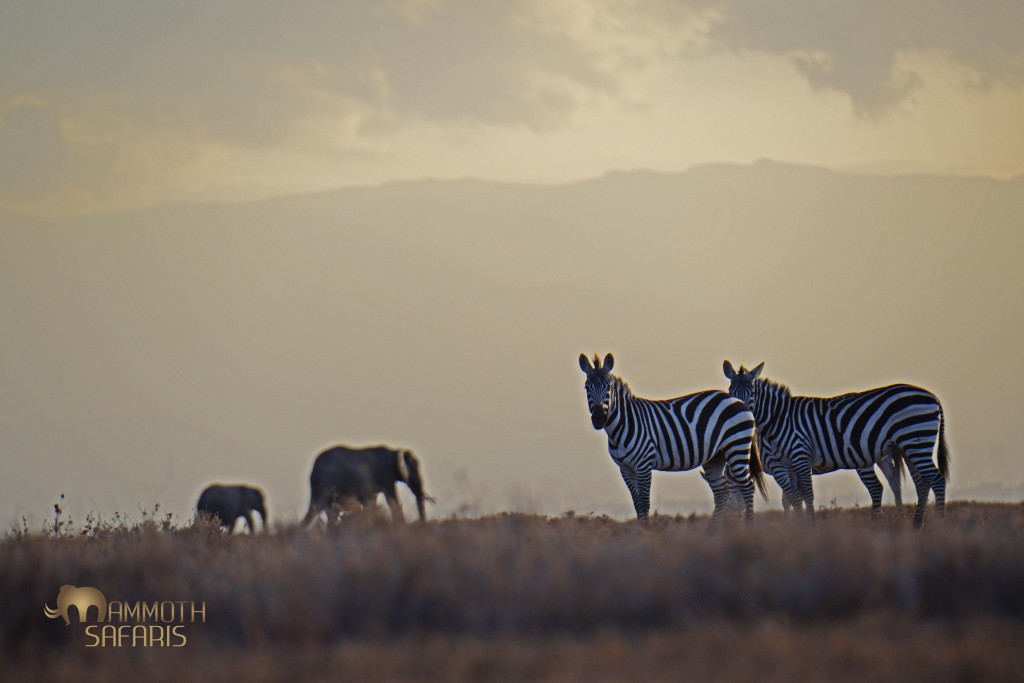
The almost milky late afternoon light on Ol Pejeta provided a fun opportunity to capture the top f the Aberdares as backdrop to the zebras and elephants

Some patience before sunset was rewarded when a young male Grant’s Gazelle decided to put in a big effort to court a female.
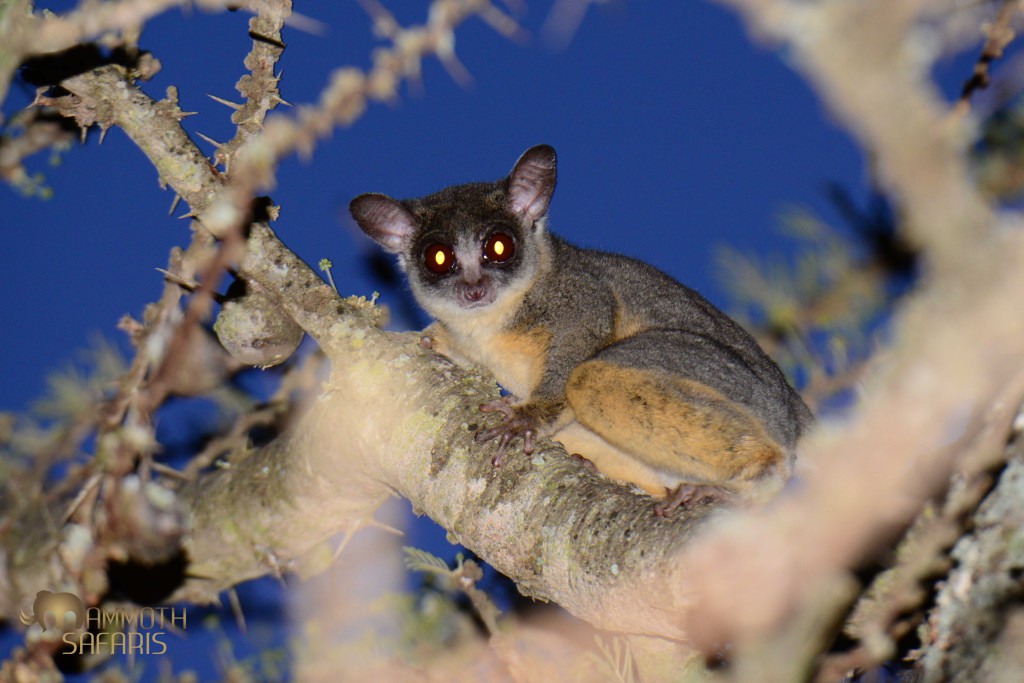
This cute bushbaby can be tricky to photograph in the thorn trees with no natural light. I spotted this one in silhouette as it emerged just minutes after sunset.
African Civet po(o)ps by…
One of things we love to do with our guests is find a waterhole or well-used game trail to put up a camera trap. The infra-red sensor takes photos while we sleep and later we get to download the card and find out who came to visit. Better still is to look at the tracks first and try to establish how many species came past. In Karongwe, west of the Kruger National Park, we had a successful nights’ trapping. The highlight was an African Civet which decided to poop right in front of the camera. Anyone that has seen the droppings in a civetry (a special name for their latrine) will have questioned how an animal the size of a civet could pass them – well take a close look at the photo. The answer is it isn’t easy!
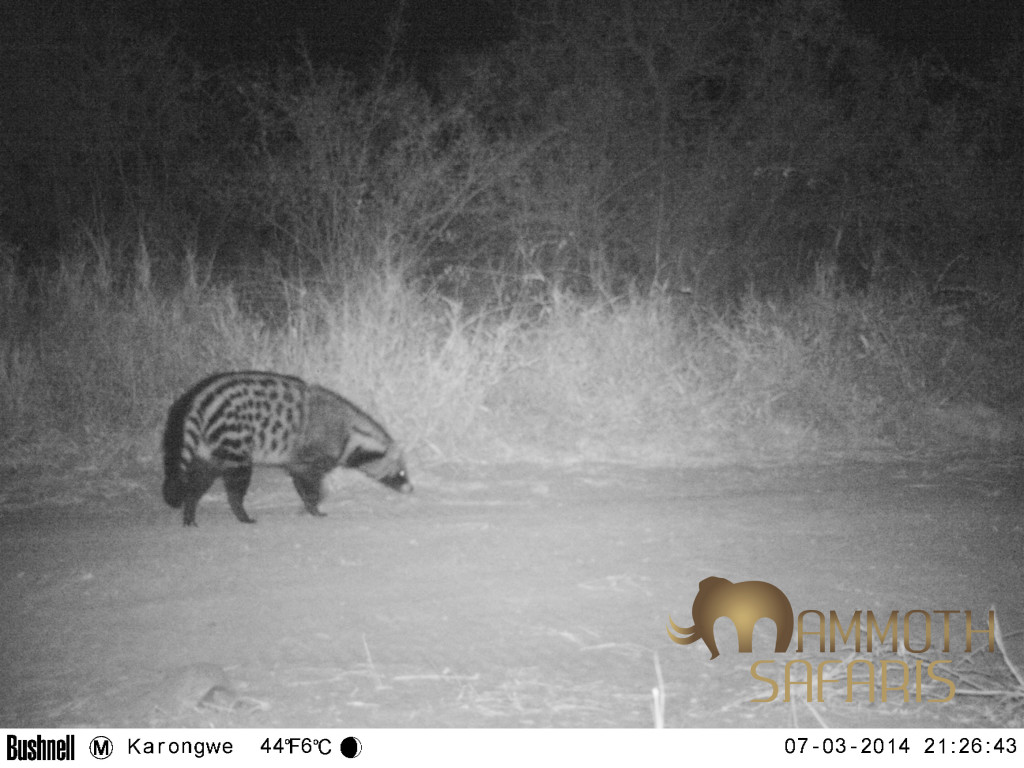
I always enjoy finding African Civet on a night safari – for me it is a sign of a healthy environment
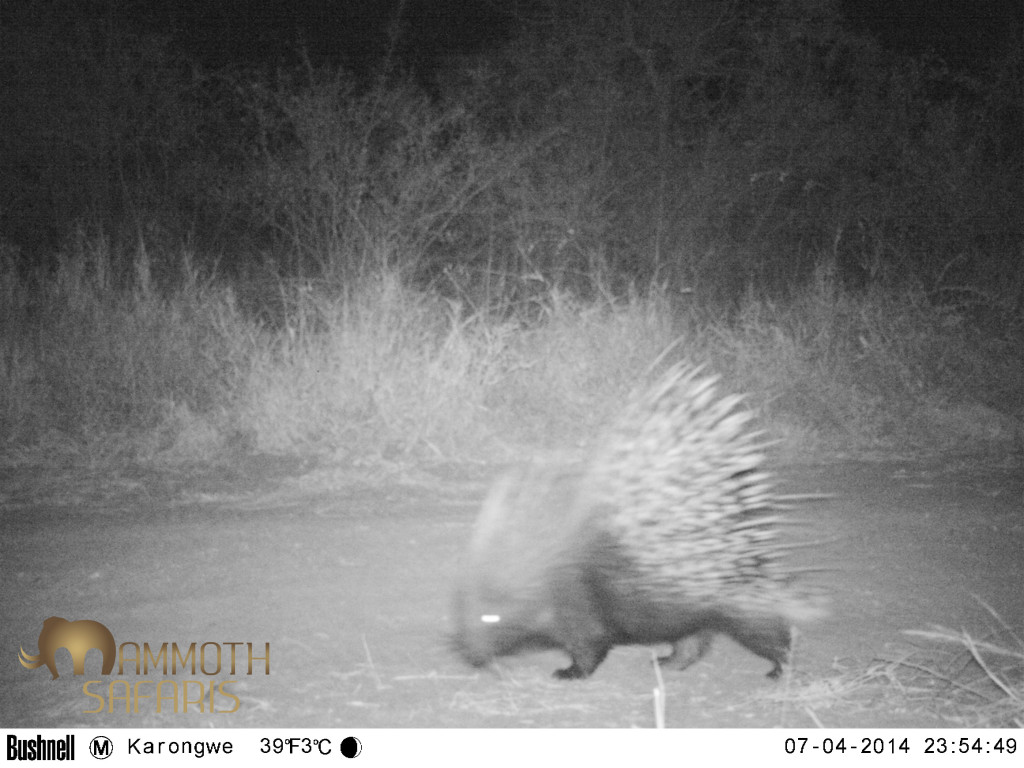
Although the porcupine is actually quite common, you don’t get to see them too often unless they are raiding the camp veggie garden.
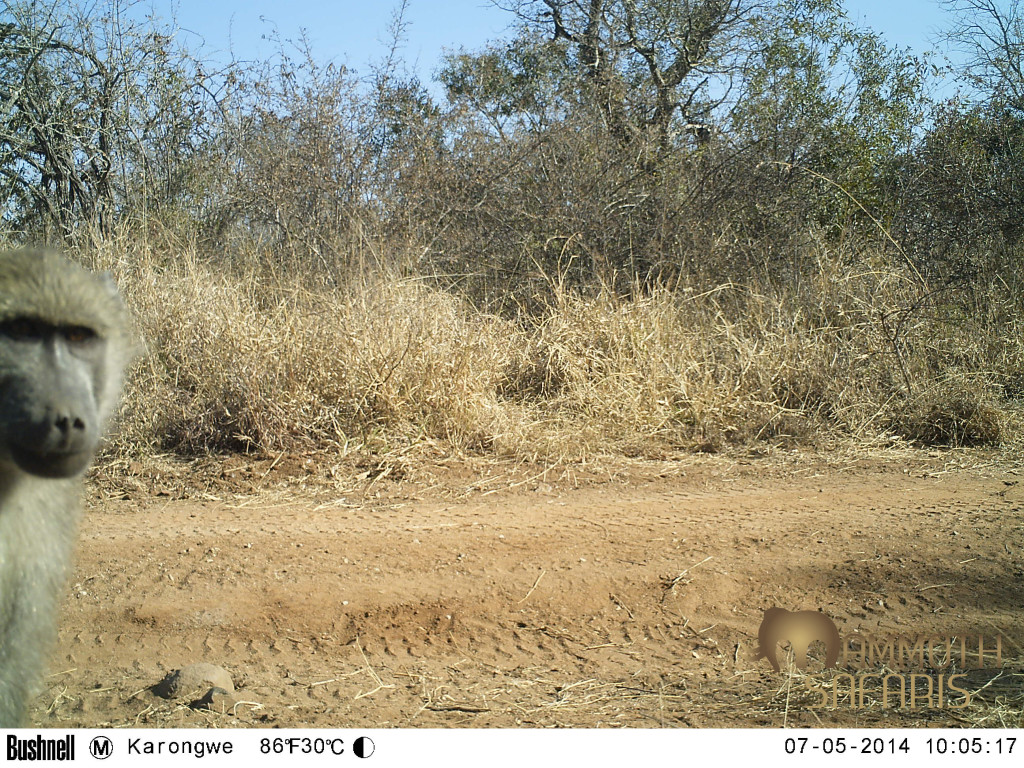
If you put a camera trap up just about anywhere for a few days, you are bound to get at least one look-in from an inquisitive baboon!
Incredible wail of the Indri
There are over 100 species of lemurs recognised in Madagascar (only there right!), but none come close to the largest, the Indri when it comes to sound! This short clip is exactly that sound.
Take A Walk On The Wild Side
The Pafuri Walking Trail in the Makuleke Concession of the Kruger National Park is without a doubt one of the most remote and wild walking experiences that can be found today. A 3 night 4 day trail is the perfect getaway to experience nature at its best.
The early hours of each day were spent walking in various parts of this unique and extremely diverse area. We had a number of great sightings of elephant, safety is distance when out walking which can be hard to maintain whilst walking for 4 to 5 hours. Most of the time we were able to get to an elevated area and enjoyed watching the behavior of the elephants whilst they were completely unaware of our presence. Buffalo were fairly common and we had to be very careful where we walked. Once or twice we got a little too close for comfort but with the knowledge and experience of our guides we were able to appreciate the skills needed to spend time safely in this environment and avoided having to climb any trees.
In this areas the cats are difficult to find on foot so in the in the afternoon we would use the the vehicle to explore the area, we were fortunate to see two different leopards which was a real highlight. We found some spectacular spots to enjoy our hard earned sun downers and to relive the days sightings. When we arrived back at camp after each adventure, we were greeted warmly by the friendly staff and treated to some fabulous meals cooked on the open fire.
We really had a fantastic time and enjoyed every minute of the adventure, a special thanks to the staff at Pafuri for such a great experience and for making us feel so welcome and for looking after us so well.
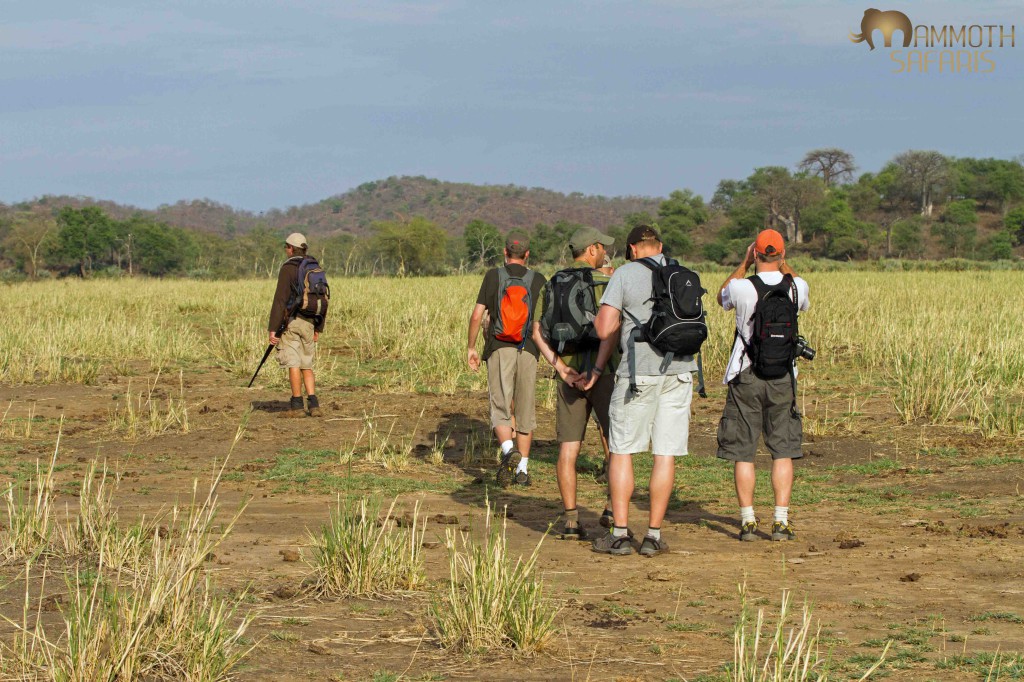
Some of the best walking in South Africa, the Pafuri Wilderness Trail is perfectly situated to explore this incredibly diverse area.
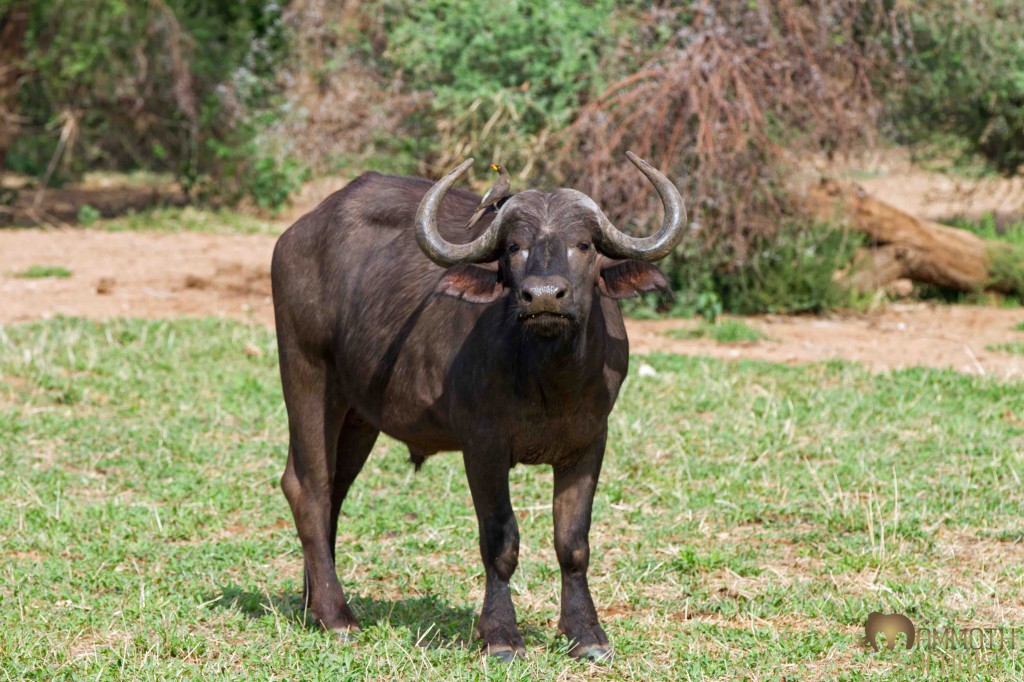
The reputation of a buffalo is well deserved, which is why taking photos from the comfort of a vehicle will generally yield better photos due to less camera shake.
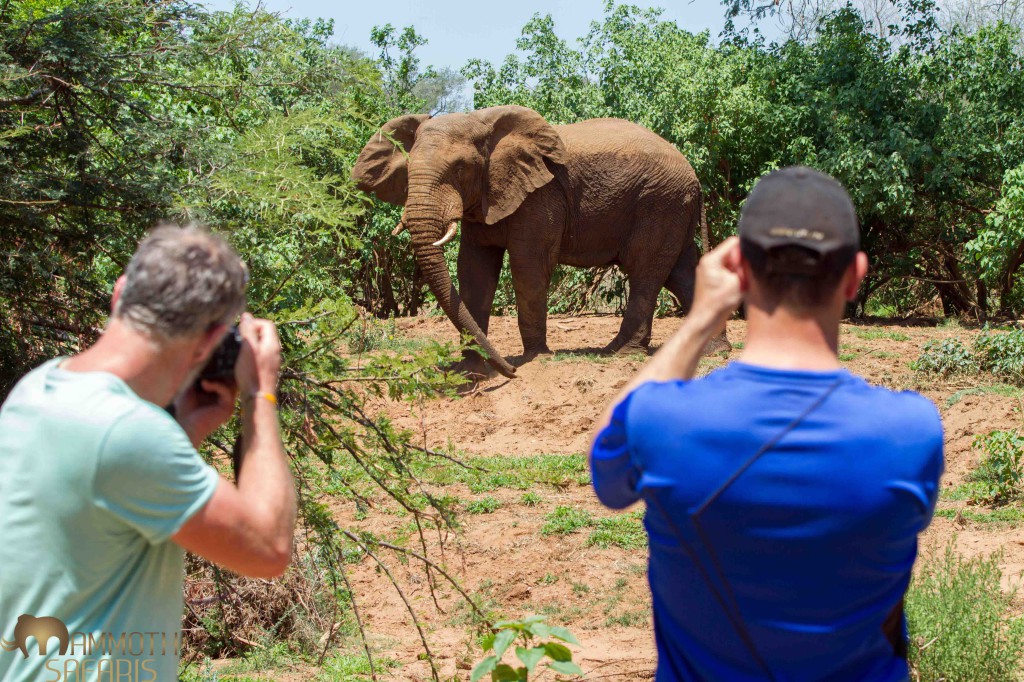
Enjoying wildlife from the comfort of the camp. This elephant spent most of the mid day feeding around our tents.
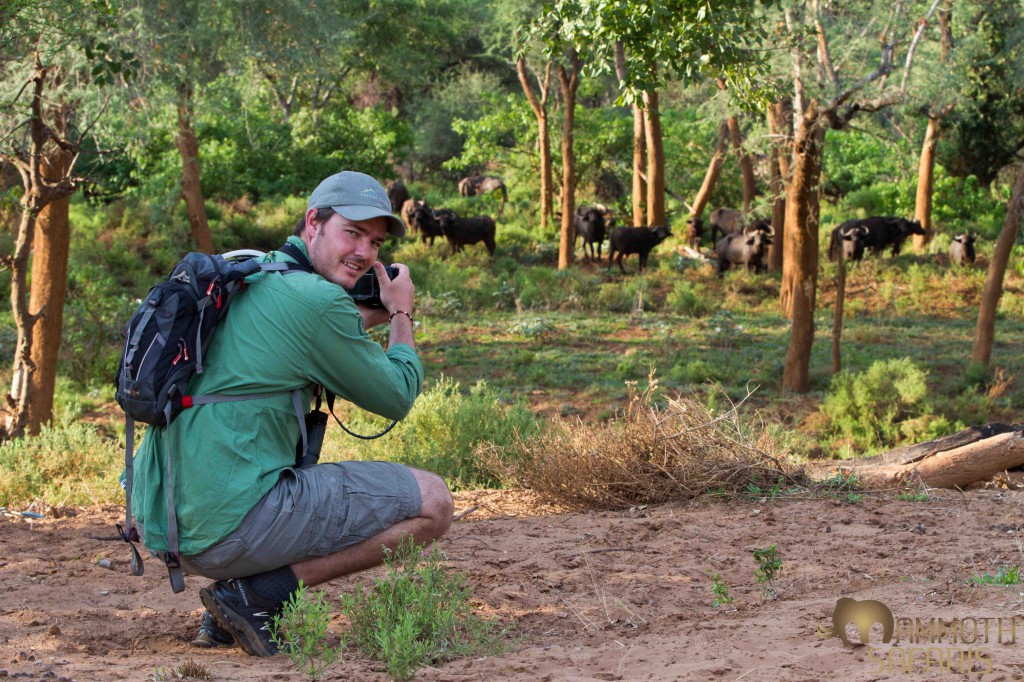
Brett, head of sustainability at Wilderness Safaris enjoying a fantastic photographic opportunity with this herd of buffalo.
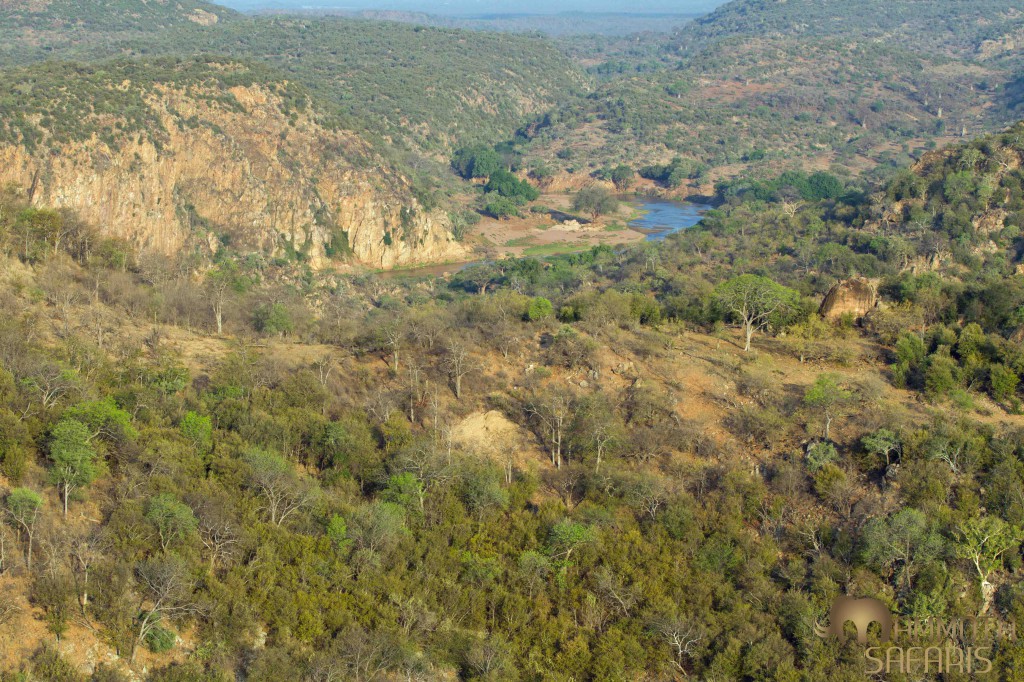
Spectacular scenery from Lanner Gorge, probably one of the best place in Africa to enjoy sundowners.
Some tangible History
Well it is about a year ago that I was perched on the small island of St. Helena – in the middle of the Atlantic Ocean, but right on the edge of the African Plate! I was leading a trip with some lovely people who had joined me to brave about 11 days on a round trip ocean voyage for the privilege of a week in this remote and beautiful part of the planet. Primarily we explored the island with the great folks from the St. Helena National Trust and St. Helena Tourism – from their endemic wirebirds and breeding seabirds to reforestation projects (yes, a rainforest occurs on the highest peaks) and important cultural features. We enjoyed the diverse history related to the development of trade routes as well as the prisoner/exile stories too.
Their most famous ‘visitor’ was Napoleon who was exiled here in 1815 after Waterloo. It is recorded that to pass the time he particularly enjoyed a dessert wine produced in the Cape. Vin de Constance was its name and although from different vines, it is still made today and is a highly decorated product of the Klein Constantia wine estate in Cape Town. The highlight for all of us came one afternoon. Steven & Maureen run a super establishment called the Farm House and when I showed him the bottle he countered by showing us an antique wood and brass wine cooler … which belonged to Napoleon himself. I couldn’t beat that for authenticity! And the Fairy Terns drifted by… (Alastair)

Enjoying an afternoon Vin de Constance on the front lawn of the Farm House – the finest place to stay on the island – superb food throughout and entertaining hosts
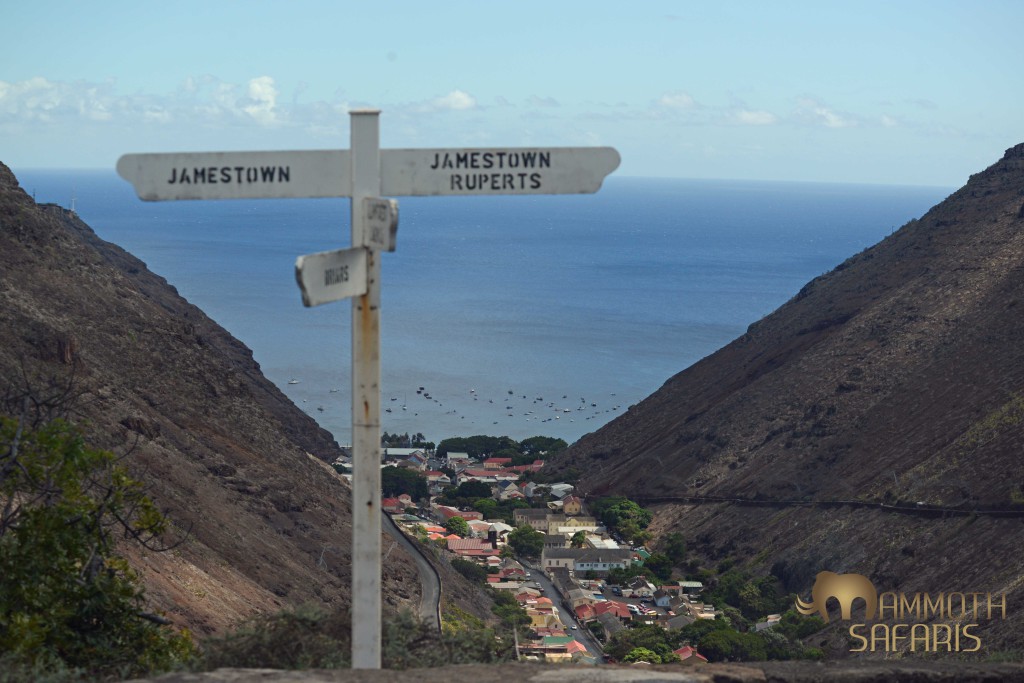
A view from the hillsides down to the ‘capital’ of Jamestown – all in the middle of the Atlantic Ocean, about 2000 kilometers from Africa!
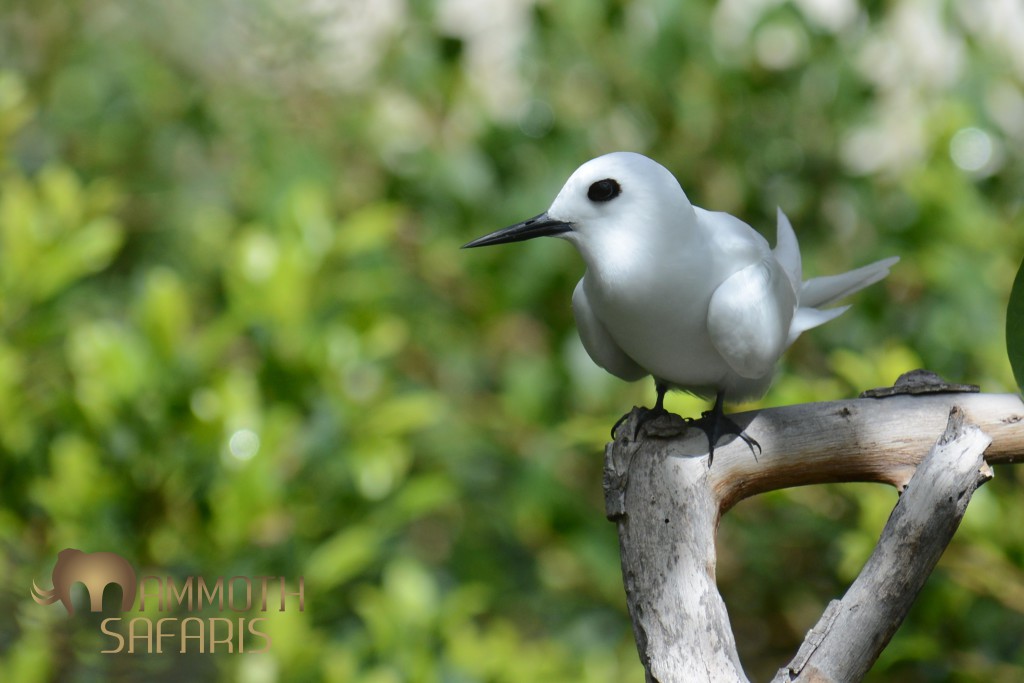
No post about St. Helena could be without one of the star avian attractions, one of my favourite fliers, the Fairy Tern
Cape Town Autumn Ocean Wildlife!!
Ocean safaris are not everyone’s cup of tea, but the waters off Cape Town are the prime place to get into it! I’ve had the privilege of getting out onto the ocean a few times in the late summer and autumn months and the photographic opportunities have been great. Pics of Great Whites, African Penguins and large game fish are not even included here! I did not get to see the famed Orcas which visit our waters, but hear they have been sighted recently, so I guess I will have to bide my time for them. The good news is that the Southern Right Whales will start arriving from Antarctica soon… (Alastair)
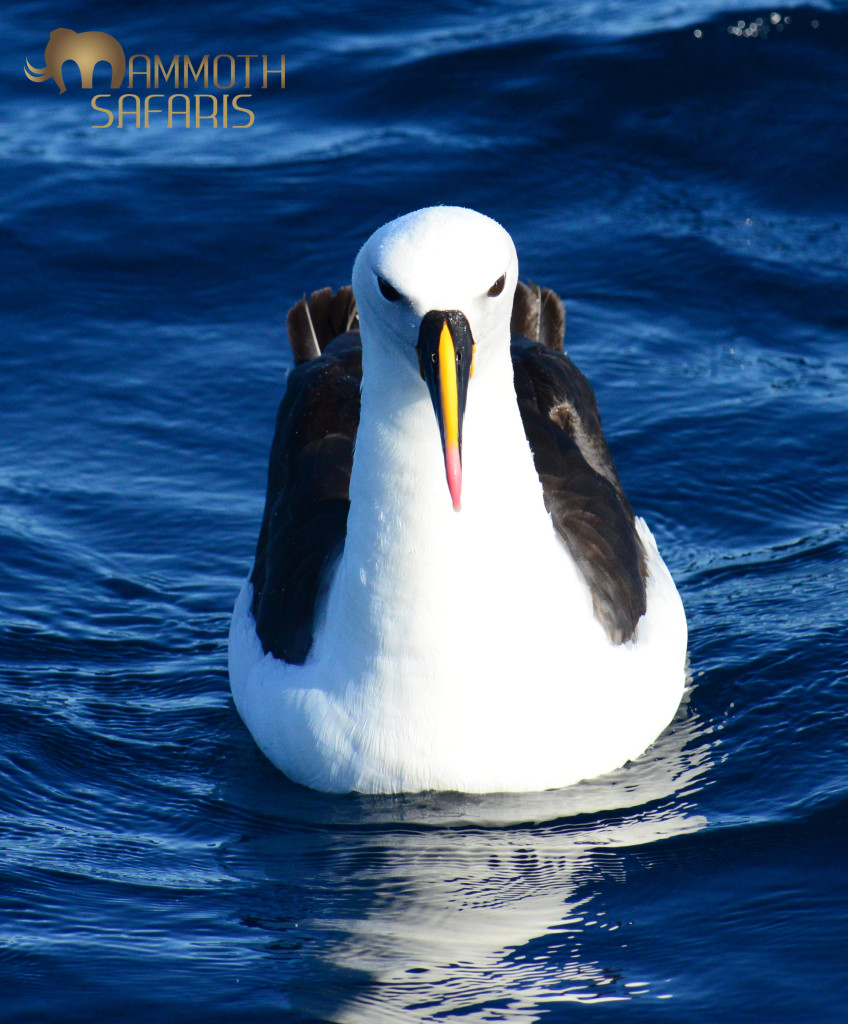
Indian Yellow-nosed Albatross is one of the small albatross, but picture-perfect! Most trips out to sea will encounter at least 2 and up to 5 species of albatross, making Cape Town a global hotspot for viewing these phenomenal fliers.
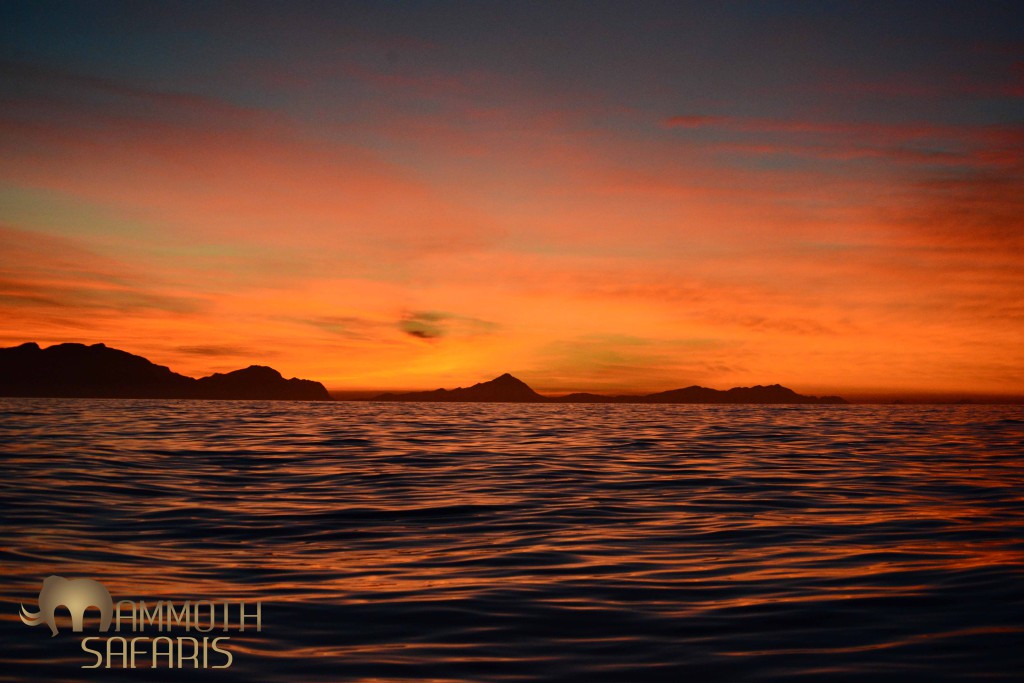
Daybreak in False Bay off Cape Town is a real treat especially when the sea is a millpond! This is the view towards the Kogelberg Biosphere Reserve as we head towards Cape Point.
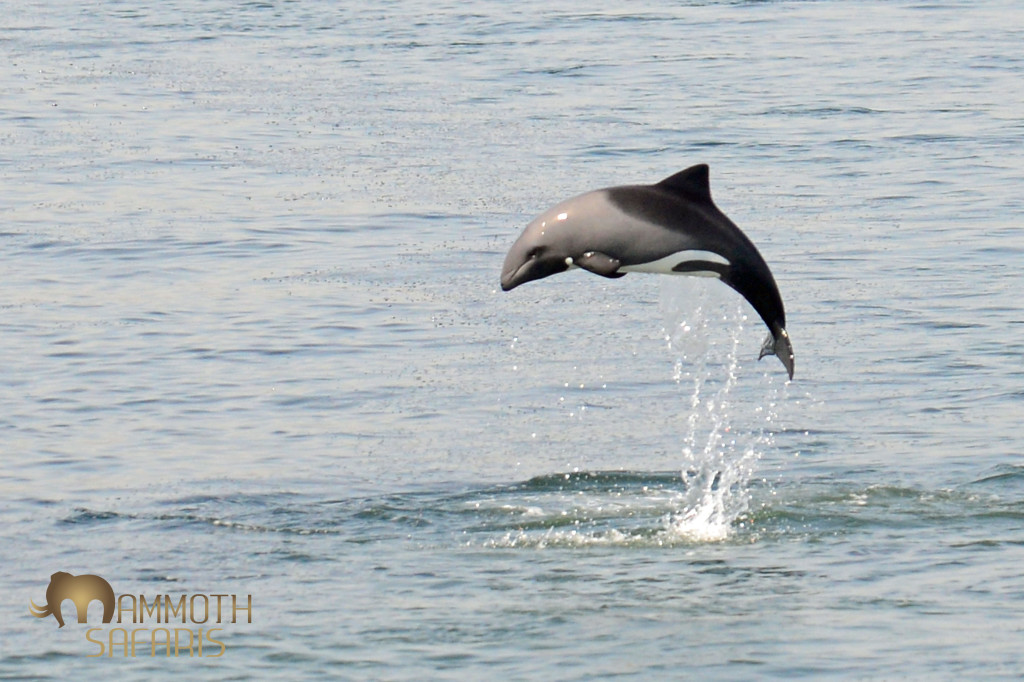
Not a sharp shot as it was far behind the boat, but a great feeling to capture this Atlantic endemic Heviside’s Dolphin, found only along the coast from Cape Town to Namibia.
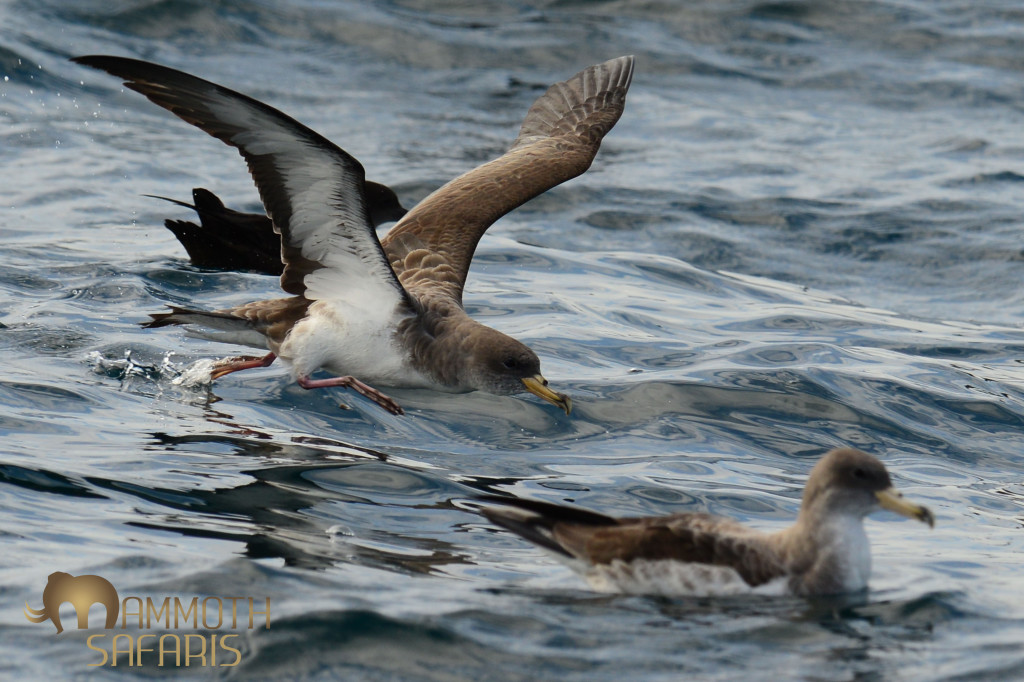
These Cory’s Shearwaters spend the summer in our waters off Cape Town and can be seen singly or in flocks of over 100 birds. Amazingly they are rather long-lived birds going for well over 30 years!
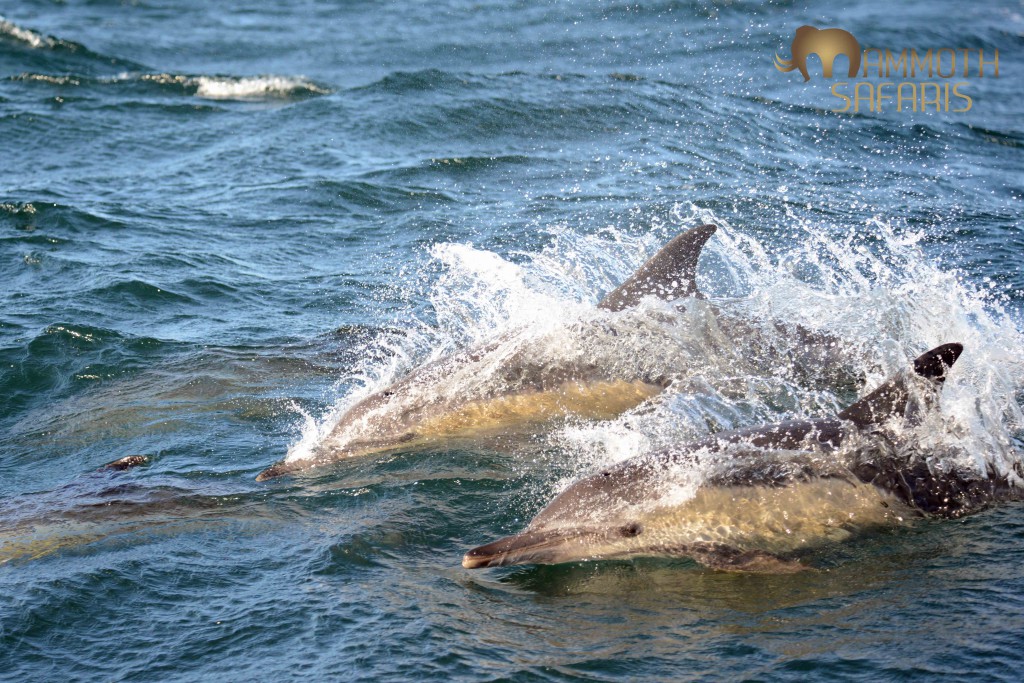
This is one of my favourite subjects, especially at this time of year when the Long-beaked Common Dolphins aggregate into megapods of over 1000 animals – the water literally boils…and the fish don’t easily escape!
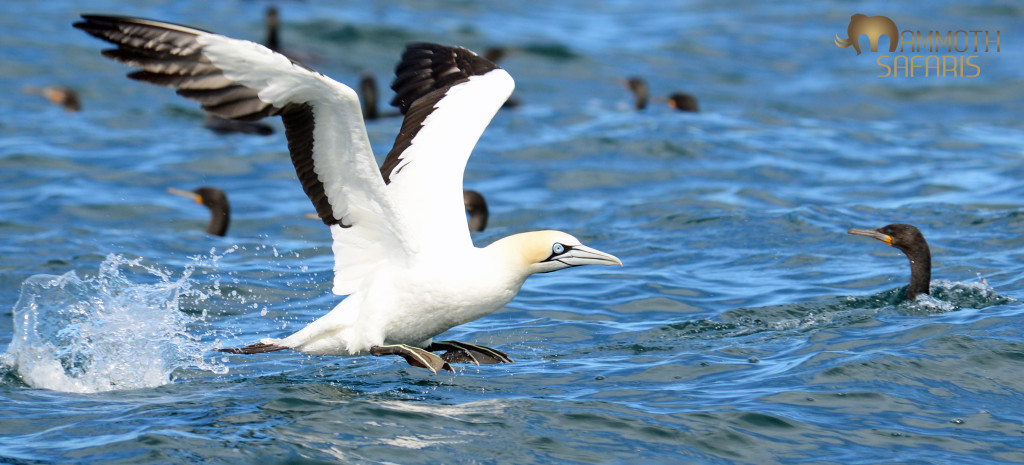
The usual challenge when photographing this Cape Gannet is to snap the moment it enters the water at break-neck speed. This time the light was great and I snapped it as it gathered momentum to fly off. The water and its eye match nicely!
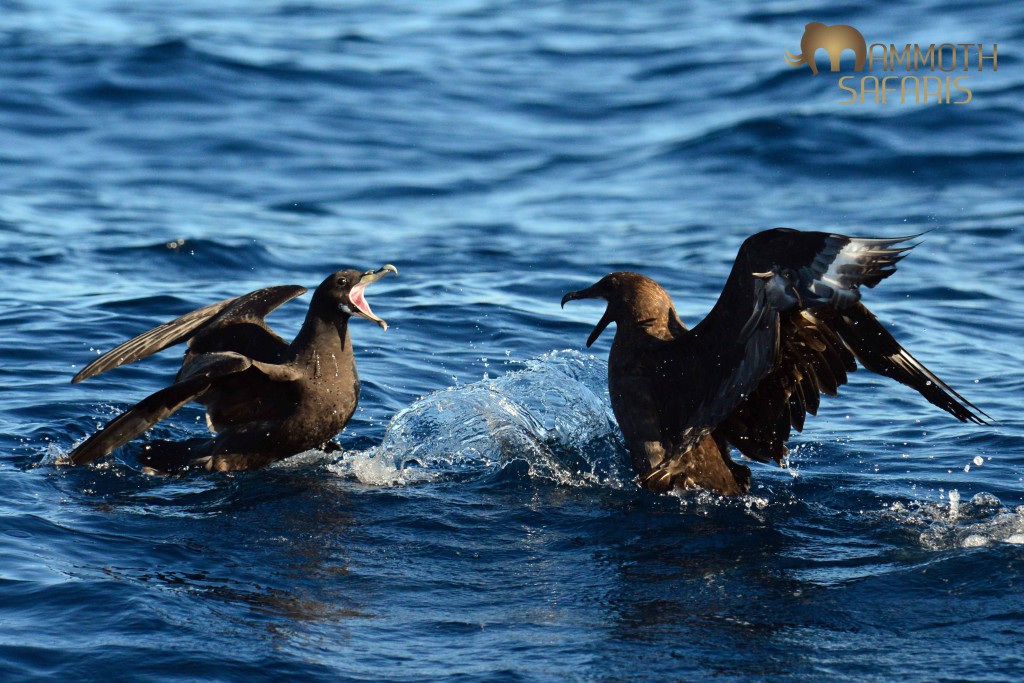
This shot is almost guaranteed on most days at sea as these are two of the more common species – the larger Skua pirates from the White-chinned Petrel.

Not a seabird is it? This handsome bird can only be seen on Robben Island where it was introduced in 1964 by customs officials. A far cry from its typical rocky mountain habitat over much of Eurasia, but they seem to be doing well.
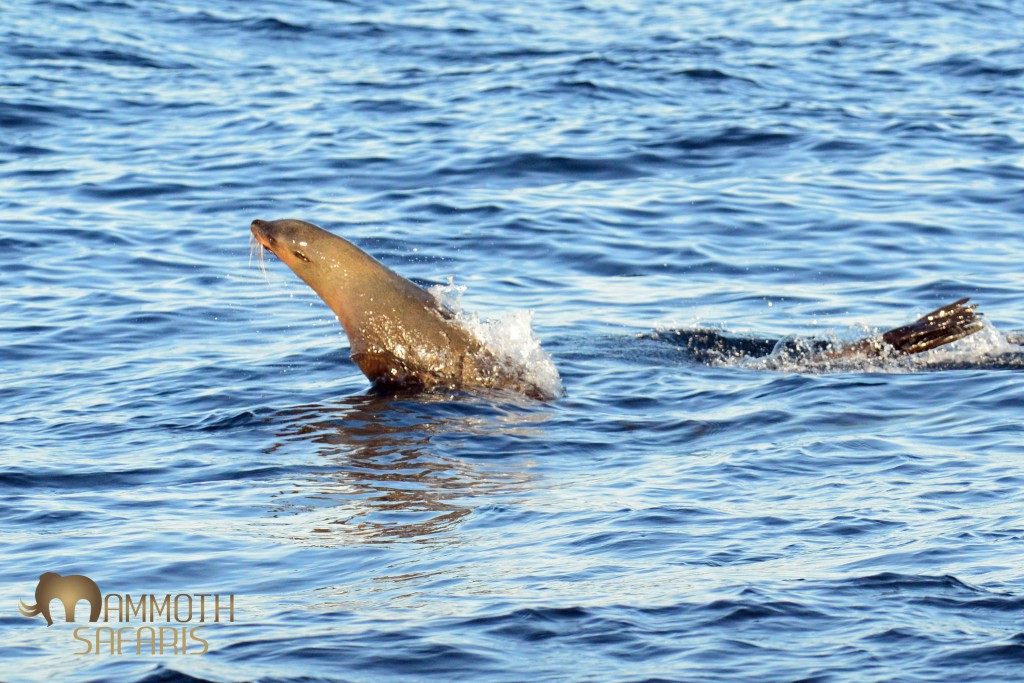
These are great predators in their own right, but off Cape Town the South African Fur Seals regularly fall prey to the Great White Sharks.
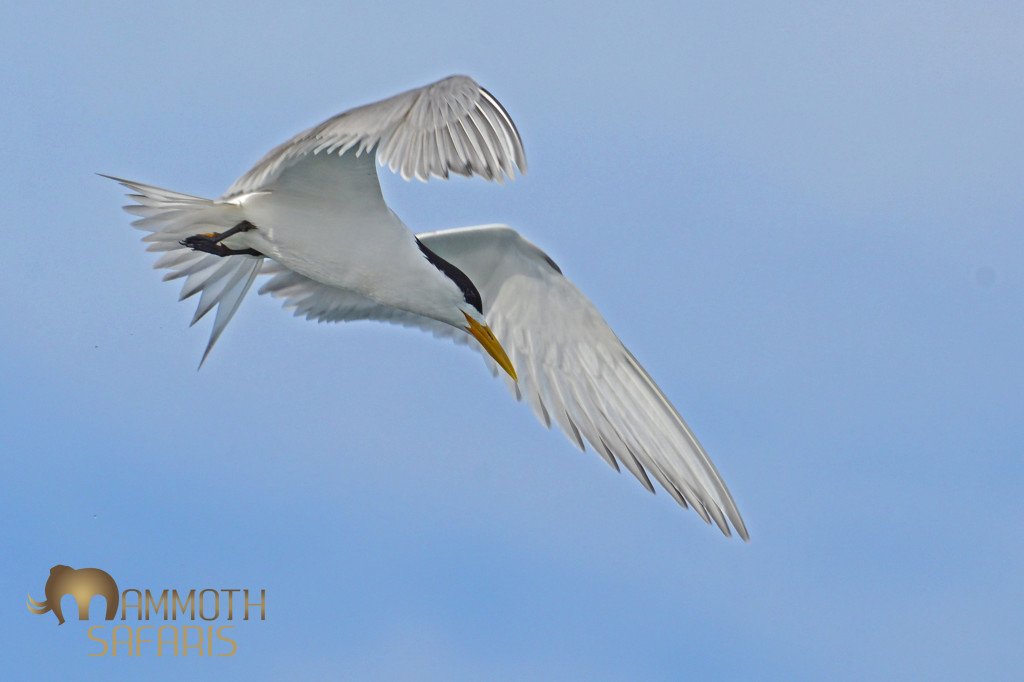
This stunning Swift Tern was hunting with great success in amongst the 10,000 odd cormorants we had all around the boat.
Rufiji Rhythmns
Seeing one Africa’s great rivers in flood is always special. To be honest I prefer the Rufiji when she is lazy and her sandbanks exposed, but the sound of her unstinting pulse in the green season helps me to sleep well after a long, hot day in the bush. Dawn brings the nasal baa of Trumpeter Hornbills heading to the figs trees, shrieking parrots, hyrax and manic Yellow Baboons. The hippos have started giving birth as the long rains approach and with all we are seeing here, I can confirm that Selous is the finest place to see bee-eaters anywhere in Africa. Despite rampant poaching in this vast game reserve, there are daily sightings of small herds, perhaps more skittish than I remember in the past though. The summer birding has been fantastic too, so even though I know the roads are always rough in Selous and it is almost always hot, I will be back soon – mainly because I enjoy walking in this magnificent wilderness! (Alastair)
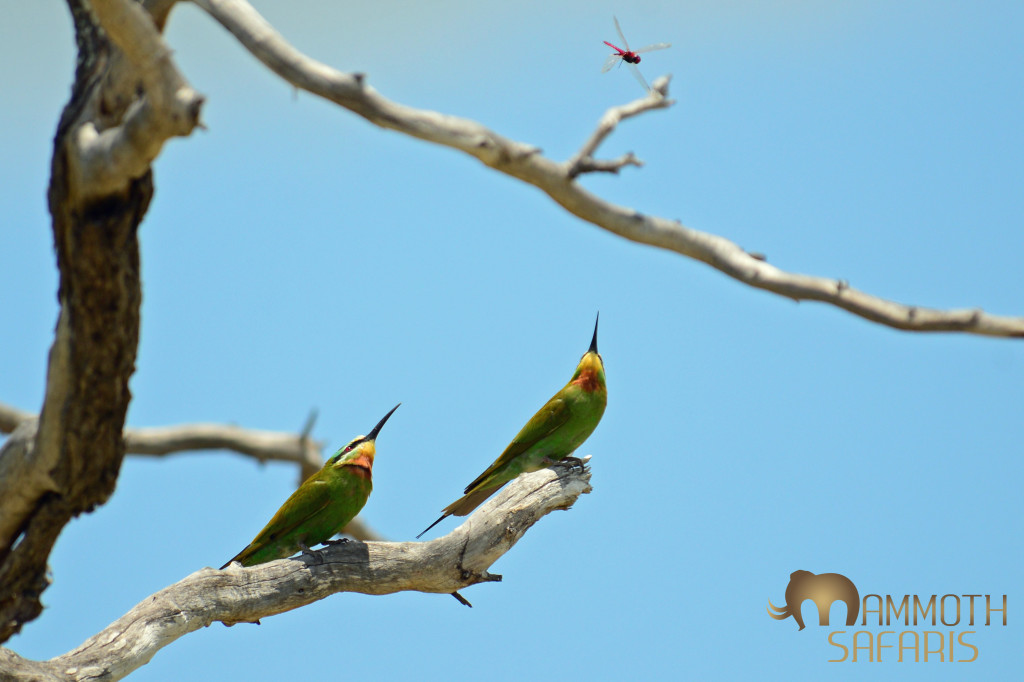
This was a lucky escape for the dragonfly that flew right past a tree loaded with Blue-cheeked Bee-eaters – this is like running past a family of bears whilst covered in honey!
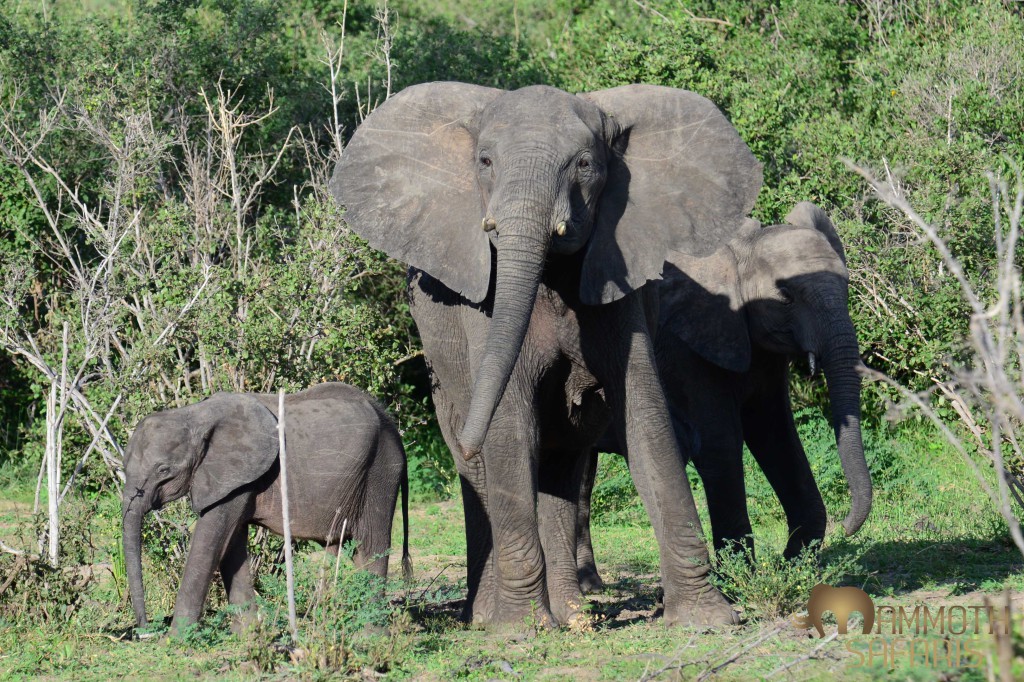
Despite the fact that this vast game reserve has again become a killing field for these magnificent animals, we did manage daily sightings of small family groups in the miombo and along the river.

These African Skimmers represent wild Africa to me as they only survive where the natural seasonal flooding on large rivers is still in tact. To watch them feed with beaks cutting the water is special.
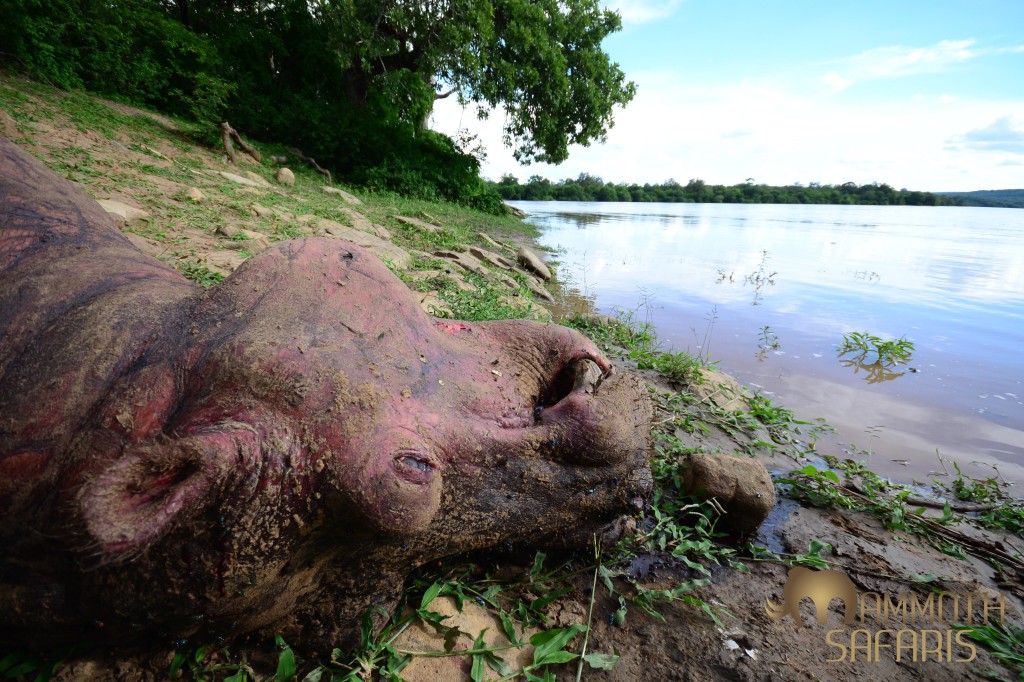
We spotted a dead hippo on the banks of the Rufiji. As we approached a large bull snorted and made a bow-wave away from us. The scene of destruction of the vegetation told the story of how the two must have fought through the night – and now it is a case of waiting to see if the crocs, hyenas or the vultures get here first…
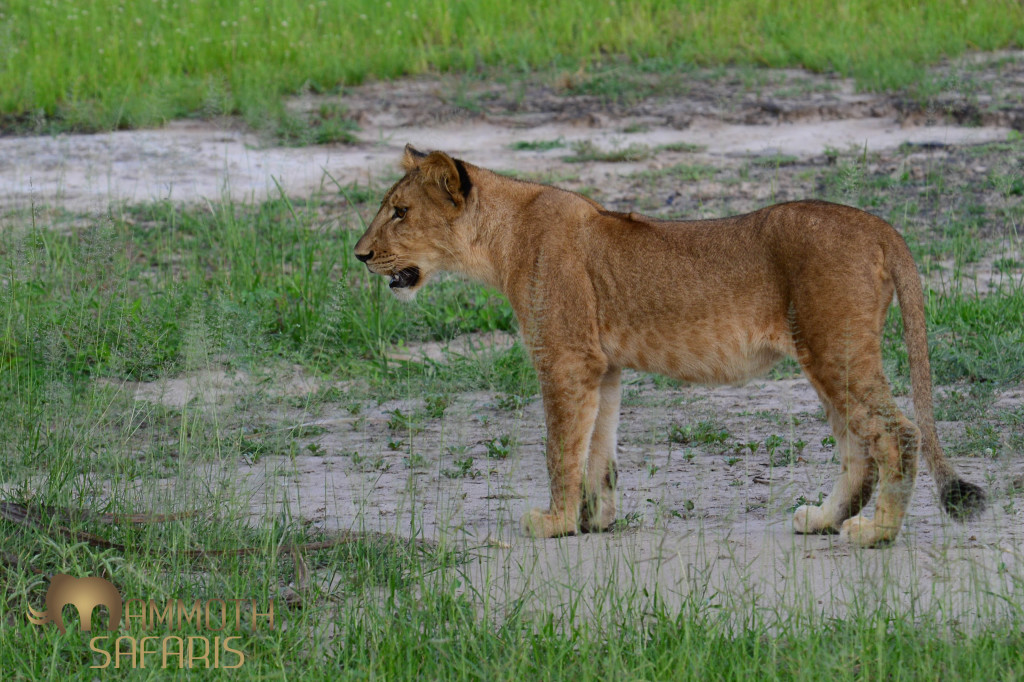
This is the only decent shot I got of a small pride that we found devouring a carcass inside a palm thicket. The best part was listening to the one female growl at the young cubs as they braved her fearsome noises as they edged in to claim a small bit of the kill.
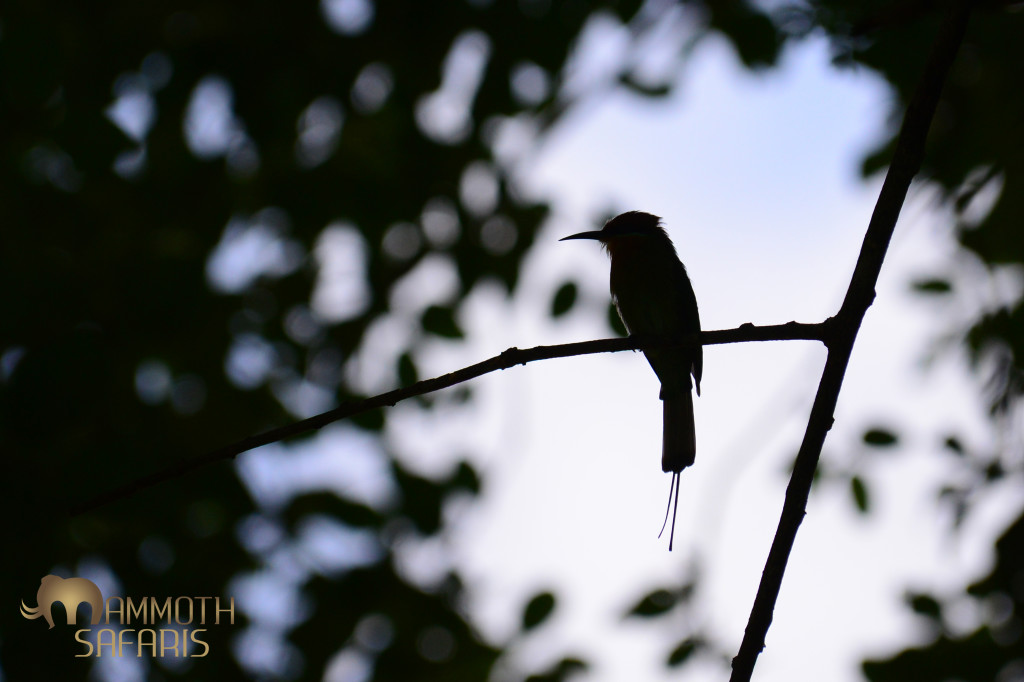
In the end I decided the backlit shot portrayed this superb little bee-eater best. Although colourful it spends much of its time hunting from dense riverine bush. This is one of 8 bee-eater species we saw!!!
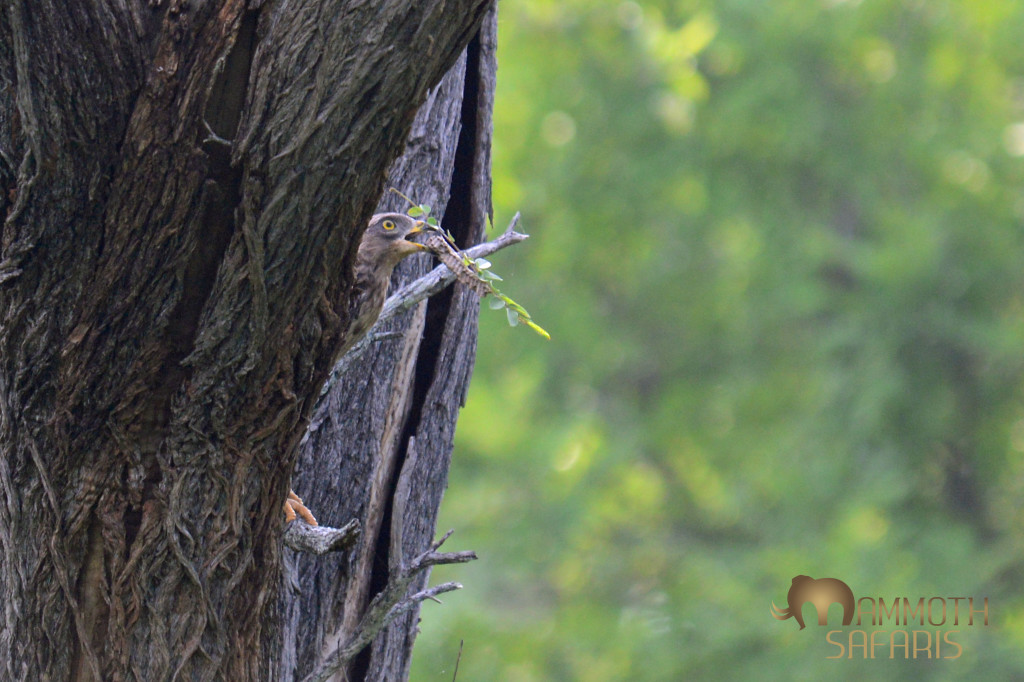
Not a great shot this, but we saw numerous of these migratory Eurasian Honey-buzzards in Selous’ woodlands and this one actually dropped to the ground and ripped out a wasp nest to eat – textbook!
Desert Dreaming in Sossusvlei
I have just spent a few phenomenal days at &Beyond Sossusvlei Desert Lodge. Although I have been to the desert a good few times before this was a first stay – and it was all I had hoped and more. Staff service and romantic accommodation aside (all excellent), it was the space, serenity and detail in the desert that was so inspiring. Spending time with resident astronomer Terry was great as we had close up views of Jupiter and its moons amongst others. My camera was on fire most of the time as there are just so many opportunities and angles to explore. Thanks to the team there for an amazing stay. (Alastair)
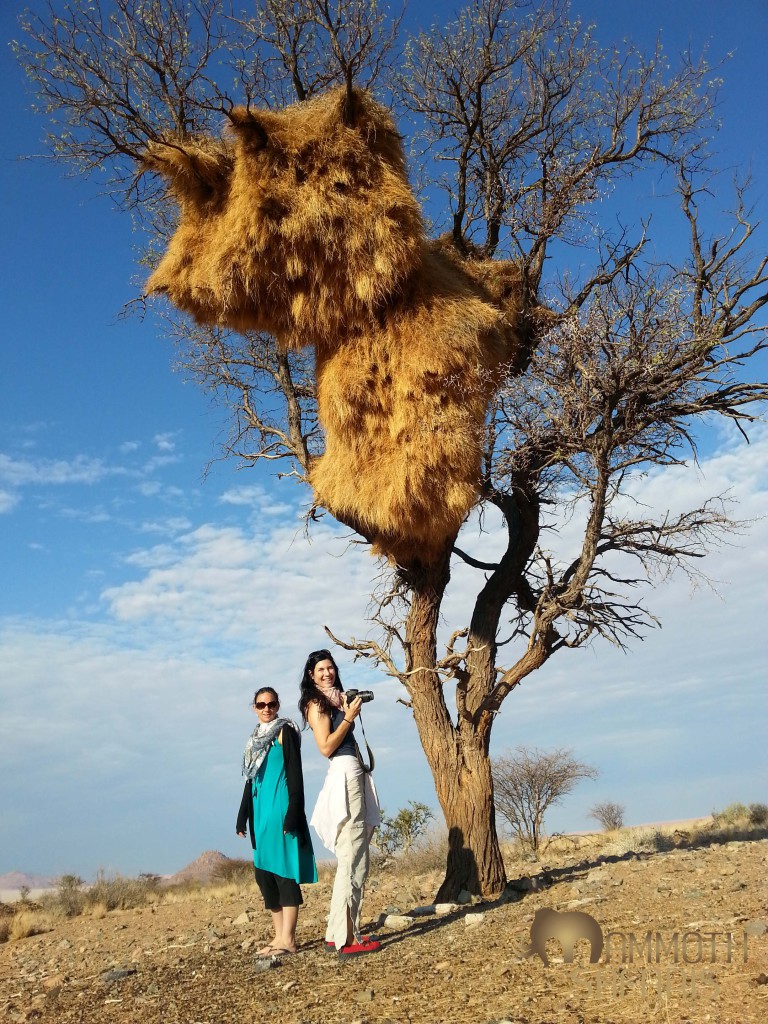
Two incredible women posing beneath the impressive Sociable Weaver nest – purposefully offbeat to get them all in!
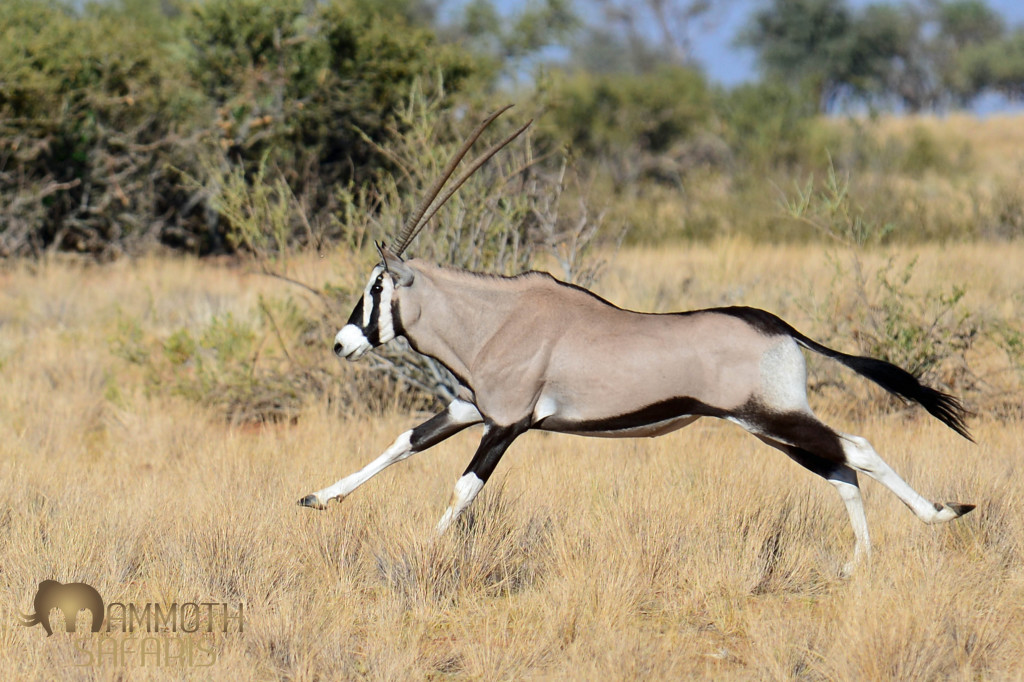
If there is one wildlife reason that stands alone for visiting Sossusvlei and the Namib Rand, it is the Gemsbok What a magnificent antelope!

I have always maintained that every lodge needs some wildlife in camp to make it come alive – these Sociable Weavers came in from their giant nests everyday ‘to entertain us’!
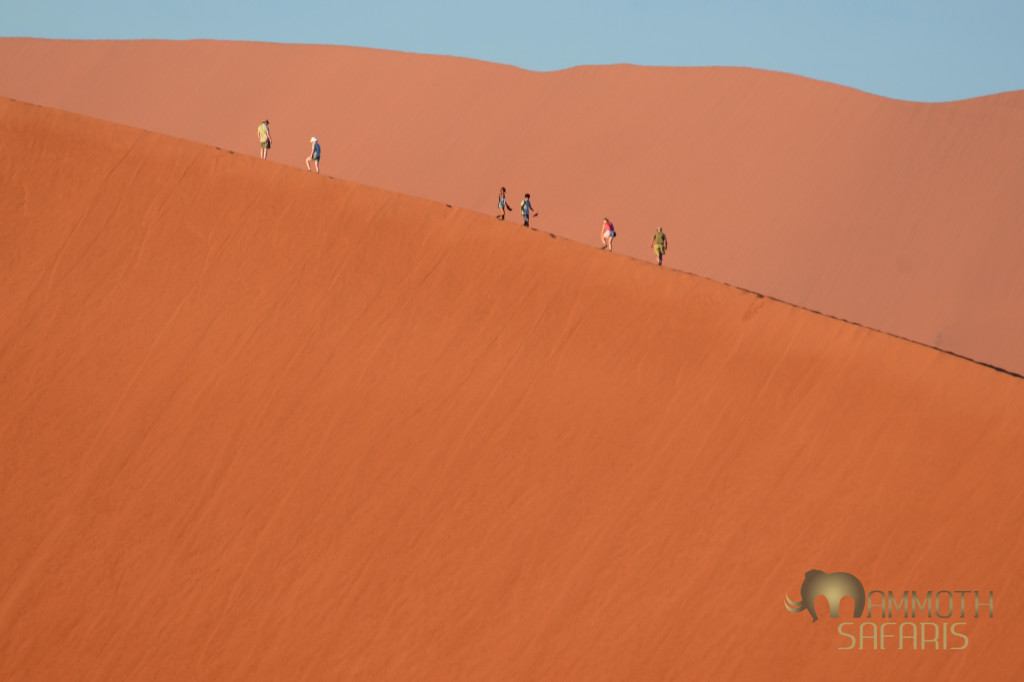
It requires a little sweat, but the views from the dune tops and the freedom to get down how you please are both worth it!
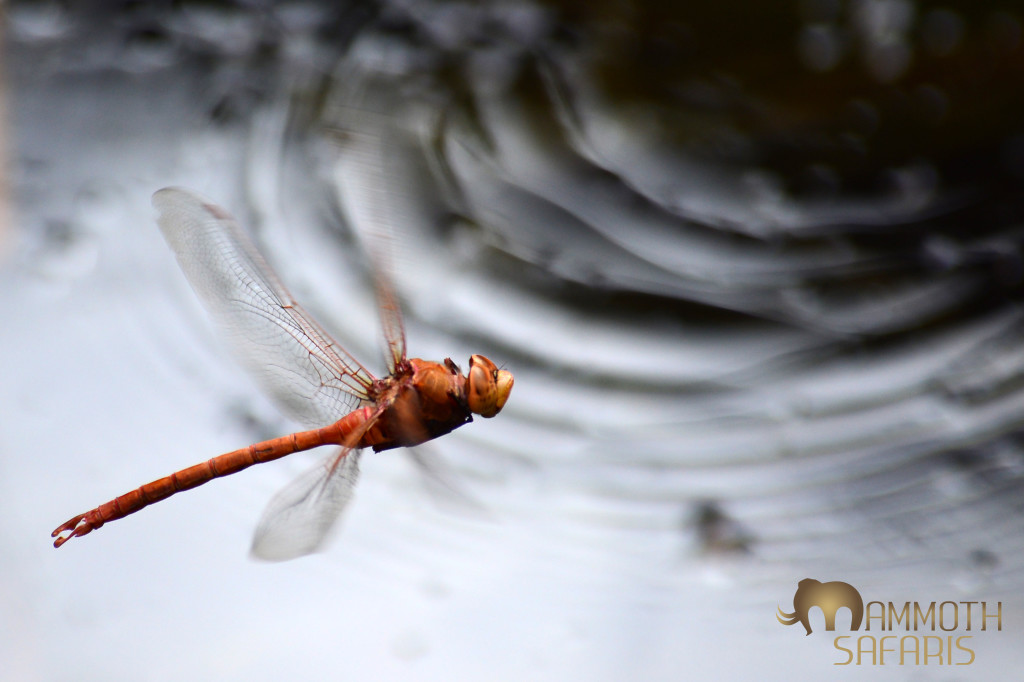
One doesn’t normally associate dragonflies with deserts – I found this huge Orange Emperor dominating a rock pool at a remote waterfall on the edge of the desert.
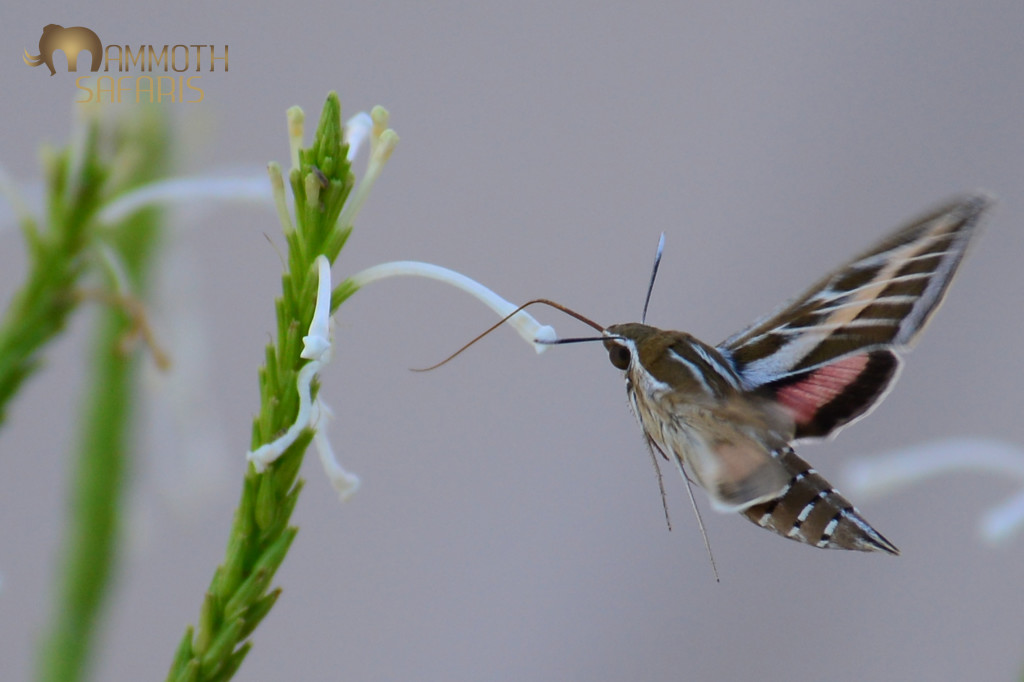
Within 2 days of the rains, the insects emerged – none smarter than this busy pink-winged hawk moth which fed and pollinated the dainty white flowers in front of the bar!
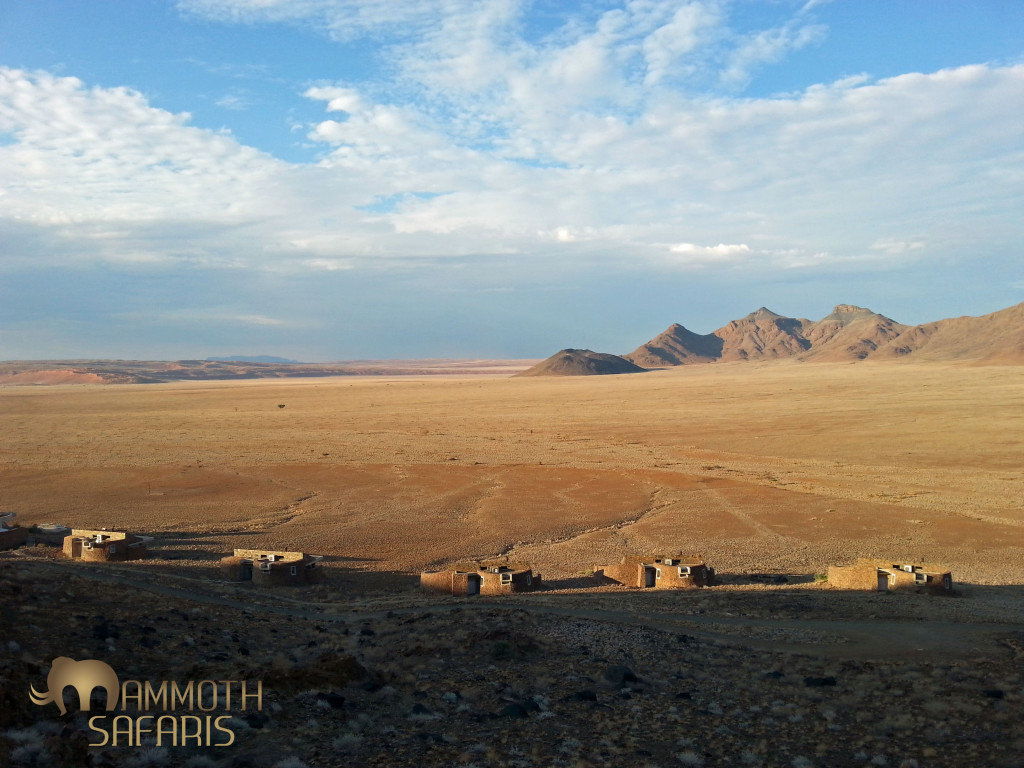
I snapped this shot from behind the lodge one morning when the air was clear after rain the previous day.
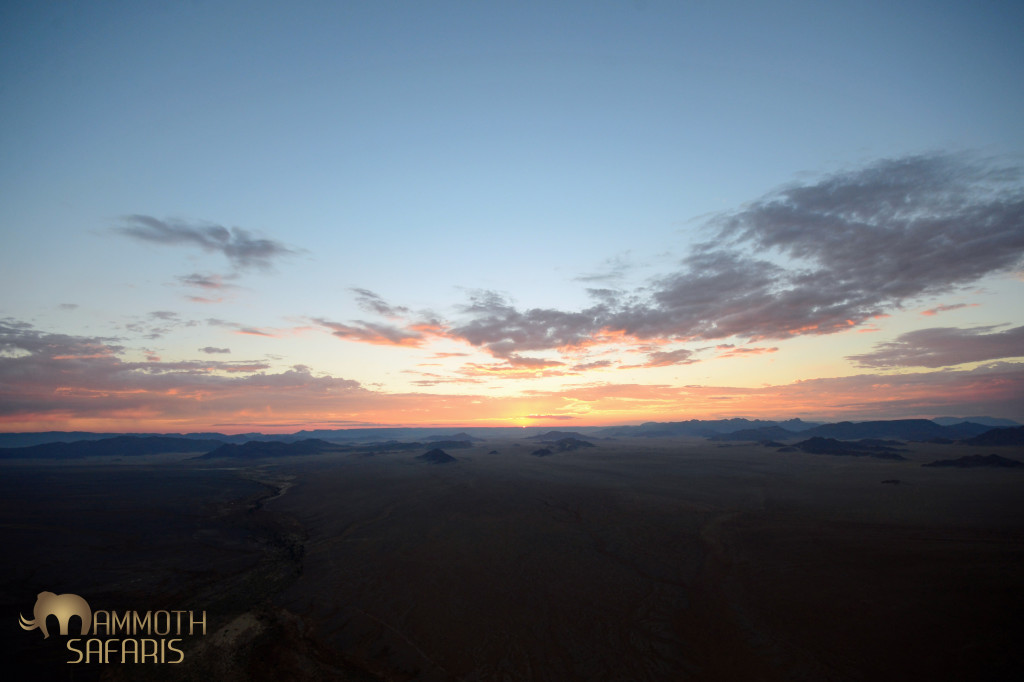
It is hard to put into words the silent, weightless feeling of rising in a hot air balloon in the desert dawn. Namib Sky were fantastic every step of the way.
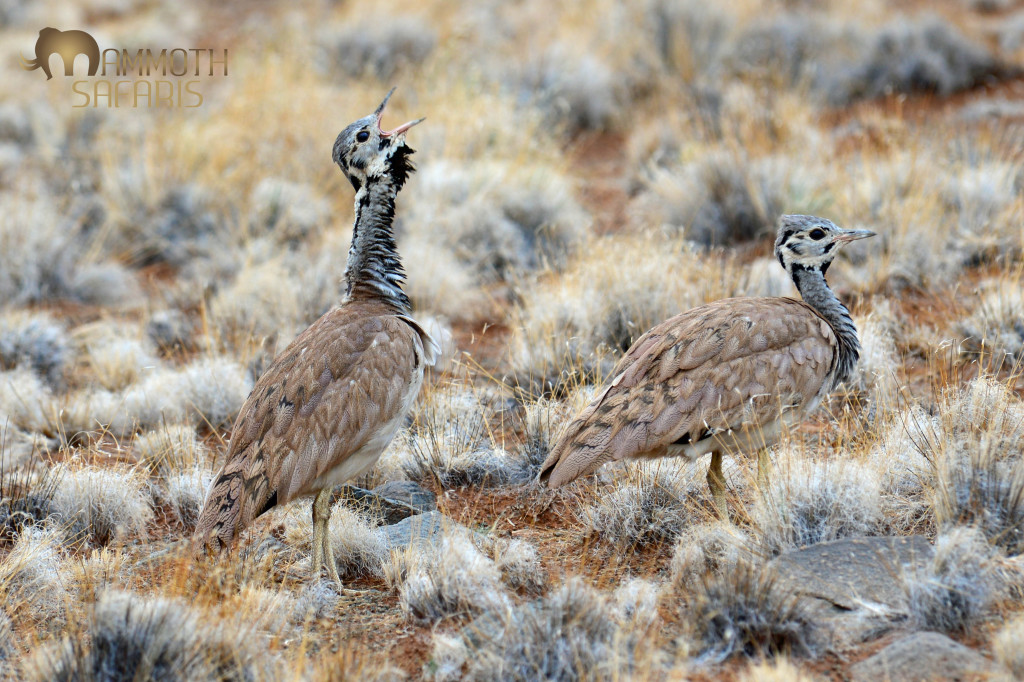
One of the distinctive sounds of the desert is the croaking of Korhaans – we were treated to these two males as well as a female not far from the lodge one afternoon.
Singita Lebombo turns it on…
I had a brilliant week at Singita Lebombo – far from the madding crowds as they say and with lots to see. On the first afternoon we had a Honey Badger approach us on a bush walk as we headed to a rocky view point. The following evening it was lions, leopard, African Civet and serval. The birding was superb with loads of cuckoos, nest-building weavers, Burnt-necked Eremomelas at a nest (look that up!) and the arrival of the Amur Falcons all the way from their journey across the Indian Ocean and down the east side of Africa. We also got see the gradual demolition of a giraffe carcass from the lions to hyenas to vultures and beetles. It had been some time since I last really sat watching and hearing hippos for extended periods of time and this was probably the highlight of the trip. The diversity of this landscape and the chance to really explore makes this one of my favourite destinations. (Alastair)
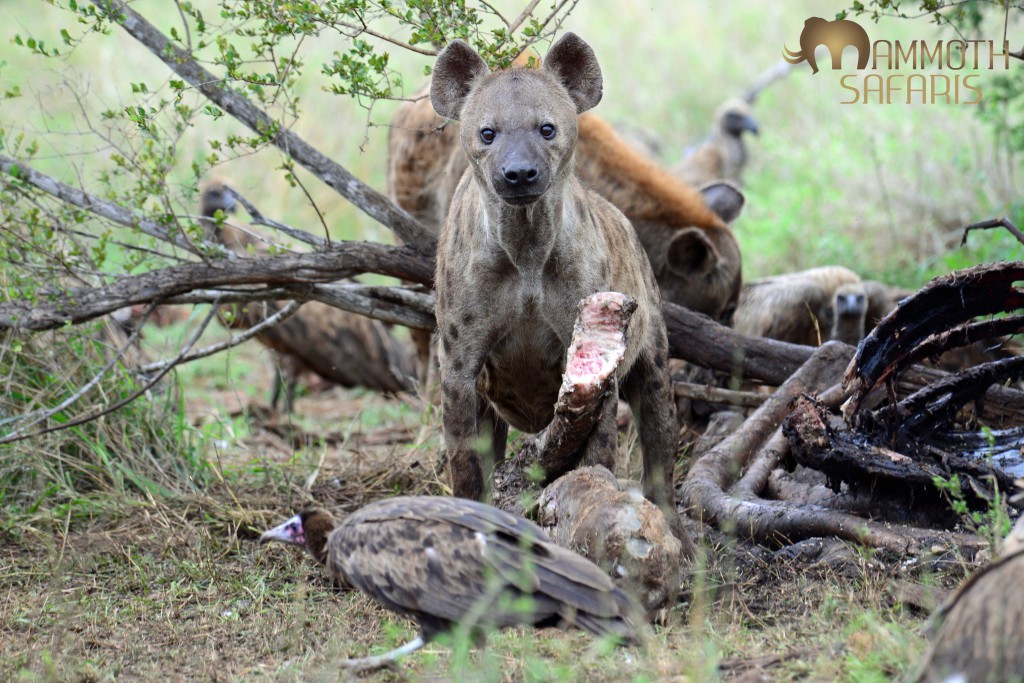
We sat for ages watching the hyenas devour the giraffe bone by bone – the vultures just waited for marrow to shoot out as they fed.
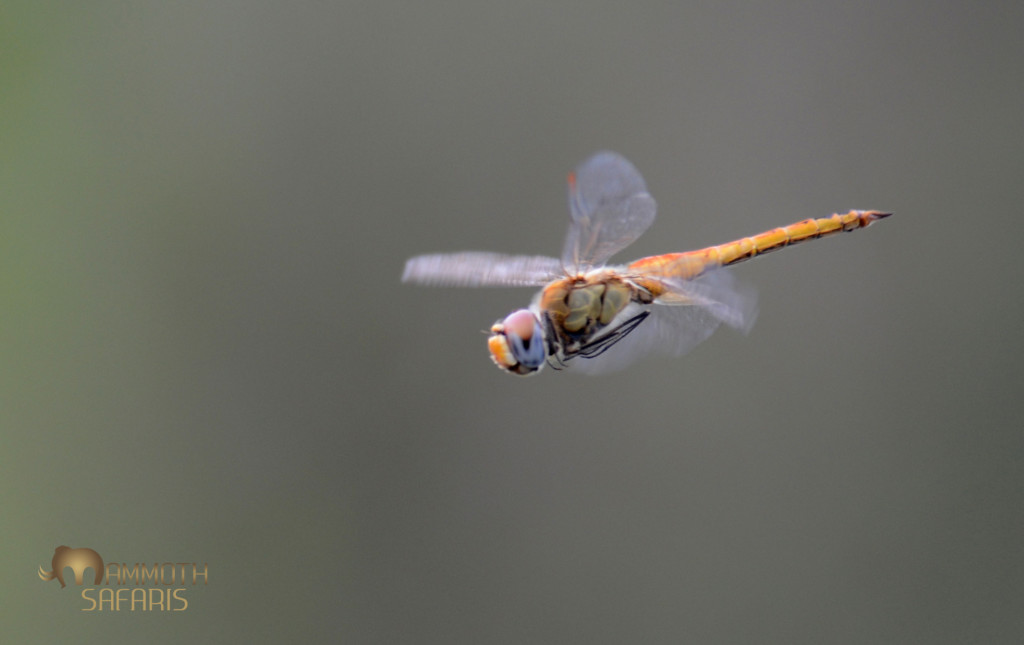
We had photographed a good number down at the river, but this Globe Skimmer was hovering around the Land Rover as if we were an elephant flushing insects!
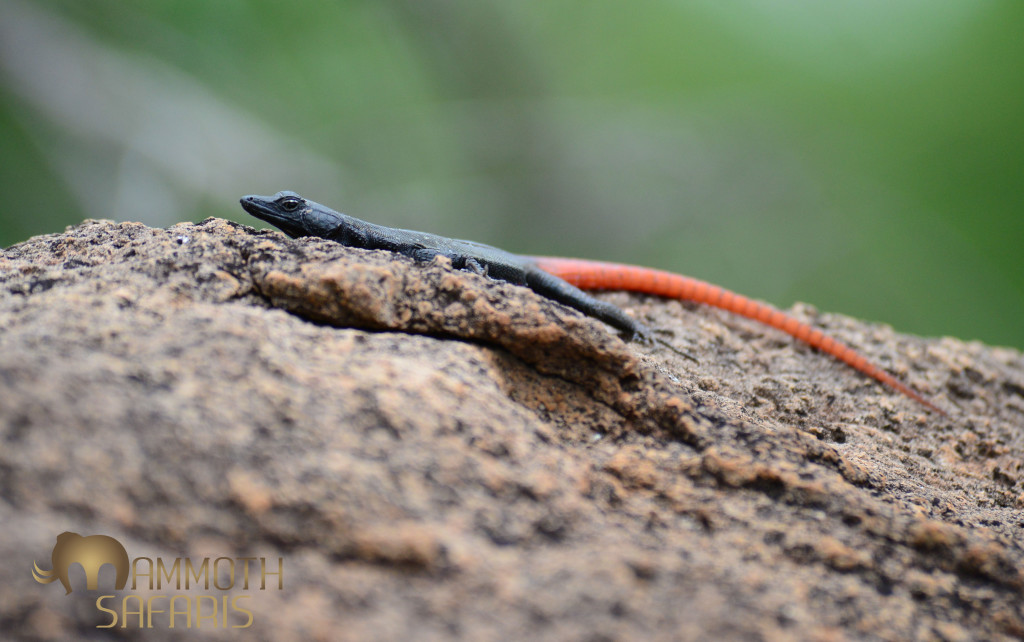
The fantastic geology in this part of the world is complemented by an array of attractive lizards like this Flat Lizard species.
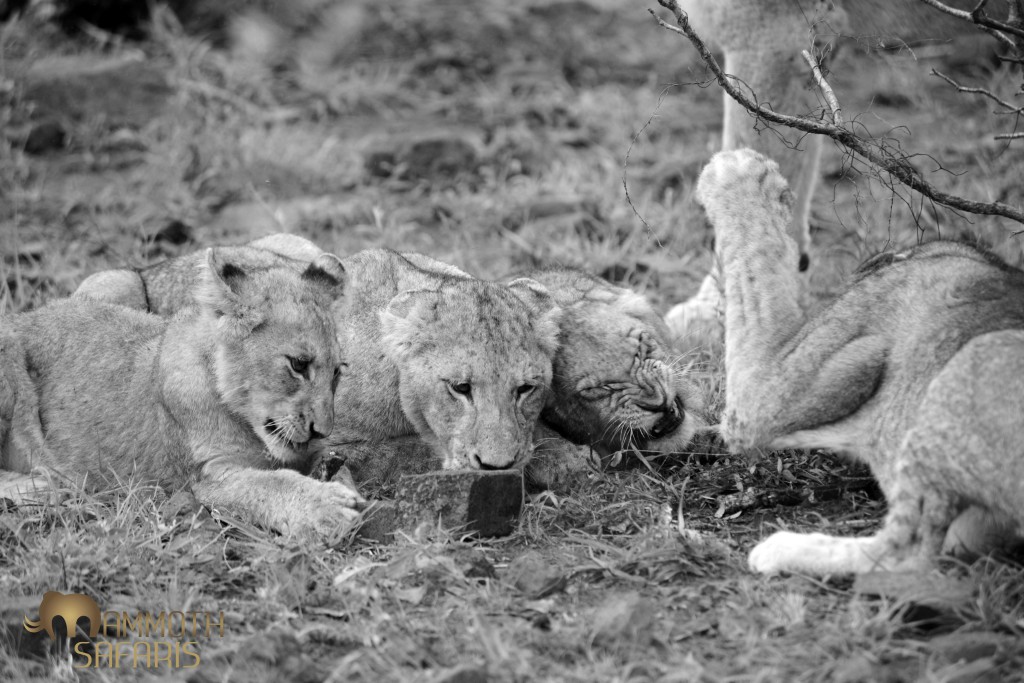
We found a rather lean-looking pride of lions on the Mozambique boundary. Here the cubs were fighting over sinew and a chance to lick the ground…desperate times indeed.
Beauty in the heat at Tswalu Kalahari
There is very rarely such a thing as the perfect time for a safari – I believe you make the most of what you get. In the Kalahari it was really hot, but by getting out early and staying out late, I managed to have a great few days with my guests. We explored the vast Tswalu terrain, seeing big-horned big game and hungry lions as well as a myriad of other creatures. One of the highlights was working with tracker Siphiwe Mandleni. He not only has the eyes of a hawk and finds Pangolin tracks with ease, he has a superb ethic to the whole safari. I can safely say that this is down to his foundations which were laid in his time at the Tracker Academy. The holistic approach taken there has produced some fine young men and instilled the right approach to take tracking into the next generation. What better place to see this in action than on game drive in the red sands of the southern Kalahari! (Alastair)
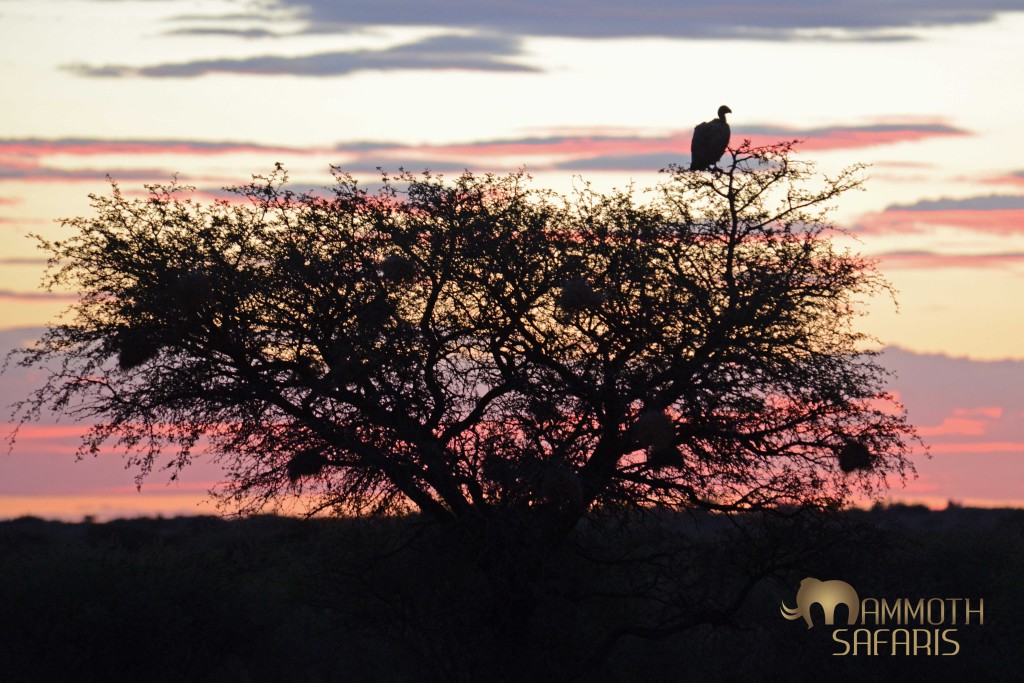
Another hot day comes to a close in the Kalahari as a White-backed Vulture sets in to roost for the night.
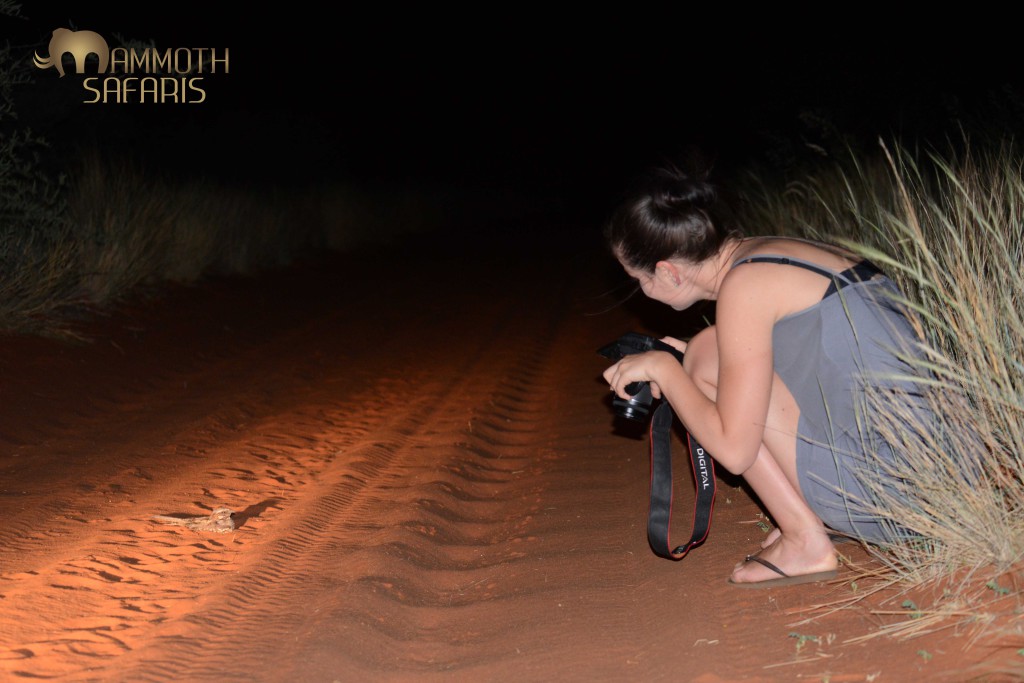
Photographing a Rufous-cheeked Nightjar on the red sand track – always a good photographic challenge to get the light right.
On Safari at Savanna Private Game Reserve
I have taken several trips to Savanna this past year and wanted to share some of the highlights of my time there. Although the game viewing is exceptional, it is the genuine warmth and friendliness of the staff that I enjoy most. They all have this wonderful ability to make you feel so at home I often have to remind myself I am actually working.
It really is all about the game though and that’s the impression you get from the passionate guides who go out of their way to make sure all expectations are met and, where possible, exceeded. Every safari is an adventure, from tracking game to the friendly banter between the vehicles. We are often the first to go out in the morning and the last to come back in the evenings, and that’s not because the guides are lost. Guests are often dragged away from tasty meals to race back out into the field to find themselves arriving at the perfect moment to observe an incredible sighting, and sometimes not. That is nature and it waits for no one but it’s always worth a try. There are very few camps where this still happens and unfortunately, it seems to be a dying service.
At Savanna there is a directly proportionate ratio of embellished camp fire stories to red wine, both of which are in never-ending supply. It does make it a little harder to get up in the mornings but with a fresh cup of coffee, the incredible wildlife and a little nap after brunch, you find yourself quite happily doing it all over again. These are the makings of a great safari.
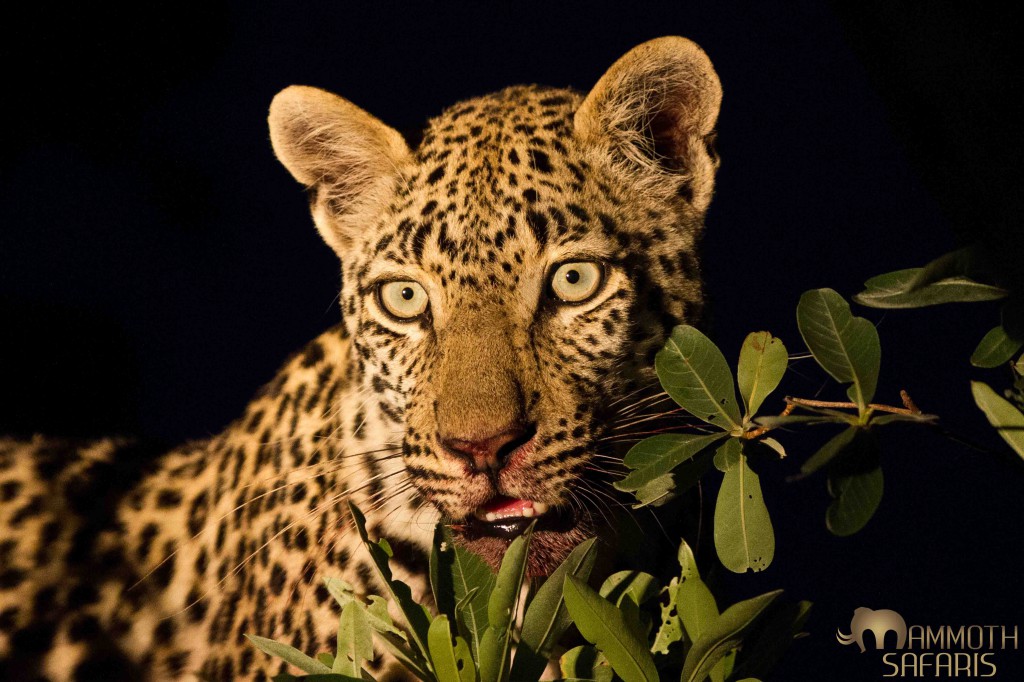
A young female leopard killed a warthog piglet just before dark. After a brief scuffle with an opportunist hyena she managed to hoist it into a nearby tree.
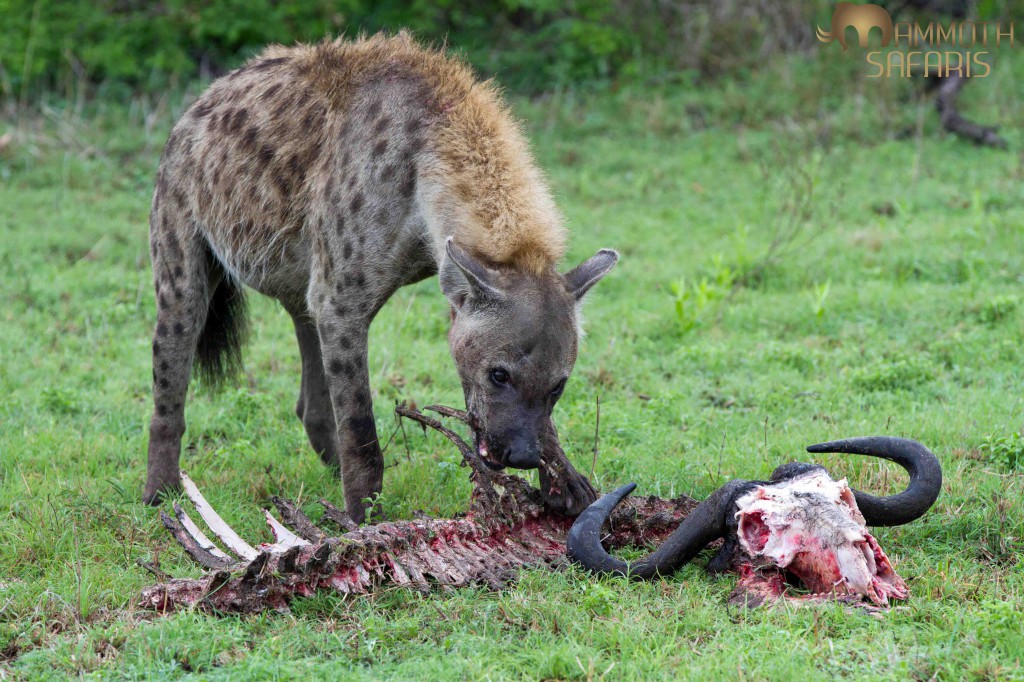
Lions killed a wildebeest in the early morning, this was all that was left by the time we arrived. This hyena spent some time making sure every available piece of flesh and bone was removed.

Affection from an older sibling. These young lions were separated from the rest of the pride, we found them in early morning where they climbed up a termite mound right next to the vehicle and posed beautifully for us.

This young giraffe, with its umbilical chord still attached was running away from a large male leopard who had been watching it closely from the cover of a thicket.
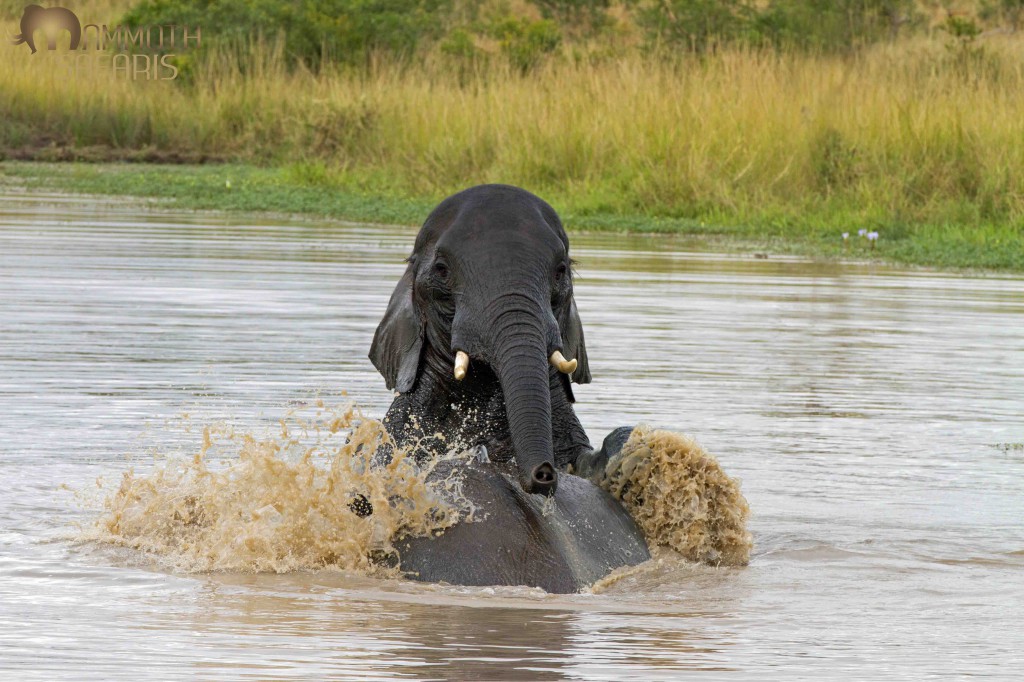
Watching elephants swim is both fascinating and funny, these two bulls certainly wont be competing in a synchronized swimming event any time soon.
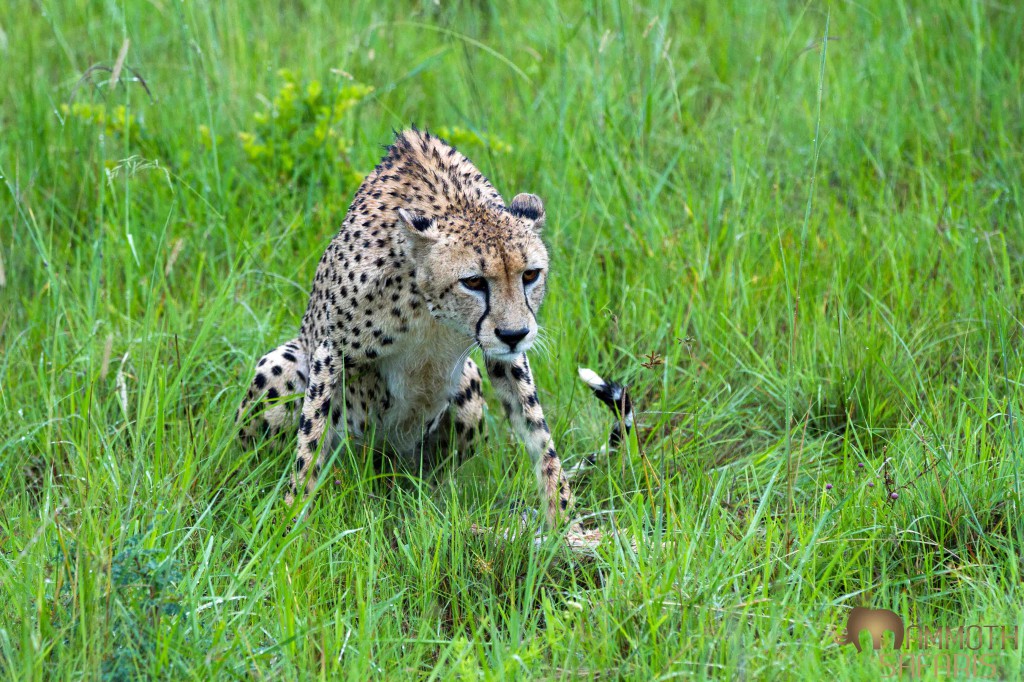
We discovered this male cheetah early one morning, he had caught a young impala lamb just before we got there and had started to feed. Seeing cheetah is always a bonus so we just sat patiently in the rain and enjoyed the sighting.
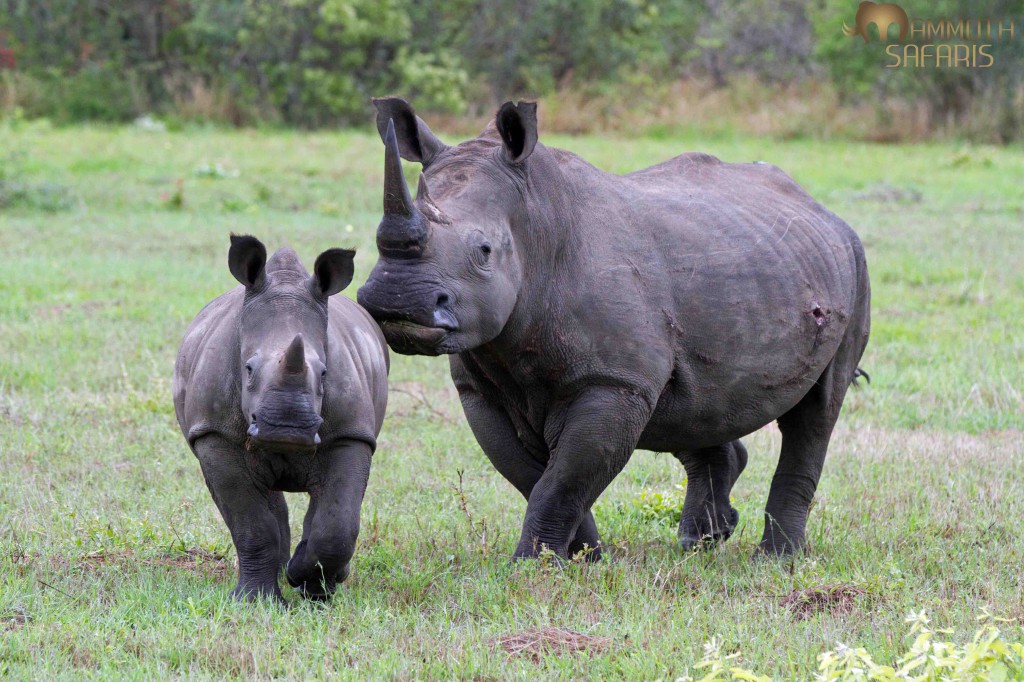
Under immense pressure, one can consider every sighting of rhino a modern day privilege. In South Africa alone close to a 1000 rhinos were poached in 2013 and in 2014 we have already lost 42. How do we stop this epidemic?
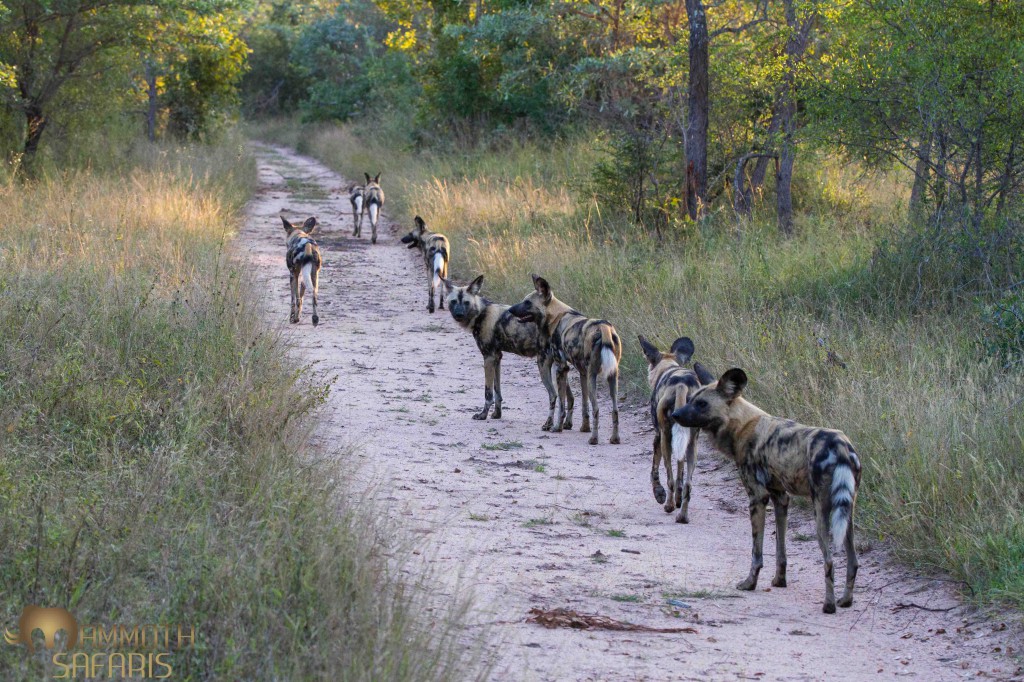
A pack of wild dogs on the hunt has to be one of the most thrilling experiences in the African bush.
At the Foot of Mount Kenya
I just wanted to share a few shots from a very recent trip to the Ol Pejeta Conservancy in Kenya – a perfect end to 2013. With huge views over the plains to Mount Kenya and straddling the Equator, its location is superb. I was not quite sure what to expect when I went, but was blown away by the people, landscape and the game. All the plains were packed with a great variety, most notably the endangered Grevy’s Zebra, ‘Jackson’s’ Hartebeest, Grant’s Gazelle and the exquisite Reticulated Giraffe. The marsh was always full of elephants, we saw lions daily and were also treated to a sighting of a pack of African Wild Dog that recently denned there. The birding was very good as we saw three species of harriers, African Cuckoo-hawk, Hunter’s Sunbird, loads of Tree Pipits in the woodland and a Jackson’s Widowbird lek (male display arena) – loads of classic East African birds. I did some lovely bush walks viewing elephants, buffalo and rhino on foot. I also visited the Northern White Rhino boma (where basically the last 3 of this subspecies that remain on the planet now live – very sad in fact). At every turn there was something new and I took great pleasure in seeing the herds of indigenous cattle that are used to graze the lush red grass grasslands in parts of the reserve. All in all a wonderful experience – can’t wait to be back again later this year. (Alastair).
Cape Town and beyond in spring…
Somehow the words ‘Cape’ and ‘good weather’ don’t seem to mix – this might be true in the mind, but hardly the reality of what I experienced this year whilst guiding a number of trips across the length and breadth of the Cape.
I’ll let the photos speak for themselves – my guests and I got down low to capture the beautiful detail in the immense diversity of wildflowers. We zoomed out far to get shots of endemic antelope, cavorting whales and the majestic grassland birds like the Blue Crane and the bustards. We froze to snap the elusive elephant shrew going about his business. We sat patiently to be rewarded with some action at a seabird colony and even more patiently to freeze the perfect frame at a waterhole in the Kalahari.
Although photography has not been the driving force behind the trips over the past 3 months, it all our eyes to a myriad of details and allowed us to sit back and marvel at the richness of life right here at the Southern Tip of Africa (even when we do have a few rainy or snowy days!).
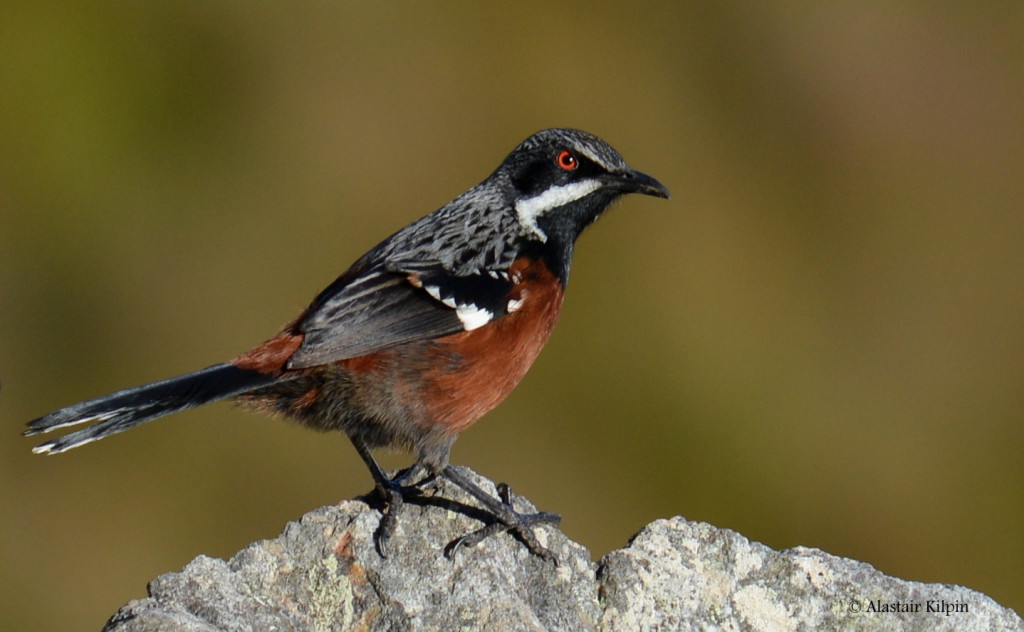
A stunning male Cape Rockjumper photographed in the Kogelberg Biosphere Reserve not far from Cape Town
Family Safari to Africa
The journey began at the Saxon Hotel where we enjoyed superior service and luxury, just what you need after a long transatlantic flight. After an early morning breakfast and a quick transfer to the Federal Air Lounge we soon found ourselves buzzing along at altitude heading towards the Sabi Sands.
Londolozi is world famous for leopard, but we were treated to some of the finest hospitality under the African sun. The game was plentiful to say the least, wild dog on our first afternoon, cheetah on the airstrip and herds of elephants in view from the camp. It was also the added touches of a craft beer tasting at sunset, the marvelous bush breakfast in the warmth of the winter sun that were greatly appreciated. Nothing was too much, even a round of golf was arranged in between game drives at the local course in Skukuza. Sitting in the Varty boma on our last evening being thoroughly entertained by talented guides by day and ambitious rock stars at night. It’s tough to leave a place that creates such everlasting memories and I know a few tears were shed.
A short hop down to Cape Town and we were soon settling in to our villa overlooking the vibrant Camps Bay scene. The African Penguin colony at Boulders Beach provided an effective, albeit short lived, distraction from the highlight of the day which was the fear-confronting experience of shark cage diving. The Apex Shark Expeditions team were exceptional and met every possible expectation; their passionnd their professionalism for what they do and how they do it is certainly a benchmark for the industry. We observed several different sharks throughout the afternoon satisfying our curiosity for these deadly predators. The day ended with an almighty breach by an enormous shark that resulted in a roar of cheers by the awestruck team.
Table Mountain and Cape Point on a windless sunny day is simply hard to beat. Sensational meals at The Test Kitchen, Bistrot Bizerca and La Petite Ferme brought rightful recognition to the mouth-watering meals that the chefs created. No trip is complete without a guided trip to the wine lands of Franschhoek to taste some of South Africa’s finest. Wine maker Gareth Hardres-Williams our, extremely knowledgeable guide for the day, chose some fantastic vineyards and kept us entertained with his humor and stories of his life as a game ranger.
Its amazing how many life-changing experiences can be accumulated in just eight short days. That is what Africa is all about, memories that will last a lifetime and stories that will grow by the day.
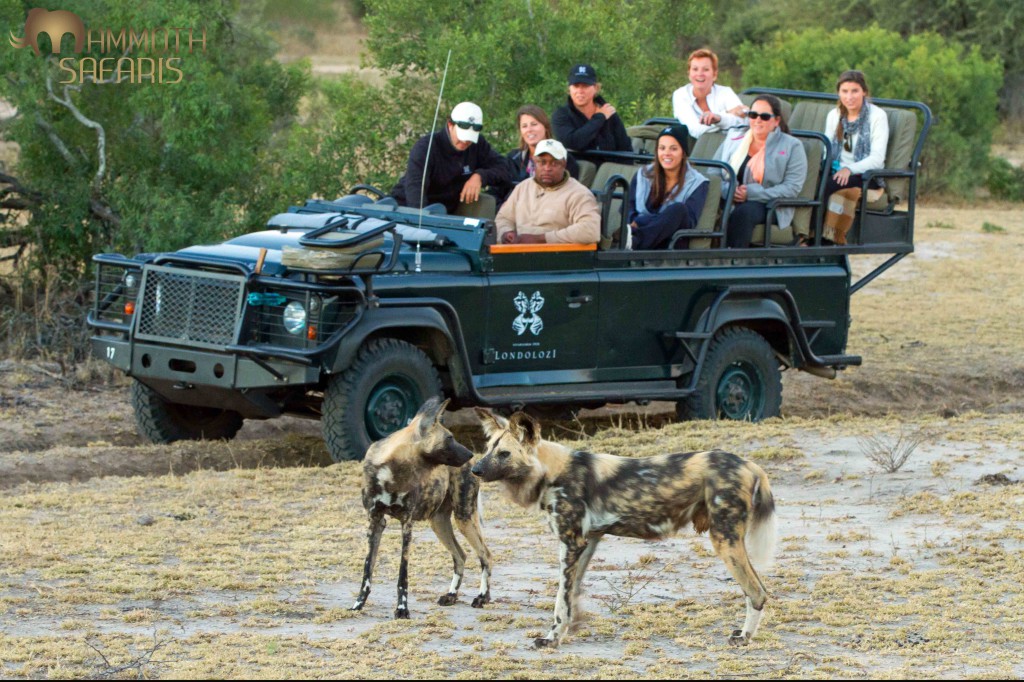
We were extremely fortunate to see a pack of wild dogs on our first afternoon. We spent some time trying to track them so it was really rewarding to find them and watch their natural behavior and eventually seeing them on an impala kill.
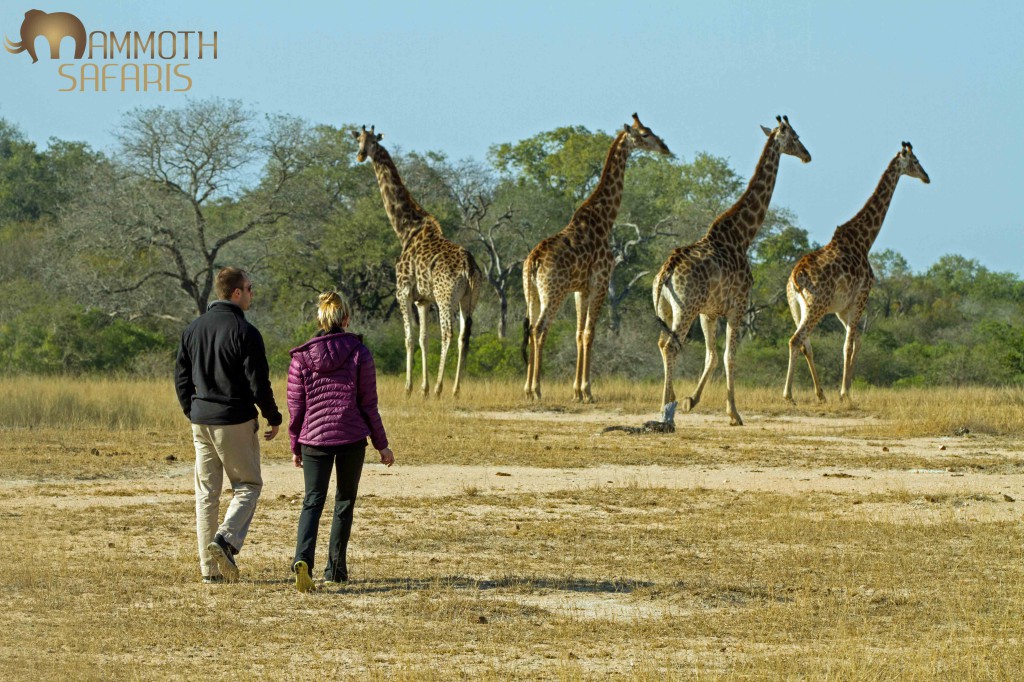
There is a magical moment that happens when you invite people to get off the vehicle and to walk amongst a journey of giraffe. Their faces start with a fascinating look of disbelief morphing into a child like gleam on Christmas morning. It really is a wonderful experience and a allows one to experience just how tall these giants are.
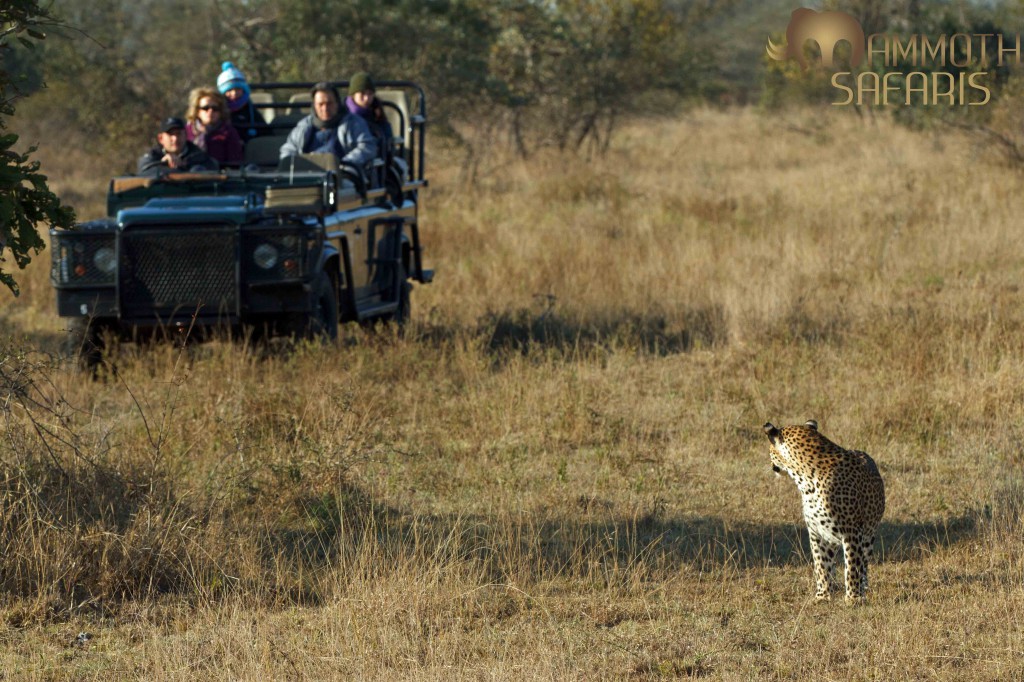
It is always good to give animals their space and watch stories unfold. We watched this mother leopard looking for her cub. Patiently waiting and respecting her pursuit, we were rewarded a wonderful scene of a the cub running towards his mother and watching them reunite and share the special moment with them.
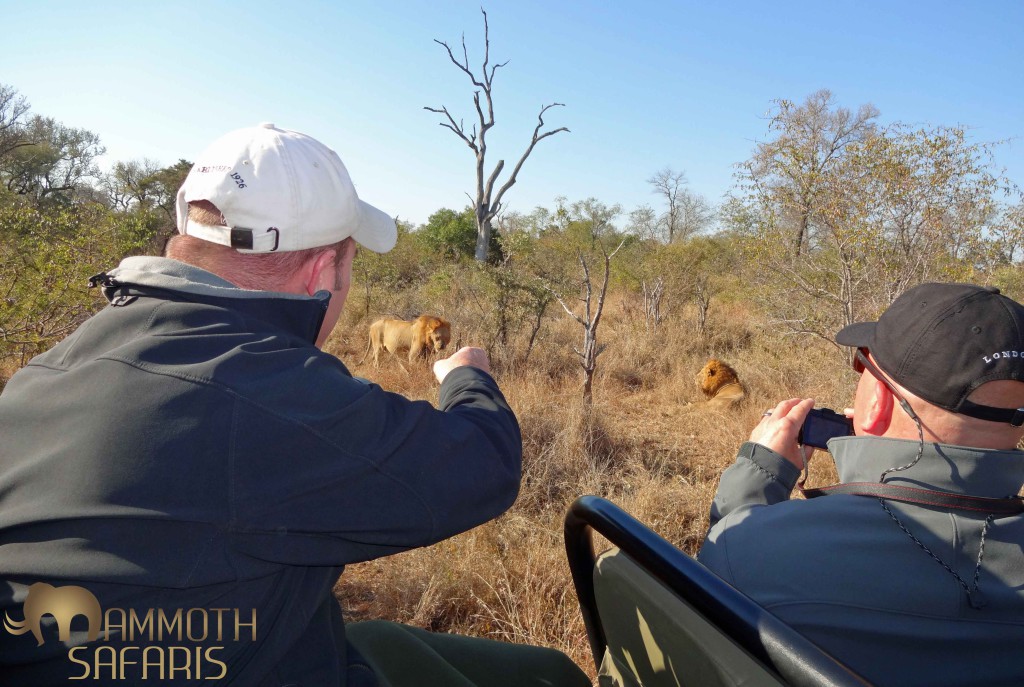
Our ranger and tracker team Tom and Jerry, did an outstanding job using their skills to track and find these magnificent males. To be sitting so close in an open vehicle next to these super predators is an experience that makes the long distance travel to get to Africa completely worth it.
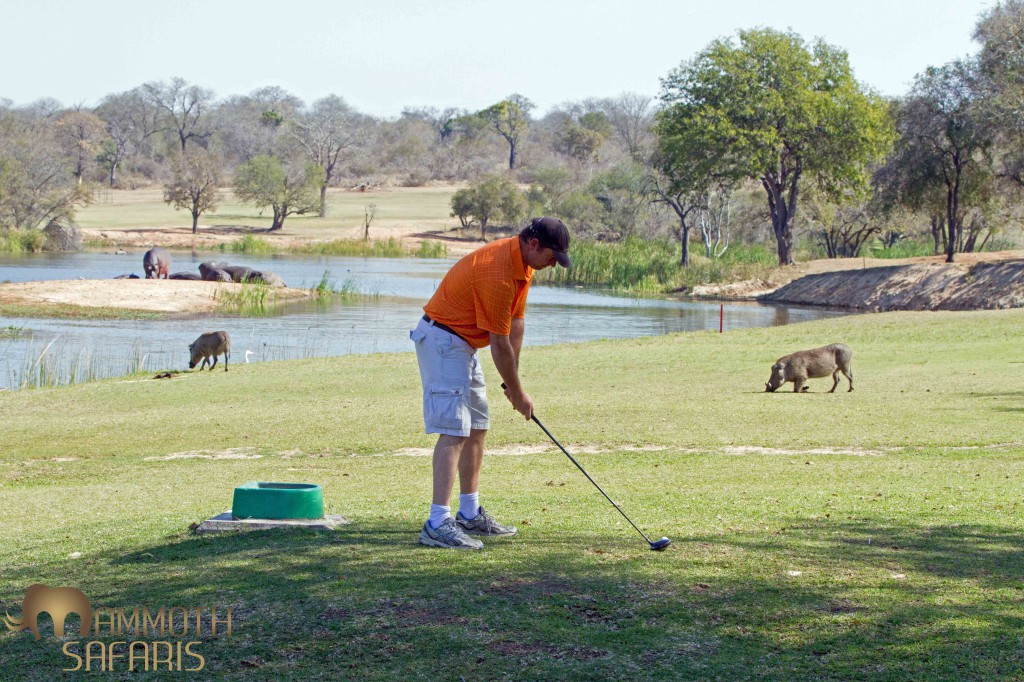
World class guide,Tom Imrie has been at Londolozi for the last 10 years. Formerly a golf pro, he really made the trip for us with a round of golf alongside hippos, giraffe and the green trimming warthogs. The golf course at Skukuza, who’s scorecard sports an amazing image of a lioness eating a buffalo on the fairway is a wonderful experience that Tom managed to squeeze in between our morning and afternoon safari.
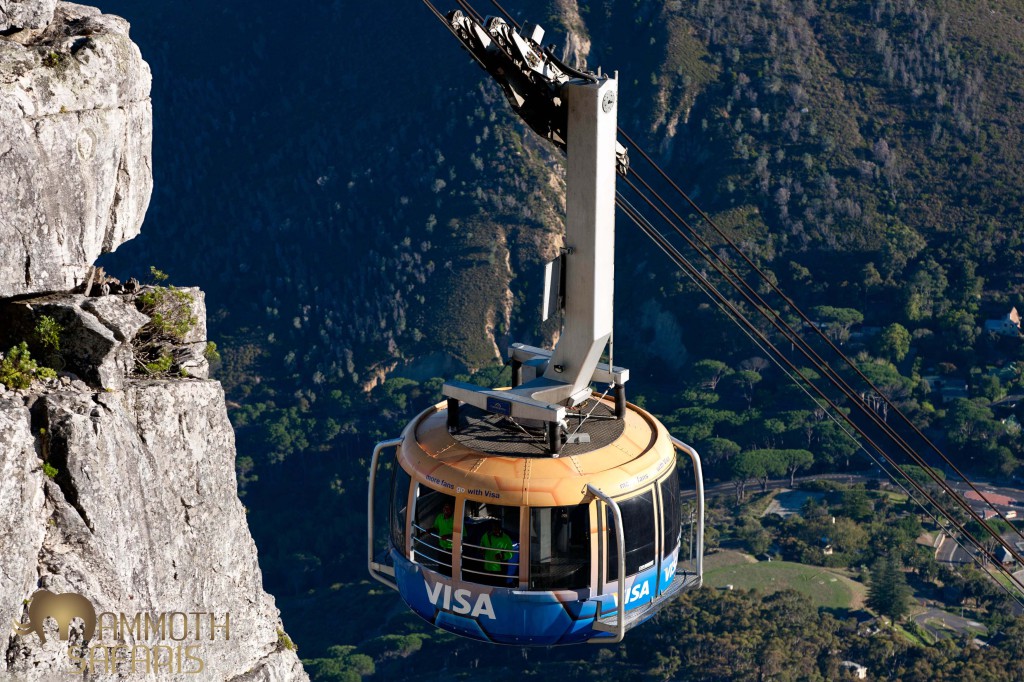
Its always best to get up early to enjoy the spectacular views from the cable car on Table Mountain.
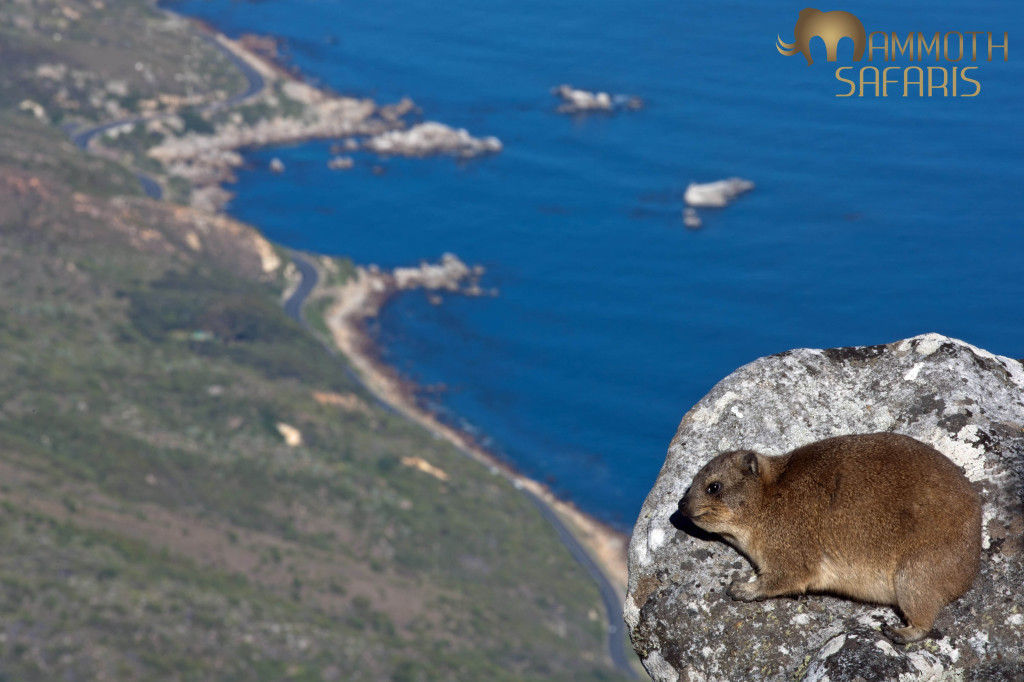
Rock Hyrax enjoying the view from the top of Table Mountain. These cute little animals spend their mornings basking in the sun much to all the photographers delight.
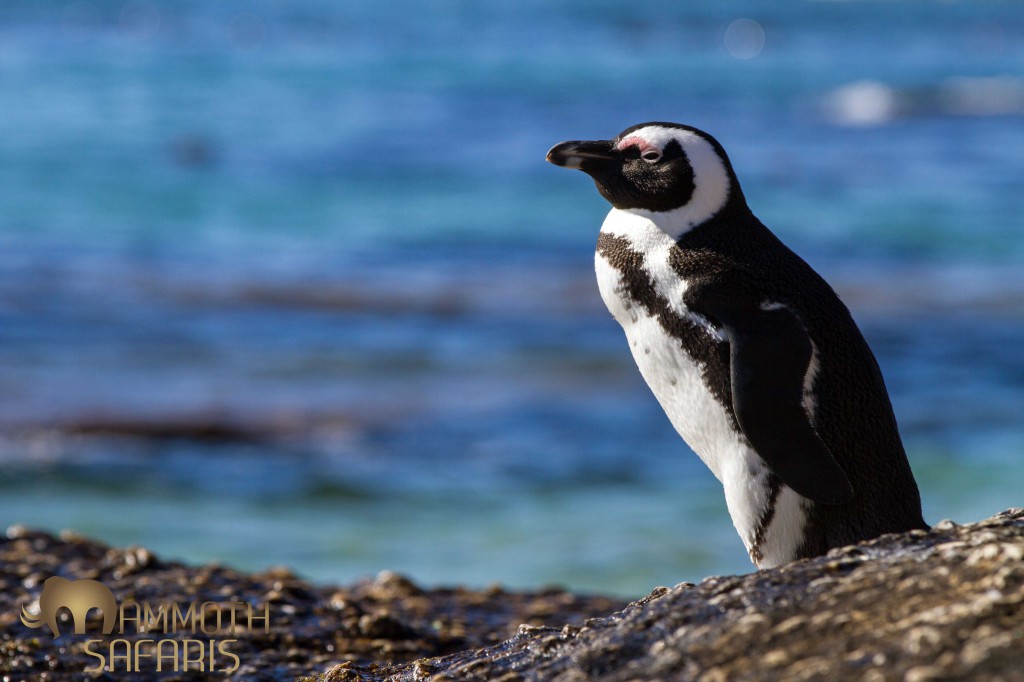
These comical birds are easily seen at Boulders Beach and is a popular spot for most tourists to visit. What people don’t realize is there are less than 20 000 African Penguins remaining in South Africa.
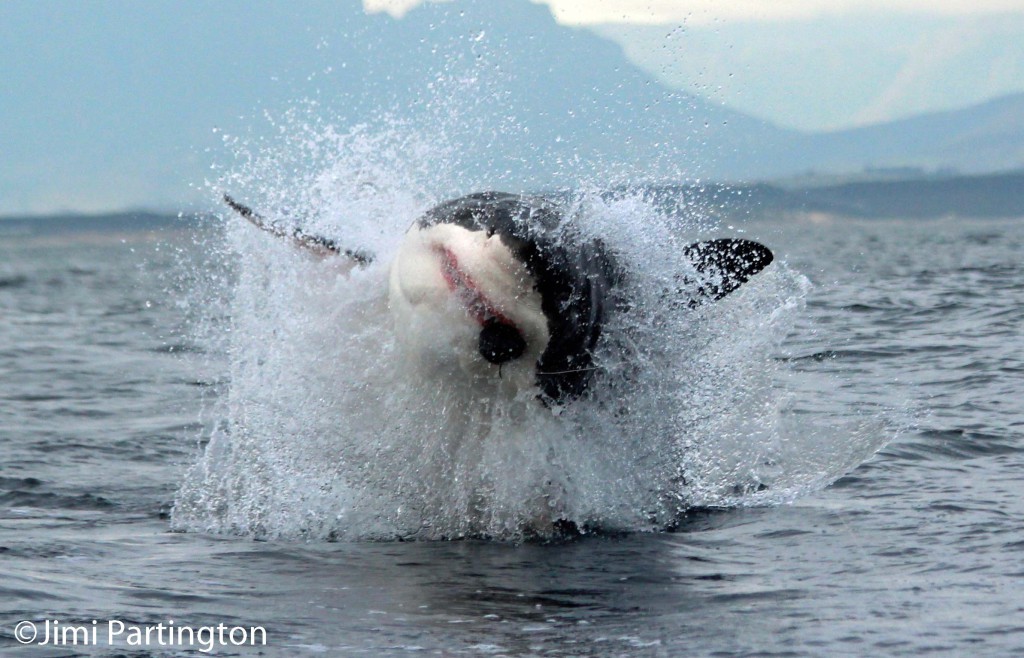
We had a phenomenal shark cage diving experience with Apex. The team were outstanding and went out of their way to make sure we had the best time. A four meter great white breaching with with such speed and ferocity is something we will never forget.
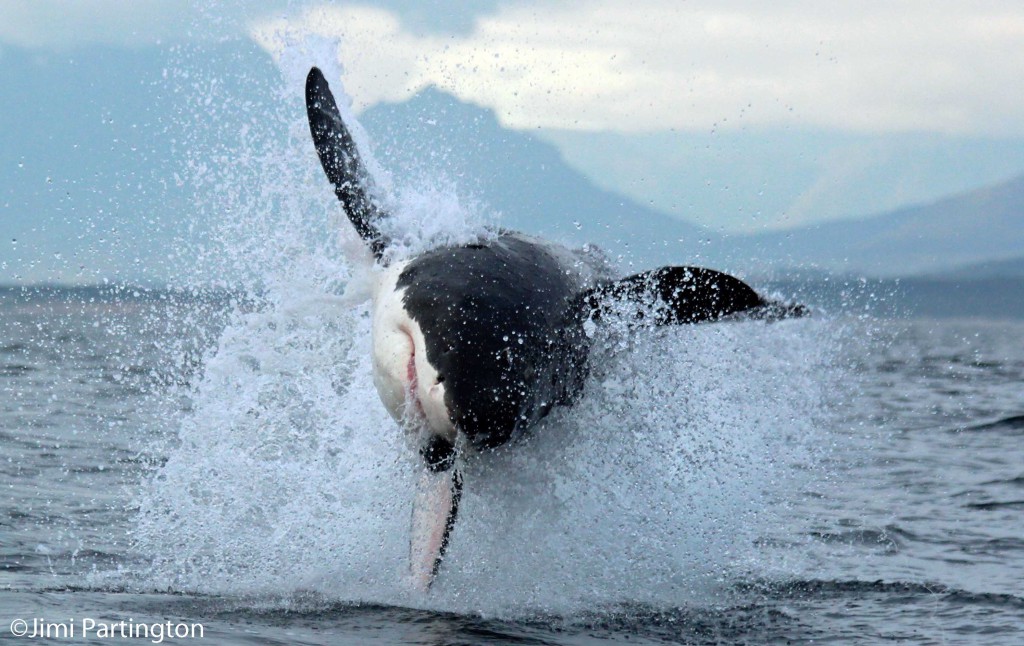
A special thanks to Jimi Partington from the Apex team who shared his incredible sequence of images with us.
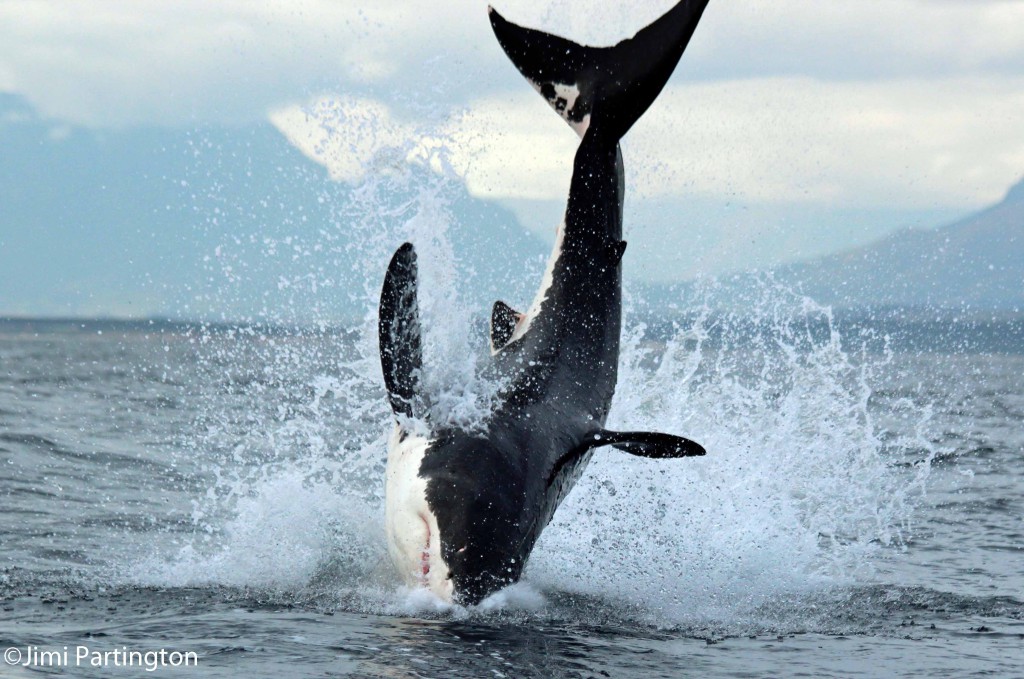
Seeing great whites in action like this is a thrilling experience. Add that to the natural predations which take place around Seal Island and spending time underwater watching them glide effortlessly through the frigid Cape Water is an absolute must if you visit Cape Town.
Congo-Kalahari: From Primates to Pangolins
We set out to create a unique safari, possibly the first of its kind, to experience the diversity of the African continent. For seasoned African travellers, the goal was to find the ultimate guided wildlife adventure combining iconic fauna and flora without compromising comfort and luxury.
Our first stop was the heart of the West African rainforest Odzala National Park in the Republic of Congo, where Wilderness Safaris has bravely ventured to encourage tourism to the area which will help protect the endangered Western Lowland Gorillas and provide much needed employment for the local villagers.
During our stay at Lango Camp we walked ancient elephant pathways, viewed forest buffalo on foot, birded the Lekoli River by boat and spent hours wandering through massive tracts of pristine rainforest.
At Ngaga camp we tracked and spent time with the endangered gorillas. Gorilla researcher and expert Dr Magda Bermejo was on hand to interpret the interesting behavior which we witnessed whilst out in the field. Whist out walking we also heard the excited calls of wild chimpanzees as they engulfed the ripened fruits of nearby tree unfortunately we didn’t get to see them.
Then we were off to Tswalu Kalahari, which couldn’t be more contrasting with wide open spaces, red sand, starry nights and a cool winter dryness. Winter is a fantastic time to visit the Kalahari, spending time with aardvark on foot and with the habituated meerkat groups is a truly unforgettable experience. Thanks to the team at Tarkuni Villa who made our stay extra special we couldn’t have asked for more.
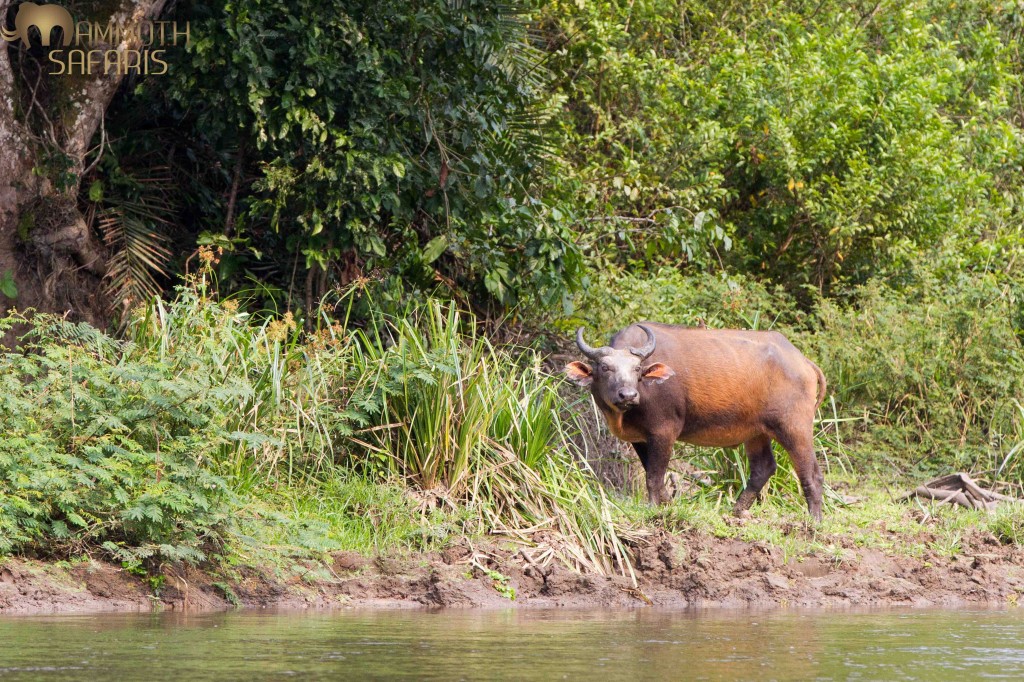
We spent a morning on a boat cruising the Lekoli River which is a great way to see birds and animals. This forest buffalo allowed us to get a few photos before moving off.
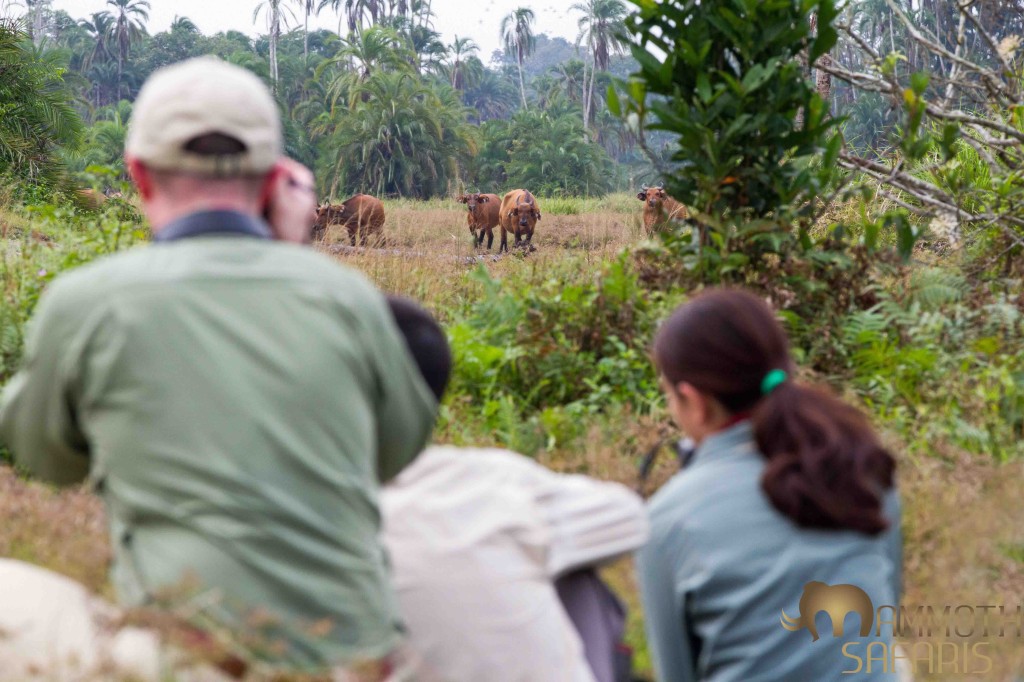
A small herd of the colourful forest buffalo on the edge of the Lango Bai. It is always a good idea to have some distance between yourself and the animals you are viewing.
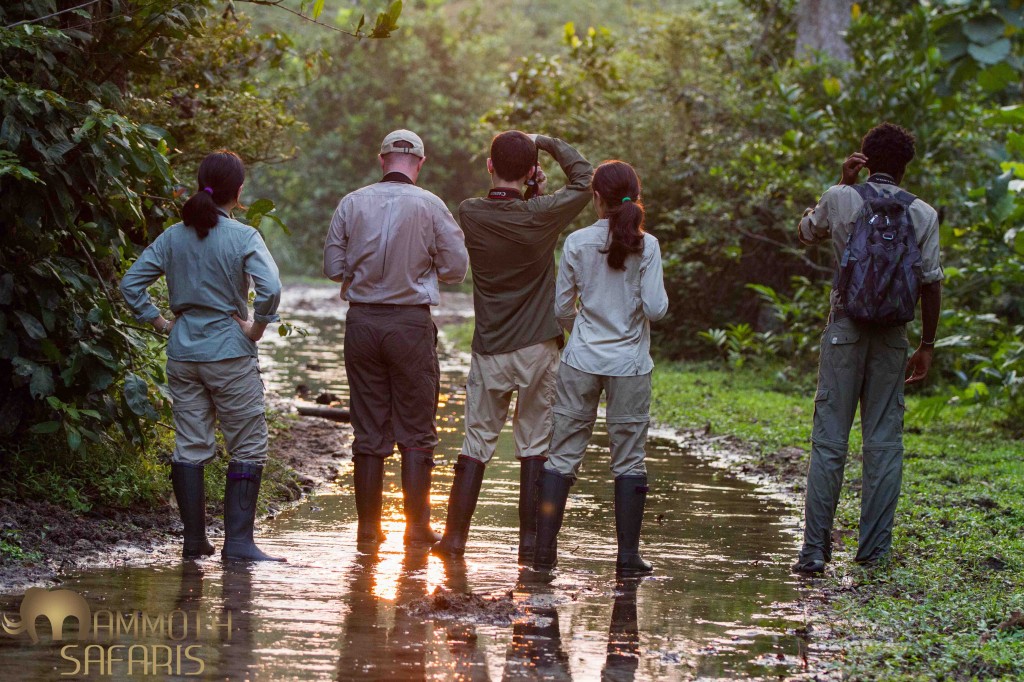
Walking the elephant boulevard, at Lango Camp with our guide Karl Diakite. This ancient trail is still followed by elephants today to get to the saline bai right in front of the camp.
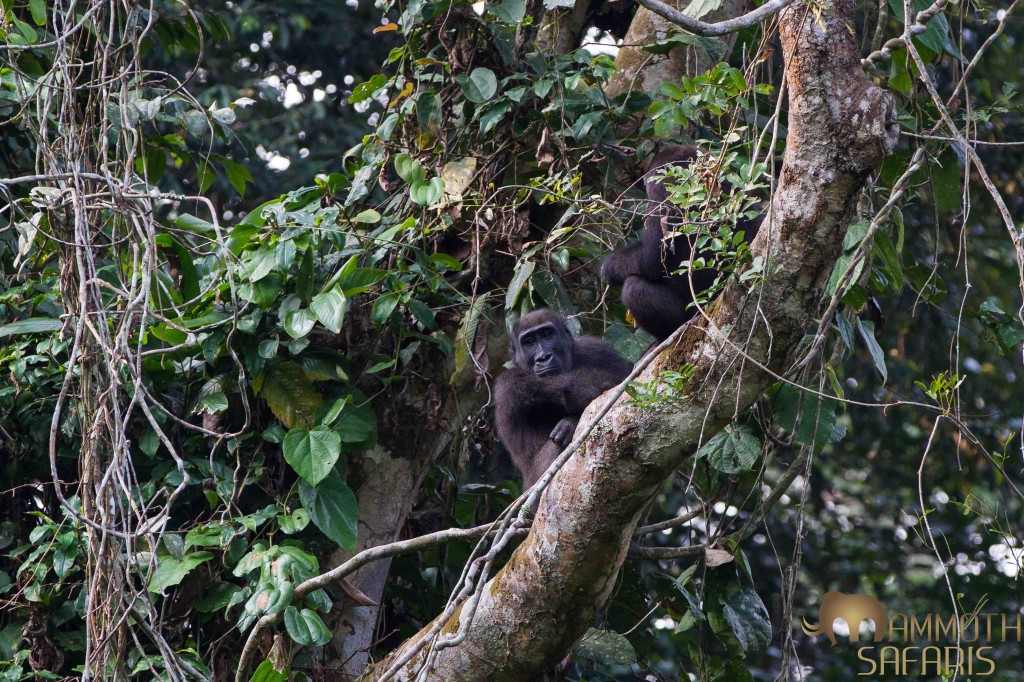
It is not always easy to get a good sighting of the lowland gorillas, after hours of tracking and some patience we got to see some incredible interaction between these two individuals.
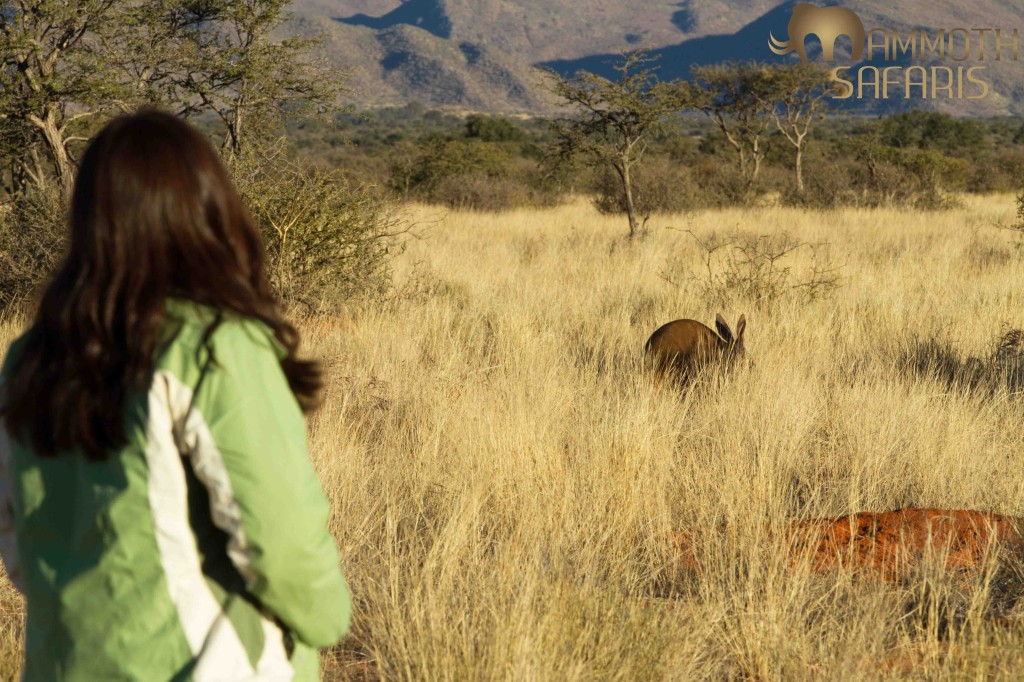
One of the most unique activities that is best done in the South African winter is to spend time on foot with an aardvark as he goes about his search for food in the early afternoons.
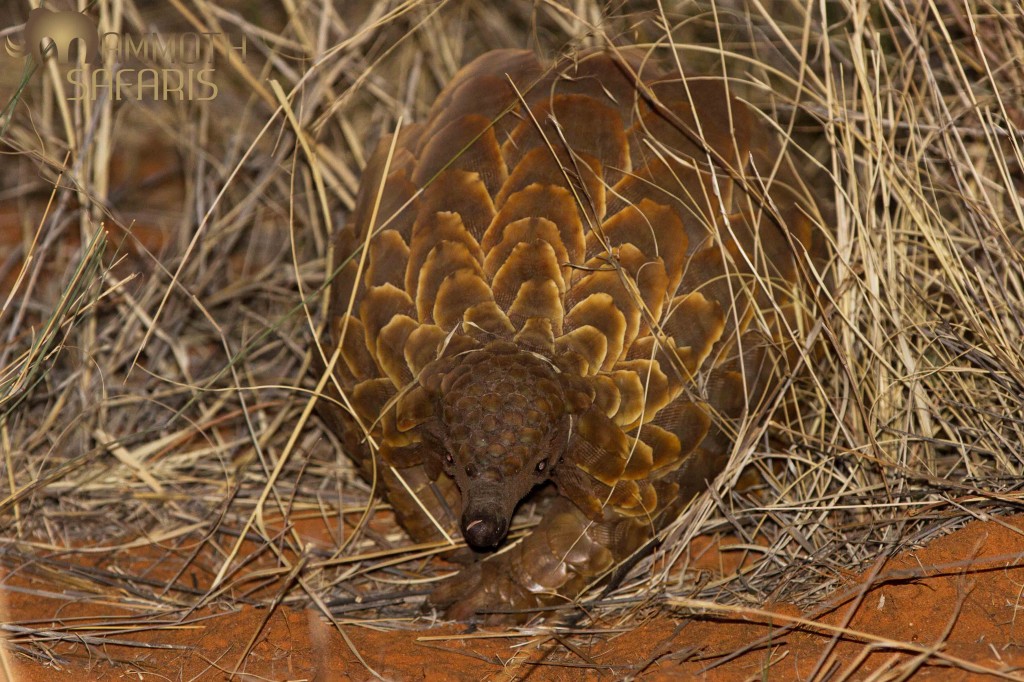
Its one of those creatures you hear about but most people never get to see. We were extremely fortunate and special thanks to the team work from the guides at Tswalu to make this dream a reality. What an amazing animal!!!

This incredible little gem, a Marico Sunbird was photographed outside The Motse lodge on Tswalu Kalahari.
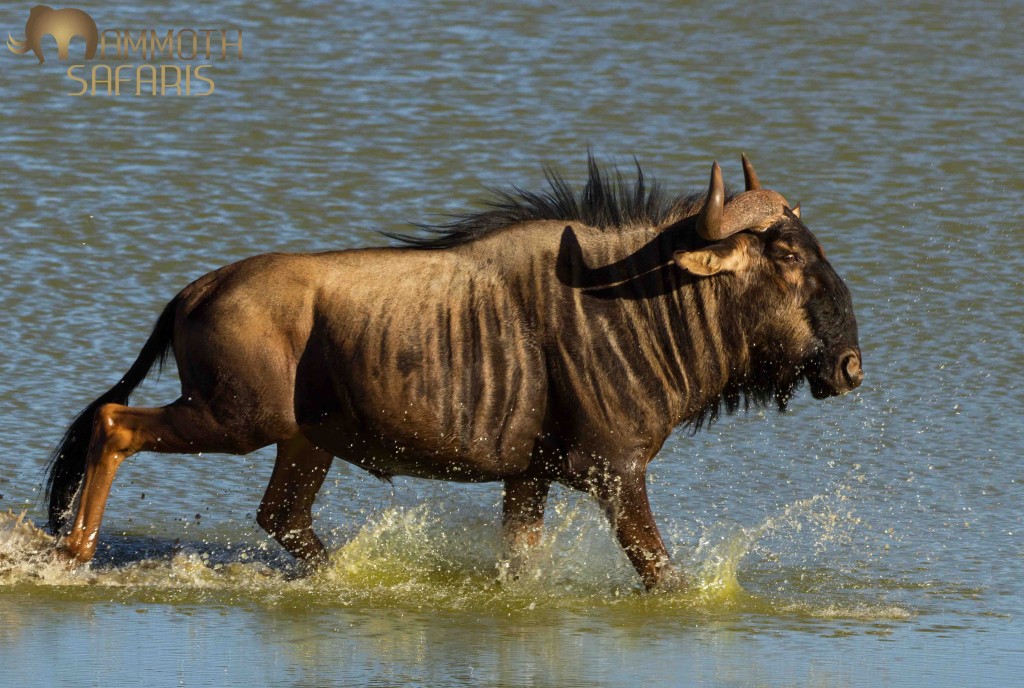
We watched a small group of wildebeest come down to drink at a small waterhole. It was a windy day and a gust of wind spooked them and they ran right through the water.
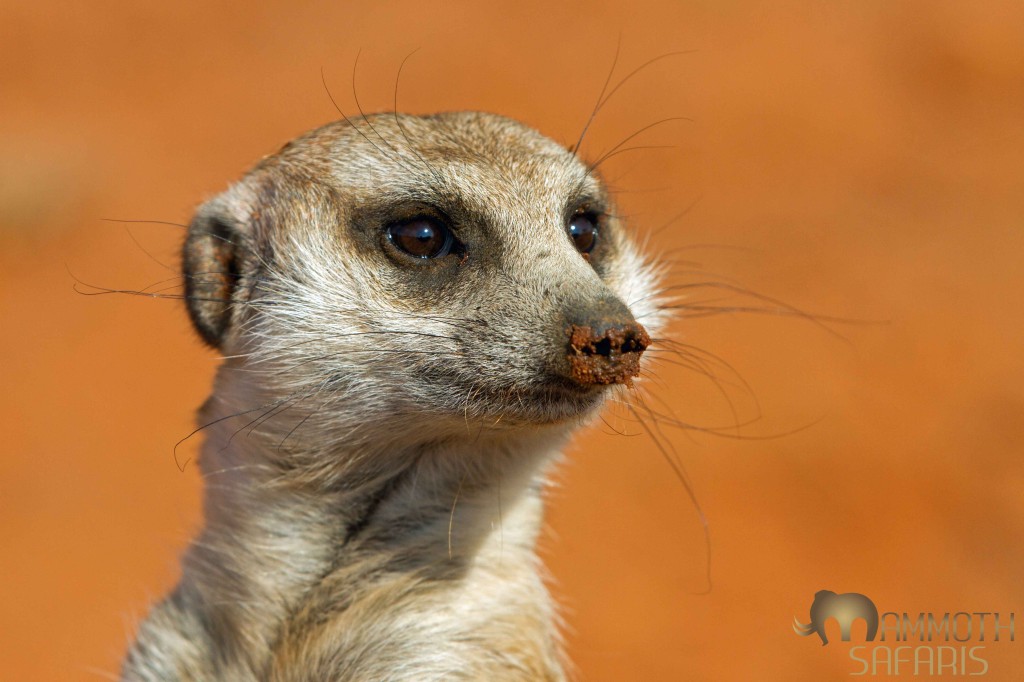
One of my favourite things to do at Tswalu is spend time with these magnificent little creatures. The habituated groups of meerkats provide hours of entertainment and a brilliant photographic opportunity.
Tswalu Kalahari – A vast and magical land
I recently had the privilege to spend a few nights in Tswalu and after hearing so many great stories I was not disappointed. Situated in the heart of the Kalahari wilderness lies one of the greatest conservation success stories in Southern Africa. This vast area offers a safe haven for many endangered and rare species while protecting an area of unique diversity and beauty. The sheer size of the reserve, together with the arid environment and nomadic nature of the game creates a sensational wildlife experience. It is matched by personalized service, attention to detail and luxurious accommodation that overlooks this magical landscape.

One of the highlights at Tswalu is spending time with the meerkat’s. In the late afternoon they head back to the safety of the burrow but before they go down they spend a few moment gathering the warmth of the sun. This is a fantastic photographic opportunity for any enthusiast or amateur.

As evening approaches the meerkat’s slowly move underground as the temperature starts dropping. This individual enjoyed the last bit of warmth from the sun before heading off for the evening.

The fine, red soil of the Kalahari adds some great colour to your photographs. We spent some time around a waterhole where during the heat of the day a variety of animals came down to drink. This wildebeest kicked up a bit of dust moving away from a buffalo.

After almost two hours of tracking, our experienced guide and tracker team, Richard and Jonas managed to find this magnificent Black Rhino cow. Usually preferring thicker vegetation she allowed us to get some great views of her and her calf in the scrubby Kalahari vegetation.

I can say with confidence that Tswalu has to be the best destination in Africa to see the highly sought after aardvark. Winter is the best time as they come out in the late afternoon or early evening. On one afternoon we had the opportunity to see three different individuals and spent some time sneaking up on foot to try and get a few photos. It really is a magnificent creature.

The Motse, built of local stone, rich red clay and traditional Kalahari thatch is nestled at the foot of the Korannaberg mountains, facing westwards across the vast grasslands of the Kalahari.

The main guest area is a spectacular place in which to sit back and relax with a drink and enjoy a magnificent African sunset over the Kalahari savannahs.

Set amidst two rolling mountain ranges, Tarkuni is an exceptional choice for families or groups of great friends. Tarkuni creates an oasis of serenity in the desert. The home has its own dedicated team including a host and private chef to ensure a completely personal service. A private vehicle, personal field guide and tracker ensure an equally bespoke safari experience.

This boma was created for memorable evenings with close family and friends sharing great food and famous South African wines. I absolutely love sitting around a camp fire in the evening under the African stars reminiscing about the days adventures.
Odzala-Kokoua National Park, Congo
Deep in the dense Congo rainforest, there exists a place where time and space seem to be suspended. A place so exotic and unspoiled, a rainforest so remote and reviving, that it seems both timeless and serenely apart from the spinning world we call home. Read more
Do Fairies Exist?
The Namib is widely considered to be the world’s oldest desert and visiting this harsh, but fragile environment is definitely one for the bucket list. Read more
Kwandwe reveals its magic
One of the most amazing things about revisiting a place after a long absence is the sense of adventure in rediscovery – what has changed, why and what is new? This is a short piece on my rediscovery of Kwandwe Private Game Reserve. Read more
Londolozi – The Land of Leopards
It’s been almost 2 years since I left Londolozi, having spent some of the best years of my life in the wild there. I’ve really been looking forward to seeing the people and revisiting the place I once called home – and now here I am.
The new Pioneer Suites are just brilliant and we’ve settled in and already enjoyed a few sightings of bushbuck, buffalo and kingfisher in the lush Sand River in front of us – a taste of what’s to come on the game drives over the next few days.
What a pleasure it’s been driving out this afternoon, with memories flooding back of wild happenings on virtually every inch of the reserve. Our guide, Sean and tracker, Andrea work so well together and delivered some special moments. First, we were positioned well for a superb sighting of elephants in the golden afternoon light before we encountered the Tsalala pride. Two of the lionesses have come off second best to hyenas and lost their tails making them look a little odd. Ever-changing lion pride dynamics can make it tough for even battle-hardened lionesses like these to survive.
We’re on morning drive, taking a break with a welcome cup of coffee when Andrea comes from tracking a leopard with the exciting news that he’s found it! It’s a male that’s hauled an impala up into a large marula tree hidden on the banks of a small drainage line. There’s a huge abandoned Hamerkop nest (a unique African bird) in a fork in the tree – the moment is set for one of those perfect questions, the barn door is wide open as the guide in the vehicle next to us fields the question: “Is that the leopard’s nest?” This happens far more often than you’d think and allows us the chance to have a chuckle with the poser of the question! As we do, the leopard shifts and some of the twigs from the nest fall to the ground. This tempts a hungry hyena to run in and scavenge fallen pieces of impala, but only to find dead dry unpalatable sticks. As we sit absorbing the elemental scene, Andrea skilfully spots a second leopard, one known as the Vomba female. We had been following her tracks earlier but Andrea had found the male instead. This led to the presumption that she had killed the impala, but with the male being almost twice her size, he had managed to steal the carcass from her.
We are having yet another incredible morning on Londolozi, just as I remembered it…
It’s now dinner in the boma – nothing better than standing around a fire with drink in hand celebrating the day’s adventure. The beauty of being outside is that every now and again I can look up, see the southern starry sky and remind myself of where I am. It ends up being as festive an evening as I remember. The strum of the guitar, blank stares into flickering flames and distant whoops of hyena will always remind me of Londolozi.
Sublime escape to Wild Mountains – Bushmans Kloof Wilderness Reserve
We arrived just a day after the Cape Leopard Trust had come and gone. Besides the leopard that are being monitored in these wild mountains, they are now attempting to collar the other key predator, the Caracal. This in an effort to learn more about this widespread, but elusive cat which ranges on Bushmans Kloof.
We spent 3 days relaxing in the lush and luxurious surroundings of the lodge – with the bush all very dry in late summer. There was however huge bird activity at the statuesque fruiting fig trees that dominate the one side of camp and the resident Spotted Eagle-owls were in their usual roost above the safari shop! On one of the rock art trails I encountered something in miniature – an endemic long-proboscid fly pollinating one of the only flowers on show – delicate white Pelargoniums. With a hint of early rain for the winter season and the sighting of some young Bontebok, it looks like Bushmans Kloof is in for a good and productive winter.
Although a good 3-4 hours drive north of Cape Town, Bushmans Kloof is well worth the visit – step back in time and relax. We also stopped at one of the numerous farm stalls along the way to stock up on the first new citrus of the season and loads of locally-made jam, dried fruit and honey!
Exploring Africa
With so many of the admittedly wonderful wildlife destinations on the continent now well-known and travelled, there is now an opportunity to be part of a pioneering tourism venture and really explore the green heart of Africa.
Mammoth Safaris will be travelling to the Republic of the Congo to support the opening of the new Wilderness Safaris camps as they start sharing true African Rainforest Safaris with their guests. We aim to help them make a difference to critical conservation efforts in the region. Already the positive feeling and drive from the local people has been inspiring.
The possibility of coming face to face with endangered Lowland Gorilla, floating past the cryptic, yet imposing Forest Elephant and having binoculars trained on a myriad of exciting forest birds is one that we have been looking forward to for a long time. With camera in hand we’ll be able to track the gorillas on foot, watch huge flocks of African Grey Parrot and hopefully snap some of the many elusive forest antelope or carnivores.
The certainty of adventure by boat or on foot and that we’ll find something unexpected is a huge drawcard that should not be missed.
If you would like to join us in the Odzala-Kokoua National Park in search of adventure and something completely different, contact us and we’ll send you more detailed information on the camps and itineraries on offer.
Home
Disclaimer
Contact Mammoth Safaris
+27 78 152 9479
Mardale Farm
No.35 Viljoenshoop Rd
Elgin, Western Cape, South Africa
Secure Payments via:

Insurance provided by:


